- The ultimate Ireland travel planning guide

- Ireland Food and Drink
- Things to Do
- Destination Guides
- Itineraries
- Packing Lists
- Seasonal Guides
- Where to Stay

Travel Tips
How to get around ireland without a car: everything you need to know.

When many people think of Ireland, they think of the vast countryside and the windy roads. There are endless roads to explore and cities spaced out around the country that you’ll want to visit. However, you may wonder if it’s possible to travel to Ireland without a car.
Not everyone is comfortable driving in Ireland , and that’s especially true when they drive on the left side of the road, and the steering wheel is on the right side. It took me three visits before I was brave enough to learn how to drive there, and that’s because I was determined to do my own road trip around Ireland .
However, even though I know now how to drive in Ireland, it was fairly easy to spend one week in Ireland with no car. Getting around Ireland without a car just requires a little advance planning. This article explains how to get around Ireland without a car and goes over the different options you have when visiting the country so you can still get to where you want to.
This post was first written in March 2021 and last updated in August 2023.
Table of Contents
How to Travel in Ireland Without a Car
Let’s go over whether or not you need a car in Ireland for your trip.
Do You Need a Car for Getting Around Ireland?
There are plenty of public transportation options to get around Ireland without a car, as you’ll see in detail below. However, there are a few times I recommend having a car.
If you plan to go hiking in Ireland , it’s likely not going to be easy to get to the trailhead without a vehicle. Some bus routes are available for more popular hikes, but you’ll want to rent a car for at least a few days if you have a couple of hikes in mind.
The same is true if you’re hoping to see some smaller, off-the-beaten-path towns. There is likely little to no public transportation method to get there.
For example, when I wanted to visit the very small town my grandfather is from, my only option was to wait for one bus that came that day and have to spend the night because I would have had to wait for the next bus the following day. I decided the better option was renting a car to leave when I wanted.
If you want to do a scenic drive in Ireland on your own terms, you’ll also need a car. When I did my road trip around Northern Ireland , I needed a car to access some of the hard-to-reach spots as well. You’ll want to check out my packing list for Ireland to help you cut down on unnecessary items before your trip.
That said, here are various ways to enjoy an Ireland itinerary without a car, whether you’re spending 7 days in Ireland or longer.

Join a Group Tour
The most obvious option to get around touring Ireland without a car is to join a group. Taking part in a group tour of Ireland has several advantages, and this is especially true if you’re traveling without a car in Ireland outside of the major cities.
Although Ireland is a small country, its highways congregate around the cities. The countryside can be hard to navigate, with one-way lanes and poor signal in far-flung places like the stunning Irish west coast.
You save yourself the time and hassle of planning a rural area trip by taking a guided tour, and you’ll have a vehicle take you door-to-door! Thanks to the knowledgeable tour guide, you’ll also learn plenty of fun facts about Ireland .
You also won’t have to do too much research since your guide will know the best spots and answer any burning questions you may have. They will also introduce you to locals, giving you an insider’s view of Ireland.
With other travelers in the group, you’ll have a more sociable time than if you traveled solo. Group tours are a common method of transportation in Ireland for tourists, and they’re also an excellent way to see famous landmarks in Ireland if you don’t want to drive yourself. Those who get stressed out thinking about driving in a foreign country find this the best way to get around Ireland without a car.
Here are a few I recommend:
- You can take a quick 2 Day Northern Ireland tour to see Belfast, Antrim Coast, and Giant’s Causeway.
- This 4 Day Southwest Ireland tour is perfect for adding to a stay in Dublin so you can see places like the Cliffs of Moher, Blarney Stone, and Killarney National Park.
- To see more of the country, join this 6-Day Southern Ireland tour that goes to Bunratty Castle, the Ring of Kerry, Adare, and more.
Before you go on a group tour, read more about what not to do in Ireland as a tourist !
Train Travel in Ireland

The train is a fantastic method of transport when looking at how to get around in Ireland without a car. Not only is it handy when you travel in Ireland without a car, but the railway goes through some breathtaking scenery.
I will say that if you’re used to train travel around Europe in general, this is a bit different. Trains aren’t easily available to connect you from city to city or run on an hourly basis, but you still can get around Ireland on a train. Train travel is an activity many people want to put on their bucket lists for Ireland , as the views are stunning in the countryside.
What Are the Ireland Train Routes?
The Irish Rail operates over a dozen train routes, and the railway runs in every direction.
These are some of the most popular:
- Dublin to Belfast (although Belfast is part of Northern Ireland, a British territory, the two countries jointly run the route)
- Dublin to Galway
- Dublin to Cork
- Dublin to Limerick
If it’s the scenery and not so much the destination you’re interested in, you won’t be disappointed when traveling to Ireland without a car. The Dublin to Rosslare Airport journey is an exquisite route through Eastern Ireland. The journey between Derry~Londonderry and Coleraine on the Causeway Coastal Route is also sublime (and you’ll have plenty of options for where to stay in Londonderry ).
How Often Do the Trains Run?
On Sundays and public holidays, trains come by much less frequently. In most cases, trains between Dublin and the major cities arrive anywhere from four to 15 times a day. Check the timetable before booking anything when traveling around Ireland without a car.
Cost of Ireland Train Travel

A cross-European comparison revealed that public transport in Ireland is generally affordable, which is great when you want to figure out how to see Ireland without a car. It’s more expensive than Portugal or Germany but generally much cheaper than England, France, or Denmark.
The most popular routes give you a good idea of what you can expect to pay. The range is quite broad, but you can expect to score on the lower end if you follow our bargain-hunting tips.
- Dublin to Belfast — from €17.99 to €38.00 ($21.71 to $45.85)
- Dublin to Galway — from €17.99 to €36.65 ($21.71 to $44.22)
- Dublin to Cork — from €21.49 to €59.20 ($25.93 to $71.43)
- Dublin to Limerick — from €14.99 to €47.80 ($18.09 to $57.67)
There are some ways for you to save money when you visit Ireland without a car. It won’t surprise you, but booking your rail tickets at least seven days in advance is a great way to save some cash.
The Irish Rail’s website has a section indicating the lowest online fares available. Round-trip fares are also substantially cheaper than buying two standard one-way tickets unless you’ve scored a deal on one-way fares.
Eurail passes are valid in Ireland, which is fantastic if you’re on a multi-country trip. Irish Rail also offers a family ticket for two adults and four children.
The Trekker Four Day pass also gets you four consecutive days of unlimited travel for €110. The Explorer Pass offers five days of unlimited journeys out of 15 consecutive days for just €160 for an Adult and €80 for a child. Both of these passes are only available at ticket offices.
How Long Does it Take to Travel by Train?
Like most European countries, Ireland’s relatively small, so it won’t take too long to get from A to B. Most journeys last less than three hours.
- Dublin to Belfast — 2.5 hours
- Dublin to Galway — 2.5 hours
- Dublin to Cork — 2.5 hours
- Dublin to Limerick — 2 hours 45 minutes
You can also join in on day tours such as a train and bus trip from Dublin to the west coast or a train to North Ireland .
Look up train times and buy tickets online.
Bus Travel in Ireland

Bus travel is a much more widespread form of public transportation in Ireland than hopping on the railroad. Many people consider it the best way to see Ireland without a car due to how many different places you can go.
Buses are much cheaper and cover many of the small towns the railway doesn’t when looking for how to travel Ireland without a car. The country is celebrated for its rural charm, so there may come a time when you need to jump on a bus.
This doesn’t mean that you should neglect train travel but rather that you should be ready to combine it with bus journeys. While you’ll find a direct line from Dublin for most significant towns, there’s no such thing between Cork and Waterford or Killarney and Limerick. In these cases, you’ll need to use the bus.
Bus Éireann is the national operator for bus travel in Ireland, transporting passengers to more than 3000 destinations in Ireland. While buses are subject to traffic, they can take the same time as trains and are cheaper when traveling in Ireland without a car.
The cost decreases further when you purchase an Open Road Tourist Travel Pass . For €60, you can travel on three days out of six (you only travel on three of the six days the pass is valid for); for €126, you have unlimited transport on seven out of 14 days. Many people choose this method when looking for how to travel to Ireland without a car.
Exploring Dublin Without a Car

Visiting Ireland without a car is especially easy in Ireland’s capital city, Dublin. The city center is small, so you can easily walk from attraction to attraction while learning fun facts about Dublin . If you stay in a central Dublin hotel, you may not even need public transportation.
If you only visit Dublin for a day , I don’t recommend going through the hassle of renting a car. This is especially true if you spend a busy holiday like St. Patrick’s Day in Dublin .
But if you’re planning to go a bit off the beaten track when staying for 3 days in Dublin or longer, you’re likely to need some other form of transport. The public transport system is very efficient, so you shouldn’t have any difficulties getting around Dublin, Ireland without a car.
Traveling by Bus
Unlike many other European capitals, you won’t find a subway or underground in Dublin’s historical heart. This means that the bus is your new best friend for public transport! You’ll want to read how to take a bus from the Dublin Airport to the city centre before you go.
Dublin Bus is the name of the public bus service. The bus stops have blue markers with the company logo. Make sure you flag down the approaching bus: it may feel a bit silly when you’re standing under the stop, but they don’t always stop automatically.
Before getting onto one of the double-deckers, count out the exact fare in coins — no cards or bills accepted, and they don’t give change.
Get a map to understand the different zones in the city. Stages 1 to 3 cover most of the city center and cost €2.15 (or $2.60). A trip between the center and the airport is €7 (about $8.45).
Tip : Book a hop-on-hop-off bus ticket if you’re just in town for the major sites or on a tight schedule. It’s a bit more costly than the public bus, but it is much more convenient (you won’t get lost or waste time walking from a bus stop to the attraction itself), and you’ll score discounts on attraction entrance fees.
Traveling by Bicycle

Cycling from site to site is eco-friendly, super affordable, and fun, and Dublin is one of the top 10 bicycle-friendly cities globally, thanks to 74 miles of bicycle tracks. A three-day pass to the city’s bike-share service costs just €5 (or $6).
Traveling by Tram
If you’re heading out of the city center, you can take the LUAS . This is Dublin’s tram system, which connects the suburbs to the heart of the city. The trams are fast, but they are very popular and crowded during rush hour. You’ll appreciate them when looking for things to do in Dublin in December , as you’ll stay nice and dry.
Traveling by Train
The train is best if you’re exploring the outskirts of the city since it’s designed for commuters, and it’s also convenient during the winter months in Ireland . You can try DART (Dublin Area Rapid Transit) trains for a trip to the pretty Malahide Castle or Howth. Just note that they can be packed in the mornings and evenings.
The Suburban Rail Network is best for trips to Dublin’s off-the-beaten-track commuter towns. There are fewer trains in the middle of the day and on weekends.
Traveling by Taxi
You won’t have any trouble finding a taxi cab in Dublin, and it’s certainly a comfortable way to get around. It’s ideal for late-night journeys and when it’s cold, such as when visiting during December in Ireland . Naturally, it costs more than taking public transport for solo travelers, but it might work out cheaper if you’re traveling in a group.
Save up to 50% off attractions with the Go City Pass ! It’s a great way to save money if you plan on visiting multiple sights in Dublin.
An Itinerary for Getting Around Ireland Without a Car

First, you need a public transport map when planning a trip to Ireland without a car. This helps visualize the distance between destinations and decide what order to follow.
A second pro tip is to base yourself in a handful of well-connected towns and take day trips into the surrounding areas rather than stay a night at every destination (there are plenty of day trips from Dublin as well as Belfast day trips to explore).
Here’s a sample Ireland itinerary without a car:
Stop 1: Dublin
Ireland’s capital city sits on the east coast. You could easily spend a week in Dublin, but try to get in at least three nights in Dublin, and that’ll give you enough time to explore Christ Church Cathedral and Dublin Castle , and The Old Library at Trinity College Dublin.
For convenience, book a hotel in the city center. This way, you don’t even need to use Ireland’s public transportation in the city. You can also check out some of the best bed and breakfasts in Dublin .
Stop 2: Kilkenny
Kilkenny’s not hard to reach when figuring out how to travel around Ireland without a car. The train arrives in an hour and forty minutes from Dublin, but you could also travel by bus, which is cheaper and takes the same amount of time.
St. Canice’s Cathedral and the impressive Kilkenny Castle are some of the highlights of a city tour . The town is compact, with sites within walking distance, so you don’t have to stay longer than a night.
Find a hotel in the city center.
Stop 3: Cork
There’s no direct train line between Kilkenny and Cork, but the bus takes just two and a half hours. Visit Cork’s attractions : the English Market, the Shandon District, and the ‘South Parish’ Walk, for instance.
While in Cork, take the train out to tour Cobh, the charming coastal destination with a museum dedicated to the Titanic. There’s also Blarney Castle, where legend holds that you’ll gain a silver tongue if you kiss the stone!
With so much to do, you won’t regret spending two to three nights staying in quaint Cork .
Stop 4: Killarney
You’ll reach Killarney within an hour and a half of leaving Cork, whether you go by train or bus. Try to stay in Killarney for at least two nights to see the city and take a couple of day tours.
Killarney is the ideal base for day trips to the eponymous national park, the Ring of Kerry , the Dingle Peninsula , and the Skellig Islands, all of which are beautiful. If you’d like to spend more time in the countryside, you can easily swap Killarney for the Skellig Islands.
Stop 5: Limerick

From Killarney, hop on the bus to Limerick (there’s no direct train connection). The journey takes just under two hours.
Many people skip Limerick, but that’s a pity because it has plenty of historic charm and artistic buzz. The medieval King John’s Castle and the Limerick City Gallery of Art are some iconic attractions.
Limerick isn’t a place you get FOMO over, but it is an unforgettable experience for those who visit.
You’ll want to book your hotel in Limerick in advance.
Stop 6: Galway
Once you board the train to Galway, you know you’re heading for the famed west coast of Ireland. The trip lasts just under two hours, and then you can check into one of the beautiful B&Bs in Galway .
When you’re ready to explore Galway , head to St. Nicholas’ Collegiate Church, which Christopher Columbus visited, and admire the Spanish Arch in the city walls.
Galway is a fantastic base for venturing into the rugged countryside of Ireland’s west coast. A day trip to the Cliffs of Moher is an unforgettable experience on the coast of Ireland.
Meanwhile, you’ll find tranquility touring the Aran Islands . You could also opt to spend time in the Burren, a desolate landscape that’s now a national park. Whether you only spend one day in Galway or have more time, you’ll want to stop here for a bit.
Budget one to two nights for a stay in Galway .
Final Thoughts on Traveling in Ireland Without a Car
As you can see, traveling in Ireland without a car is possible when you plan ahead. Whether you take the train, the bus, or a combination of public transportation in Ireland, you’ll still be able to access most of the country during your trip.
Marissa became obsessed with Ireland when she first visited in 2015, and has been back numerous times since to explore more of the Emerald Isle. She started this site to help others plan their trip to Ireland based off her experiences.
12 thoughts on “ How To Get Around Ireland Without a Car: Everything You Need to Know ”
Excellent help for travelling without a car. Thank you. When the time comes, can we ask some questions?
Of course, I’m always happy to help!
I’m going in June and will need to get to Castletownbere from Dublin.
Hi Peggy, I’m not familiar with that area but upon a quick look online, it looks like you could take a bus, given it will take a bit. Perhaps a car rental might be the best choice for that distance.
Hello, I am going with a friend on March 22 to the 25th 2022. I am trying to find a balance between being able to see things not on the normal beaten path. I would like to go Dublin to Galway and then head north to Clifden. Not sure what is available for public transporation from Galway?? any ideas??
Hi Sheilah, you can take a bus from Galway up to Clifden, but I’m not sure any go direct. You may need to connect with another bus unless you decide to rent a car just for the day, which may be easier!
We are planning a trip to Ireland for 2023, flying into Shannon Airport. We are wondering if there is good Train and Bus service from the Airport.
You can take a bus to the city center, but there are no trains available from the airport.
Hi! What a great article. Very helpful. I’m planning a 30 day trip to Ireland this fall and would prefer to use mostly public transportation. But I have a well behaved 5 pound dog I’ll be traveling with. Do you know if he can go on trains and busses in a carrier?
What a beautiful time of year to go! I’ve always left my dogs at home, so I can’t say from personal experience. However, a quick search online shows that it does seem small dogs may be allowed on most public transportation. I would confirm this by contacting the bus and train companies you’ll be using to ask them first so there are no surprises.
Hi there, This article is really helpful & packed with good info. We’re heading to Ireland this coming November to January, so we’ll be spending our time there, during part of the Irish Winter. We’ve decided to not rent a car, because there’s a car rental shortage at present and also, the prices are so extreme for rentals, insurance, rental bond etc;. Much of these fee increases happened because of Covid and more recently, because of rising inflation/general rising costs. We are travelling around much of Ireland and we plan to do this by way of train, bus, shuttle bus services/tour bus services and finally, taxi. Most of the places we’re heading to, are on the train and bus lines, but some are not, so this is where we’ll make use of a taxi or two. We’ve done the maths and we’ve come to realise, that it will still work out much cheaper to do our trip this way, as opposed to hiring/renting a car for approx 3.5 to 4 weeks. May i ask, based on what i’ve stated here, what are your general thoughts and do you have a better idea/option/tip for us? Thanks in advance. Annie
What a fun trip! I’d love to go back and visit for that long. I do agree that you don’t need to rent a car the entire time, as that will really add up. However, you may want to do a daily rental here or there, or join a bus tour which will take you to some tourist attractions.
Leave a Reply Cancel reply
Your email address will not be published. Required fields are marked *
Save my name, email, and website in this browser for the next time I comment.
- EXPLORE Random Article
- Happiness Hub
How to Get Around Ireland Without a Car
Last Updated: December 9, 2020 References
This article was co-authored by wikiHow staff writer, Hannah Madden . Hannah Madden is a writer, editor, and artist currently living in Portland, Oregon. In 2018, she graduated from Portland State University with a B.S. in Environmental Studies. Hannah enjoys writing articles about conservation, sustainability, and eco-friendly products. When she isn’t writing, you can find Hannah working on hand embroidery projects and listening to music. There are 11 references cited in this article, which can be found at the bottom of the page. This article has been viewed 2,632 times.
Ireland is a country in Europe known for their expansive countryside, delicious food, and rich history. Traveling within Ireland can seem intimidating, especially if you don’t have access to a car. For longer trips, use the train, bus, or ferry to get yourself around the country and the islands. For trips within the city, use a bike, taxi service, or a walking tour.
Traveling Around the Country

- To purchase your rail pass ahead of time, visit https://www.raileurope.com/pass/ireland-pass-5920
Tip: You can also buy one-way rail tickets from city to city. These range from $15 to $45 (€13 to €40) depending on where you are going.

- Depending on where you are going, bus tickets between major cities can range from $10 to $60 per person (€8 to €57).
- To see bus schedules in Ireland and purchase your tickets ahead of time, visit https://buseireann.ie/

- If you have specific places you’d like to go or you want to plan your own itinerary, a tour group may not be for you.

- Ferry tickets vary in price based on how long the journey is and what company you purchase them through, but they are usually around $27 to $33 per adult (€25 to €30). [5] X Research source
- To find ferries going to your destination, visit https://www.waterwaysireland.org/

- You can also fly to the Aran Islands from Dublin, but it may be faster to take a ferry.
Making Shorter Trips

- If you are staying in Ireland for a long period of time, purchase a Leap card. This card lets you load money for bus tickets onto it and gives you a discount each time you use it.

- If you use a ridesharing app like Lyft or Uber, you will only be able to book a registered taxi or limousine. Use apps like lynk or FREENOW to book taxis straight from your phone and skip the middleman.
- Taxis usually charge an initial fee of €3 or €4 and then charge anywhere from €1.45 to €1.80 for each kilometer traveled. [9] X Research source

- DART train tickets cost $3 (€2.69) for a ½ day pass.
- Trains in Dublin run from 6am to 12am Monday-Saturday and 9am to 12am on Sundays.
- You can view a map of the DART rail line by visiting https://www.dublinpublictransport.ie/dublin-train-map

- The age restrictions for renting a motorcycle or moped can vary, but usually you must be older than 23 to rent one.

- You can also join a bike tour group if you want to enjoy some guided sightseeing.
Tip: Remember that people in Ireland drive on the left side of the road, so that is where you should bike, too.

- You can find walking tours near you by visiting https://www.irelandwalkhikebike.com/guided-tours-of-ireland/
Expert Q&A
- Book your train, bus, and ferry tickets online ahead of time for a better deal. Thanks Helpful 0 Not Helpful 0
You Might Also Like

- ↑ https://www.ricksteves.com/travel-tips/transportation/trains/ireland-rail-passes
- ↑ https://www.ireland.com/what-is-available/getting-around-ireland/articles/public-transport/
- ↑ https://www.infiniteireland.com/getting-around-ireland/
- ↑ https://www.ireland.com/about-ireland/travelling-within-ireland/travel-by-water/
- ↑ http://www.aranislandferries.com/times_mor.php
- ↑ https://www.ireland.com/en-us/about-ireland/travelling-within-ireland/getting-around-ireland-by-air/
- ↑ https://www.transportforireland.ie/fares/bus-fares/
- ↑ https://www.bettertaxi.com/taxi-fare-calculator/dublin/
- ↑ https://www.dublinpublictransport.ie/dublin-train-map
- ↑ https://www.ireland.com/en-us/about-ireland/travelling-within-ireland/vehicle-rental/
- ↑ https://www.ireland.com/en-no/what-is-available/touring-holidays/articles/coastal-touring/
About this article

Did this article help you?

- About wikiHow
- Terms of Use
- Privacy Policy
- Do Not Sell or Share My Info
- Not Selling Info
Solo Traveler
Solo travel tips, destinations, stories... the source for those who travel alone.
Lush and Magical Ireland Without a Car
January 31, 2022 by Janice Waugh

Lush and green. Cozy and charming. To describe Ireland is to describe a place you want to be. For those who are not keen on driving on the left side of the road, here's how to explore Ireland without a car.
My concern about driving on the left is not for when I first arrive. Concentration will ensure my safety. It's not for the time when I have really adjusted to the left. That would eventually happen if I gave it a chance. It is that in-between time that frightens me. The time when I've gained confidence, forget to concentrate, need to make a left turn, and instinctively end up on the right-hand side of the road. I anticipate moments of panic, of not knowing which is the correct side to be on. This is why I have always traveled Ireland, the UK, and Australia by bus and train.
Based on a reader request, here's how to travel Ireland without a car.

Table of Contents
The Lay of the Land: Ireland and Northern Ireland
Ireland is one Island that contains two countries. The Republic of Ireland in the south is known simply as Ireland. It occupies the majority of the island. Northern Ireland is part of the United Kingdom.
Dublin, the capital of Ireland, is located on the east side, about halfway up from south to north. It is famous for its literary history as James Joyce, Oscar Wilde, W.B. Yeats, Roddy Doyle, and other writers of note were born and/or lived there. It's also known for its beer as it is the home of Guinness. Trinity University, and especially its library, is famous. It's a city of deep history and fabulous cuisine.
Belfast, again located on the east side of the island, is the capital of Northern Ireland. Belfast has been called the literary capital of the United Kingdom. Its history runs deep as well but it is the more recent history of “the troubles” that is most evident to a traveler. Black Cab Tours, the murals on the Peace Walls, and other public installations tell the story. Again, it has an exceptional food scene and is known for great pubs.
All of Ireland, north and south, is known for rich, green landscapes, dramatic coastlines, and the friendliness of the people. They are famous for pubs, great music, and good craic (“crack”) which is basically fun, intelligent, and witty conversation.
Here are some posts on specific parts of Ireland and Northern Ireland you might enjoy.
- Solo Travel Northern Ireland: Tips for Belfast and Beyond
- Exploring Ancient Ireland: Loughcrew, Hill of Tara & 6 More Highlights
- Dublin, Cork & Galway: Exploring Ireland Solo
- Of Gobbins and Giants: Northern Ireland’s Causeway Coastal Route
- Solo Travel Destination: Lisdoonvarna, Ireland
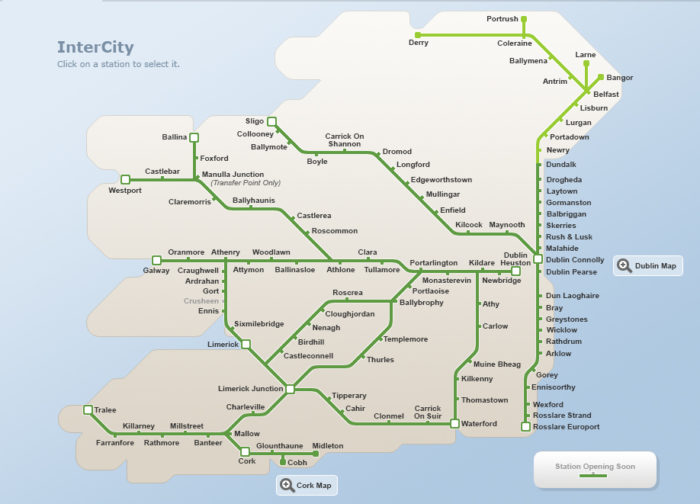
How to Travel Ireland Without a Car
You can get just about anywhere in Ireland and Northern Ireland by bus or train. The train network, as you can see above, is quite good; however, its primary purpose is to serve the cities. The bus network gets you into the villages and rural areas which, for many, is the reason they go to Ireland.
While the two countries can feel like one when you're there, they are separate. Ticket booking is done on different sites. The trains in Ireland are run by Iarnród Éireann Rail , Irish Rail. Buses are run by Bus Eireann . In Northern Ireland, Translink is your point of purchase for both buses and trains.
As with most travel, booking in advance will save you money. Bus travel is less expensive than train travel. If you're traveling between the larger cities, you will likely have a number of schedule options each day, though fewer on Sundays and holidays. If you're traveling on the less popular lines, frequency can become an issue.
There are, of course, numerous guided tours you can take to explore Ireland without a car. These have the advantage of an informative guide and the social experience of other travelers. However, if you want to go independently, here's what you need to know.

Things to Know about Train and Bus Travel in Ireland
Combining train and bus travel will take you just about anywhere in Ireland without a car.
- Travel between Dublin and Belfast . It takes about two hours to travel between Dublin Connolly station and Belfast Lanyon Place (formerly known as Belfast Central).
- Discounts between Dublin and Belfast . If you anticipate some back-and-forth between Dublin and Belfast, you can save money by buying Carnet tickets. It's not a pass. They are books of prepaid tickets, so they can be shared.
- Dublin Connolly is the station for north/south travel and trains headed for Belfast, Sligo, Wicklow, Wexford, Dun Laoghaire, and Rosslare.
- Heuston station is the terminus for trains heading west & southwest from Dublin to Cork, Limerick, Galway, Kilkenny, Waterford, Tralee, Westport, and Ballina.
- Trekker 4 Day 110 Euros for consecutive days of unlimited travel on all Iarnród Éireann services in the Republic of Ireland from the date of issue on the ticket
- Explorer 5 days of unlimited travel out of 15 consecutive days on all Iarnród Éireann services in the Republic of Ireland for only €160 for an Adult
- Leap Visitor Card 1-day, 3-day, or 7-day cards. These have more complicated conditions.
- Eurail Your Eurail pass works in Ireland.
- Traveling with a bike. Here's bicycle travel information from Iarnród Éireann.

Things to Know about Train and Bus Travel in Northern Ireland
- North America to Dublin . There are a few seasonal, direct flights to Belfast but, year-round, most direct flights from North America go into Dublin.
- Dublin Airport to Belfast . While there is a train between Dublin and Belfast, the most efficient way to get to Belfast from Dublin airport is by bus.
- Belfast to Derry. The train takes just over two hours. A seat on the right side when going north to Derry is recommended for the views. You'll be passing the Giant's Causeway.
- Belfast to Giant's Causeway . This trip is worth it, however, it requires a train to Colraine and then a bus to the Giant's Causeway.
- iLink Card . iLink is a smartcard that you can top up with daily, weekly, or monthly travel options. From the Translink site: “If you travel by bus and train within specified zones, using iLink could be better value for money than buying separate bus and train tickets. Check out the prices to see if iLink suits you.”
- 3 Day Flexi Ticket for trains. This is an odd one but, depending on your plans, it could be useful. It offers unlimited travel on any three days out of seven days between two chosen rail stations within Northern Ireland.
- Special offers . Always check Translink for special offers .
- Students over the age of 24 . If you're a full time student over the age of 24 you can get a 24 Plus Travelcard and save.
- Goldline Goldline buses are express buses for traveling between cities that are operated by Ulsterbus.
- Ulsterbus . They have the Goldline service but go beyond the cities with their regular service. They have a journey planner to help you sort out your travel plans.
- Rambler Day Ticket . This works for Sundays only. The price is £9.50. The Bus Rambler Day Ticket gives you a hop-on, hop-off kind of service that allows you to explore Northern Ireland’s most spectacular scenic areas with unlimited travel on Ulsterbus, Goldline, and Metro. In past years, they have extended the service to all days during the summer.

Readers Top Tips for Travel in Ireland without a Car
As we often do, we went to the Solo Travel Society on Facebook to get their suggestions for for traveling Ireland without a car.
- Kate recommends Connemara. It's an easy bus ride from Clifden to the Inishbofin ferry in Cleggan. You can also grab the bus to the great town of Westport or grab a taxi tour to Achill Island. From Westport, you might consider Donegal town. I took a wonderful day tour from there to Slieve League and Glenveigh national park.
- Alma recommends Sligo . There are wonderful beaches where the Atlantic waves are huge but there will be no tourists. Visit Lough Gill, Benbulben, Yeats' grave. There's a great bus service from the west to Dublin so I'd explore the city and enjoy the craic before leaving.
- Grace recommends Athlone . In the heart of Ireland is the world’s oldest pub—Sean’s Bar. You can practically hop from one city to another by bus.
- Barb recommends B&Bs . The rail system is wonderful. When you arrive at the town you plan to visit, go into the tourist information center and tell them you need a bed and breakfast. They'll accommodate your budget and all those with the shamrock sign are great and government approved.
- Tom recommends warm clothes . Take cold weather clothing. When I was there in June many years ago, temperatures were quite frigid.
- Gail recommends hostels for day tours . Look for day tours. Sometimes hostels set up their own tours.
- Susan recommends Inishbofin . Take the ferry to Inishbofin and spend a few days there. It's a small, beautiful, not very developed island.
- Dianne recommends buying tickets online . Book a train ticket online at far less cost than buying at the station. A lovely trip is Dublin (Heuston Station) to Galway, 2.5 hours; day trip from Eye Square on the bus to Cliffs of Moher, the Burren, and a lunch in Doolin, County Clare. Galway is a stunning city with lots to see and do.
- Catherine recommends Belfast . Definitely go to Belfast. Easy to get to on public transportation.
- Lynda recommends taking the bus . I went to Clifton, Donegal, and Lisdoonvarna, only using buses on a budget. It's totally possible, just plan ahead and research. You can download bus timetables and routes and even purchase tickets online for special deals!
You may also want to read The Spectacular Isle of Skye Without a Car .
Sharing is caring!
Publisher Janice: info @ solotravelerworld.com
Editor Tracey: tracey @ solotravelerworld.com
Sales Simon: simon @ solotravelerworld.com
Get Solo Travel News & Deals
- Login to Your Advertiser Account
- Solo Travel Statistics
- Media & Speaking
- Privacy Policy & Disclosure

The content of Solo Traveler and any resources published by Solo Traveler are meant for entertainment and inspiration only. Please note that while we have advertising clients promoting destinations, products, services, trips and tours on Solo Traveler and that we endeavour to only work with companies in which we have confidence, we are not responsible for the delivery or quality of their products or services. Every person and every travel situation is different. Your safety, satisfaction and fun traveling solo are your responsibility alone and not that of Solo Traveler, its publisher, editor and/or writers.
PRIVACY POLICY & DISCLOSURE: In accordance with FTC guidelines, I disclose that I may be compensated if consumers choose to utilize links located throughout the content on this site. Additionally, some posts might be sponsored to support this site. Please do the appropriate research before participating in any third party offers. All opinions are my own. Please read our full Privacy Policy here.
- Search Please fill out this field.
- Newsletters
- Destinations
- More to Explore
Can You Travel Through Ireland Without a Car?
:max_bytes(150000):strip_icc():format(webp)/reflectivemood-56a3c66b5f9b58b7d0d3ad64.png)
Bernd Biege
Can you manage a holiday in Ireland by just using public transport? You can, but beware: The best way to travel around Ireland is by car—no contest.
What if a visitor does not want or simply cannot use a car? There are alternatives available, none of them perfect, yet a combination of road and rail travel is an interesting option.
Traveling by Bus
By far, the most sensible, budget-friendly and convenient way to travel Ireland without a rental car is using the bus, in Dublin and nationwide. Cross country services are numerous and a variety of ticket options, though at times confusing, can make bus travel very economical. Connections between the major towns are generally fast, frequent, and reliable.
Local services tend to be even patchier and require some planning if used for touring. Even major attractions might not get serviced more than once or twice a day. This is the curse on the tourism industry being geared towards independent car users.
If you plan on visiting several attractions in any area, enquire about organized tours at your hotel or local tourist office. In most tourist areas, these services are provided by Bus Éireann or local companies.
Getting There by Railway
While it is not impossible to travel around Ireland by rail, the choice of places to visit will be limited. Generally, the railway will bring you to a central destination, and from there you will have to rely on other modes of transport. More than likely, buses. Add the fact that Irish railways are not known for cheap fares or luxury, and bus travel becomes a sensible option in many cases.
But on longer journeys the train may be better value for money—travel times are usually shorter than on a bus, there are toilets on board, and you can stretch your legs by walking about a bit.
The main routes out of Dublin (Connolly and Heuston stations) are:
- Connolly to Belfast Central
- Connolly to Sligo
- Heuston to Ballina (via Kildare, Athlone and Manulla Junction)
- Heuston to Westport (via Kildare, Athlone and Manulla Junction)
- Heuston to Galway (via Kildare and Athlone)
- Heuston to Limerick (various routes)
- Heuston to Killarney and Tralee (via Mallow)
- Heuston to Cork (via Mallow)
- Heuston to Waterford (via Kildare and Kilkenny)
- Connolly to Wexford and Rosslare
The main routes out of Belfast are:
- Belfast to Dublin Connolly
- Belfast to Bangor
- Belfast to Larne
- Belfast to Portrush (via Coleraine)
- Belfast to Derry (via Coleraine)
The main cross-country routes are:
- Limerick to Ballybrophy (via Nenagh)
- Cork to Cobh
- Tipperary to Waterford
Note that there are also organized rail tours from Dublin to main Irish attractions available, these sometimes include accommodation and can be an alternative to a self-guided tour. If you are a fan of trains, be sure to check out our full guide to Irish train museums .
Bicycling Options
Travelling Ireland on a bicycle is an interesting proposition and was the preferred mode of transport for touring students in the 1970s and 1980s. Then the "Celtic Tiger" roared, and "no-frills-airlines" brought a massive influx of visitors. Suddenly road traffic exploded, making riding a bicycle on many roads definitely an adventure sport.
If you stick to the main roads, you will have to share these with enthusiastic (but not necessarily competent) other drivers and (even in the remotest areas) 18-wheelers. If you leave the main roads, you will find winding lanes with high hedges on both sides and sizeable potholes to navigate. And wherever you ride, you will have to face strong winds, frequent rain, and some long and steep inclines.
Should you still be keen on exploring Ireland by bicycle, here are some helpful hints:
- Always wear hi-viz clothing with reflective stripes.
- Never ride without reflectors and working lights between dusk and dawn.
- Never ride side by side with another bicyclist on winding roads—oncoming traffic cutting corners is a common hazard.
- Never take your eyes off the road for potholes, gravel, and other common hazards. Stop if you want to admire the scenery.
- Make sure that you have at least one change of clothing, and your valuables stay dry even in torrential or prolonged rain.
Gypsy Caravans
Gypsy Caravans were long touted as the "typical Irish holiday" (though most Irish people would not agree) and acquired an air of ethnic eco-tourism. Generally, a unique way to see a small part of the island. Temporary "gypsies" will have to stick to a certain area and a selection of roads. Consider this mode of transport only if you want to spend lots of quality time with your traveling companions!
Hiking or walking all over Ireland requires loads of time and stamina. It is not really an option unless you are planning a very long holiday.
Walking the way-marked trails of Ireland, however, is an option—several routes have been laid out and made accessible to the determined rambler. A good idea if you are used to hillwalking and have the time to go a considerable distance.
Hitch-hiking
While hitch-hiking should not be considered especially dangerous in Ireland, the usual precautions should be taken. But even the most optimistic hitch-hiker will soon find that the reluctance to pick-up strangers has increased in Irish drivers.
Related Articles
More related articles.

Traveling Ireland Without a Car: How to Get Around
Share this post!

When I was planning a trip to Ireland for ten days with friends, I was worried about getting around the country without a car. No one in my group was old enough to rent a car yet, so we needed to plan a trip where we were traveling Ireland without a car.
However, getting around Ireland without a car was surprisingly easy. We were able to go to five different cities plus the Cliffs of Moher using trains, buses, and a one-day tour.
Keep reading to learn about your options for traveling to Ireland without a car and just how easy it is.
Last updated: May 30, 2024
Published: March 13, 2024
Some links on this page are affiliate links , meaning I may earn a commission if you click the link or make a purchase through the link. This is at no extra cost to you. This compensation may impact how and where links are placed on this site.
⭐ GIVEAWAY ALERT: Daily Drop – my favorite free travel newsletter – is giving away a trip to Hawaii ! One lucky winner will get a 5-night stay for two at Mauna Lani Resort by Coral Tree Residences and $2,000 for flights and other expenses. Enter to win by September 24, 2024. This giveaway is not affiliated with or sponsored by Exponential Travels LLC
Are you looking for more Ireland travel guides?
- Cork travel guide
- Dublin Safety Guide
- Ireland Instagram captions
- Ireland Packing List
- Killarney travel guide
- Should you visit Dublin?
- Should you visit Galway?
Table of Contents
All Aboard: Traveling Ireland by Train

Traveling around Ireland by train is a great way to see the country and get around comfortably. The train system connects big cities and towns, so you can travel efficiently while enjoying the scenic landscapes outside your window.
Whether you’re going from Dublin to Cork or taking a leisurely trip along the coast to Galway , the train makes sure you feel relaxed and ready to explore.
Here are some tips for enjoying train travel in Ireland:
- Plan and book your tickets ahead of time for the best prices and to make sure you have a seat, especially during busy times.
- Irish Rail has an extensive network covering city and countryside areas so that you can experience different parts of the country.
- Check out the different types of rail passes for tourists, which can save you money if you plan to take multiple trips or travel for a while.
- Irish trains are known for their friendly vibe, so take the opportunity to chat with locals and other travelers.
- Look at the schedule in advance to plan your day and make sure you don’t miss any trains.
Traveling by train in Ireland isn’t just about getting from one place to another; it’s also a chance to relax and see how beautiful Ireland is.
The Open Road, minus the Driving: Ireland’s Bus Network

Traveling around Ireland by bus is a great way to explore the countryside without worrying about driving. My friends and I took buses to places like Blarney Castle and even from the Dublin airport to Cork.
Bus Éireann, the national bus company, covers cities and remote areas, so you can relax and enjoy the scenery on your way to your destination.
The Expressway service is efficient and comfortable for city-to-city travel, with frequent schedules, free WiFi, and onboard toilets. Citylink and GoBus are also reliable options with competitive prices.
Local buses allow you to discover hidden gems off the beaten path for a more authentic experience. Most buses have space for luggage, making them practical for travelers with more than just a backpack.
It’s essential to plan ahead since schedules and routes vary. The Transport for Ireland website and apps are helpful for real-time updates and planning. Remember that rural routes may not run as often as urban ones, so timing is important.
Bus fares are generally reasonable, with single-journey tickets and multi-trip cards available for savings. The Leap Card, a pay-as-you-go card, is accepted on various public transportation services in cities like Dublin, Cork, and Galway, offering flexibility and discounts.
Flying High: Inter-City Travel by Plane in Ireland

Traveling around Ireland by plane is a speedy option for moving between cities when time is tight. It’s a good choice if you need to cover longer distances quickly and comfortably.
For example, flying from Dublin to Cork only takes about 45 minutes, much faster than the three-hour train ride. There are also flights to smaller regional airports, giving you access to more remote and scenic areas.
Airlines like Aer Lingus and Ryanair offer flights between major cities. It’s smart to book tickets early for better prices and to make sure you get a seat on the flight you want.
Remember that while flying is fast, you’ll need to consider the time it takes to get to and from airports, as well as check-in and security.
Flying can be convenient, but it’s important to remember that it can impact the environment more than other ways of traveling. So, it’s best to fly only when it significantly reduces travel time or when other options aren’t available.
With proper planning, flying can fit into your travel plans in Ireland, offering efficiency and a unique view of the country from above.
Group Tours: The Easiest Way for Traveling Ireland Without a Car

Group tours are a great way to explore Ireland without worrying about driving. These tours are led by guides who share stories about Ireland’s history, culture, and landscapes.
Group tours cover various interests, from city walks in Dublin to visits to remote coastal areas. They’re designed to make the most of your time, showing you many attractions and providing insights you might miss on your own.
You can find tours for a single day or longer, visiting famous places like the Cliffs of Moher or the Ring of Kerry . These tours often include transportation, entrance fees, and sometimes meals.
Booking ahead is smart, especially during busy times, to make sure you get a spot on the tours you want. Look for tours with small groups, good inclusions, and reputable companies for the best experience.
Viator is an excellent website for booking tours in Ireland, offering a wide range of hassle-free options to explore the country.
Here are some great tours in Ireland if you are traveling without a car! There are hundreds of others you can book on Viator too.
Traveling to Ireland Without a Car Is Easy!

Exploring Ireland without a car won’t stop you from seeing everything the country offers.
Whether you choose to explore by train, plane, or bus or join guided tours for an effortless adventure, traveling without a car in Ireland promises to give you a memorable trip.
Ready to plan your trip to Ireland? Here are some of my favorite planning resources:
- Top travel credit cards
- SafetyWing for travel insurance
- Daily Drop for daily travel tips and tricks in one fun, short newsletter
- Booking.com for a huge variety of hotels, vacation rentals, flights, and more
- HostelWorld for the best hostels around the world
- Vrbo for vacation homes and rentals
- FareDrop and Going for cheap flight alerts
- Skyscanner for the cheapest flights
- Amazon for travel and packing must-haves
- Priority Pass for airport lounge access
- TripAdvisor for the top hotels around the world
Click for the top hotel deals!
Traveling Ireland Without a Car FAQs
What is the most efficient way to travel around ireland without a car.
The most efficient way to travel to Ireland without a car depends on your destination and preferences. Trains are excellent for fast and safe , scenic journeys between major cities, while buses offer a more extensive network reaching rural areas. For the fastest city-to-city travel, consider taking domestic flights. Group tours, however, can offer the most hassle-free experience by handling all the logistics for you.
Can I Visit Ireland’s Attractions Easily via Public Transport?
Yes, many of Ireland’s attractions are accessible via public transport. Ireland’s train and bus networks are extensive and can bring you close to the most popular sites. For more remote locations, local shuttle services or group tours can bridge the gap between public transport stops and the attractions.
Are There Any Travel Passes That Can Help Save Money on Transport?
There are several travel passes available that can help you save money while traveling around Ireland without a car. Rail passes like the Irish Rail pass for train travel, and bus passes for various coach services can provide unlimited travel for a set period. These passes can be cost-effective if you plan to travel frequently during your stay.
Privacy Overview
Privacy Policy - Terms and Conditions
- 50 States Explorer
- Travel Tips & Guides
- Food, Culture & Adventure
- Privacy Policy
- Terms & Conditions
How to Travel Around Ireland Without a Car
Are you itching to explore the breathtaking landscapes and charming towns of Ireland, but don’t want to be tied down by a car? Look no further! In this article, we’ve got all the insider tips on how you can travel around Ireland without a car. Whether you prefer hopping on public transportation, renting bicycles, joining guided tours, utilizing shuttle services, or simply strolling through the captivating streets on foot, we’ve got you covered. Get ready for an adventure that offers maximum freedom and unforgettable experiences!
Key Takeaways
- Public transportation options like buses, trains, and ferries provide convenient and affordable travel around Ireland.
- Renting bicycles allows for maximum freedom and an immersive experience in Ireland’s beautiful landscapes.
- Joining guided tours offers a structured experience with knowledgeable guides showcasing hidden gems.
- Utilizing shuttle services provides stress-free travel with flexible itineraries and convenient connections between tourist spots.
Public Transportation Options
If you don’t have a car, you can rely on Ireland’s public transportation options to get around easily. Whether you want to explore bustling cities or picturesque countryside, there are plenty of ways to do so without being tied down by a car. The extensive bus network, operated by Bus Éireann, covers almost every corner of the country, offering convenient and affordable travel. You can also hop on trains operated by Irish Rail, which connect major cities and towns across Ireland. And if you prefer a more scenic route, consider taking a ferry to visit the stunning Aran Islands or other coastal destinations. With these public transportation options at your disposal, you can experience the freedom of exploring Ireland without the hassle of driving yourself.
Renting Bicycles
Renting bicycles is a convenient way to explore different regions of Ireland. Here are four reasons why it’s the perfect choice for freedom-seeking travelers like yourself:
Flexibility: With a rented bike, you have the freedom to go wherever your heart desires. No schedules or timetables to worry about – just pedal at your own pace and stop whenever something catches your eye.
Scenic Routes: Ireland is known for its breathtaking landscapes, and cycling allows you to fully immerse yourself in the beauty of this country. From rolling green hills to stunning coastal views, every turn of the pedals reveals a new picture-perfect scene.
Authentic Experience: By choosing to cycle instead of relying on public transportation or cars, you can truly connect with the local culture and experience Ireland in a more intimate way. You’ll have the opportunity to interact with friendly locals and discover hidden gems off the beaten path.
Eco-Friendly: Traveling by bicycle is not only good for your health but also for the environment. It’s a sustainable mode of transportation that minimizes your carbon footprint while allowing you to enjoy all that Ireland has to offer.
Joining Guided Tours
Joining guided tours is a great way to explore Ireland’s enchanting landscapes and immerse yourself in the local culture. If you desire freedom while traveling, these tours can still provide a structured experience while allowing room for individual exploration. With knowledgeable guides leading the way, you can relax and let them show you the hidden gems of Ireland. You won’t have to worry about navigating unfamiliar roads or dealing with public transportation schedules. Instead, you can focus on taking in the breathtaking scenery and connecting with the vibrant Irish culture. Plus, joining a tour group gives you the opportunity to meet fellow travelers who share your sense of adventure. So go ahead, join a guided tour and experience all that Ireland has to offer without the constraints of driving yourself around.
Utilizing Shuttle Services
When utilizing shuttle services, you can conveniently explore Ireland’s enchanting landscapes and immerse yourself in the local culture without worrying about driving or navigating unfamiliar roads. Here are four reasons why using a shuttle service is the ultimate freedom for your Irish adventure:
Stress-free travel: Sit back, relax, and let someone else do the driving while you soak in the breathtaking views of rolling green hills and picturesque coastal cliffs.
Local expertise: The knowledgeable guides on board will share fascinating stories and insights about Ireland’s history, traditions, and hidden gems that you might have missed on your own.
Flexible itineraries: With shuttle services, you have the freedom to choose from various routes and destinations, allowing you to tailor your trip to suit your interests and preferences.
Convenient connections: Shuttle services often provide seamless transfers between popular tourist spots, making it easy for you to hop from one destination to another without any hassle.
Exploring on Foot
To fully immerse yourself in Ireland’s enchanting landscapes and discover hidden gems, lace up your walking shoes and set off on foot. Walking through Ireland allows you to experience the freedom of exploring at your own pace. With its breathtaking scenery and charming villages, this is the perfect way to truly connect with the country’s natural beauty. Wander along rugged coastal paths, hike through lush green valleys, and meander through quaint towns filled with history and culture. You’ll have the freedom to stop whenever something catches your eye – a picturesque view, a cozy pub, or a local market selling fresh produce. Soak in the serenity of nature as you traverse Ireland’s stunning landscapes on foot, creating memories that will last a lifetime.
Frequently Asked Questions
Are there any restrictions or additional fees for bringing a bicycle on public transportation in ireland.
There might be some restrictions or extra fees for bringing a bicycle on public transportation in Ireland. It’s best to check with the specific transport company beforehand to avoid any surprises.
What Are Some Popular Guided Tours in Ireland That Focus on Specific Regions or Attractions?
If you’re looking for guided tours in Ireland that focus on specific regions or attractions, there are plenty to choose from. They offer a convenient and informative way to explore the country without the need for a car.
Is It Possible to Book Shuttle Services for Day Trips From Major Cities to Remote Areas in Ireland?
Yes, it’s possible to book shuttle services for day trips from major cities to remote areas in Ireland. Enjoy the convenience and freedom of exploring without a car while still getting to see beautiful remote locations.
Are There Any Specific Safety Precautions or Guidelines to Keep in Mind When Exploring Ireland on Foot?
When exploring Ireland on foot, always prioritize your safety. Be aware of your surroundings and follow any local guidelines or precautions. Enjoy the freedom of experiencing Ireland’s scenic beauty without relying on a car!
How Much Does It Typically Cost to Rent a Bicycle for a Day or Longer in Ireland?
Renting a bicycle in Ireland can be a cost-effective way to explore. Prices vary depending on the duration, but it typically costs around €10-20 per day. You’ll have the freedom to go wherever you want at your own pace.
Share this article
Recent posts, colorado vacation package includes everything for families, lantern festival dc: a night of light, joy, and wonder, top travel safety tips: stay secure on your adventures, new york city travel tips for the first time visitors, day trips from santiago, chile: explore the best of central chile, popular categories, leave a reply cancel reply.
Save my name, email, and website in this browser for the next time I comment.
Notify me of follow-up comments by email.
Notify me of new posts by email.
© Copyright - Jet Jotter 2024

How to get Around Dublin: Public Transportation Guide
By Author Keith O'Hara
Posted on Last updated: August 20, 2024

Getting around Dublin without a car is easy once you take 50 seconds to understand the different modes of transport along with how they work.
Although us locals tend to moan about it, public transportation in Dublin is pretty good if you’re a tourist looking to explore.
Here are the main ways to get around Dublin without a car:
- Public bus: Operates all around the county
- LUAS: A tram that makes getting about the city a breeze
- DART: Dublin’s train system
- Irish rail: For long journeys that take you from Dublin to elsewhere in Ireland
- Taxi/Uber/Free Now: The most expensive option
- Dublin bikes: Easy to rent and ride around the city
There are also two cards (the Leap and the DoDublin card) that are convenient and offer great value to those visiting.
Some quick need-to-knows about how to get around Dublin

Photos via Shutterstock
So, public transportation in Dublin can be confusing, and there’s some things to get your head around before you look at each method of getting around Dublin.
1. You can’t tap contactless to pay
Yes, I know – it’s far from ideal, but you can’t just tap on/off when using buses, trains or the LUAS trams in Dublin. You’ll need coins for the bus (no notes) or you can buy a ticket for the LUAS or DART with cash or credit/debit card from one of the ticket machines.
2. The Dublin public transport cards are a time and money saver
There are cards for getting around Dublin that are both convenient and excellent value:
- Visitor Leap Card : A travel card offering unlimited journeys for 24 hours (€8), 72 hours (€16), or 7 days (€32)
- DoDublin Card : A €49 travel card covers 48 hours on the hop-on/hop-off bus and 72 hours of public transport
3. The TFI journey planner is excellent
The best way to get around Dublin in you’re not familiar with the lay-of-the-land is to use the Transport for Ireland Journey Planner app or website. Similar to Google Maps, you enter your start and end point and it’ll provide you with all the info you need.
4. Getting from the airport to the city
As there is no tram or train connection, the best way to get from Dublin airport to the city centre is via the Dublin Express. You can book online and it takes around 30 minutes depending on traffic.
5. You don’t need a car
While you can rent a car in Dublin if you like, it really isn’t necessary . You can get around with ease using public transport and, if you need flexibility, it’ll likely be cheaper to just book taxis/Ubers.
6. Picking a good base is key
Having a good base that’s 1, close to public transport and 2, close to the Dublin attractions you plan on visiting is key to a smooth and hassle-free visit to the capital. See my guide on where to stay in Dublin for a map with the best areas.
An overview of the different ways of getting around Dublin

Photos licensed via Shutterstock
So, there are numerous types of public transport in Dublin, depending on how you like to travel and how much you want to spend.
Below, you’ll find everything from the various buses in Dublin and the Luas, to the DART and how to get around Dublin if you’re only here for a few days.
1. Buses in Dublin

Easily recognisible from their bright yellow exteriors, you’ll see the buses in Dublin all over the city and they are one of the most convenient and practical ways to get around.
They run from the city centre (a ton leave from O’Connell Street ) to the outer suburbs and vice versa and usually run from 06:00 in the morning (10:00 on Sundays) until around 23:30 in the evening.
How to get the bus
Look out on the street for the traditional bus stop markers resembling big blue or green lollipops.
There will be a schedule posted either on a digital display or on a paper notice (you can track the bus on the TFI Live app ).
To tell where a bus is going, check the destination street and bus number displayed above its front window.
Buying tickets/prices
The easiest way to pay for the bus is with the Leap Card (you can top-it-up in specific stores or via your phone) or with the DoDublin Card .
If you don’t want to use one of these cards, you’ll need to have the exact change ready.
Prices for buses in Dublin are generally calculated on a system based on distance travelled (daytime journeys that take place entirely within the designated “City Centre Zone” cost €0.50, for example).
2. The DART

The Dublin Area Rapid Transit (or DART) is an electrified commuter rail railway network first opened back in 1984.
It serves 31 stations, stretching from Malahide in the north to Greystones down in County Wicklow.
How to get the DART
The DART is the best way to get around Dublin if you’re travelling long distances from the suburbs to the city.
The Journey Planner app comes in handy here for planning your route.
DART services operate every 10 minutes Monday to Saturday from around 6am to midnight and Sunday from 9:30am to 11pm
You can buy tickets from the ticket machines within the DART stations. They take both cash and credit/debit card.
For convenience I would, once again, recommend getting the Visitor Leap Card or the DoDublin Card .
Prices are calculated depending on how far you travel but would roughly be between 3 and 4 euros and rarely more than 6.
3. The LUAS
Arguably the best way to get around Dublin City is the LUAS – a tram system that connects the city to some outer suburbs.
There are only two lines (Red and Green) but they’re smooth, efficient and serve the city centre well (the Red Line is handy for visitors wanting to check out the Phoenix Park , for example).
How to get the LUAS
If you’re using the Journey Planner app, you’ll know whether or not it makes sense to take the LUAS.
If it does, either use your Visitor Leap Card or DoDublin Card to tap on AND TAP OFF at the Luas Validator on the platforms ( here’s what it looks like ).
They operate from 05:30 to 00:30 Monday to Friday, while on Saturdays they begin slightly later at 06:30 and on Sundays operate between 07:00 and 23:00.
So, you can either pay at the ticket machines on the platform with cash or credit/debit card or you can use the Leap/DoDublin Card.
A single peak travel journey within the city center (zone 1) costs €1.54, rising to €2.50 for rides to zones 5 through 8.
4. The Dublin bikes

© Tourism Ireland by Jonathan Hession
If you’re wondering how to get around Dublin while burning a few calories, the Dublin Bikes are worth considering.
They’re also very good value if you’re looking to keep costs down.
How to use the Dublin Bikes
First, you need to sign-up for the Dublin Bikes App . There are 1 and 3 day subscriptions available.
You can then use the app or the map function on the website to find where they’re located.
You then just need to select and release your bike.
A 1-day ticket for the bikes cost €3.5 while a 3-day ticket costs €5.
While this method of getting around Dublin without a car won’t suit everyone, it’s a handy option for those used to cycling in cities.
5. Irish Rail

Photo left: Google Maps. Others: Shutterstock
The final method of public transportation in Dublin is for those looking to leave the capital (there are many day trips from Dublin ).
The national rail network ( Iarnród Éireann ) is worth knowing about if you’re staying in Ireland for a longer period of time and plan to travel long distances.
How to get Irish Rail
If you do plan on travelling across Ireland from Dublin then there are two main stations you’ll need.
Dublin Connolly is the busiest and has regular links with Belfast and the north of Ireland, while Heuston serves the south, southwest and west of Ireland.
Ticket prices vary wildly due to the distances involved (Dublin to Belfast is around €20 for example).
But if you do get a local train across Dublin then you shouldn’t have to pay much more than €6.
Again, you can buy tickets at the station, but you can also get them online in advance (highly recommended).
Explore the capital via the public transportation in Dublin
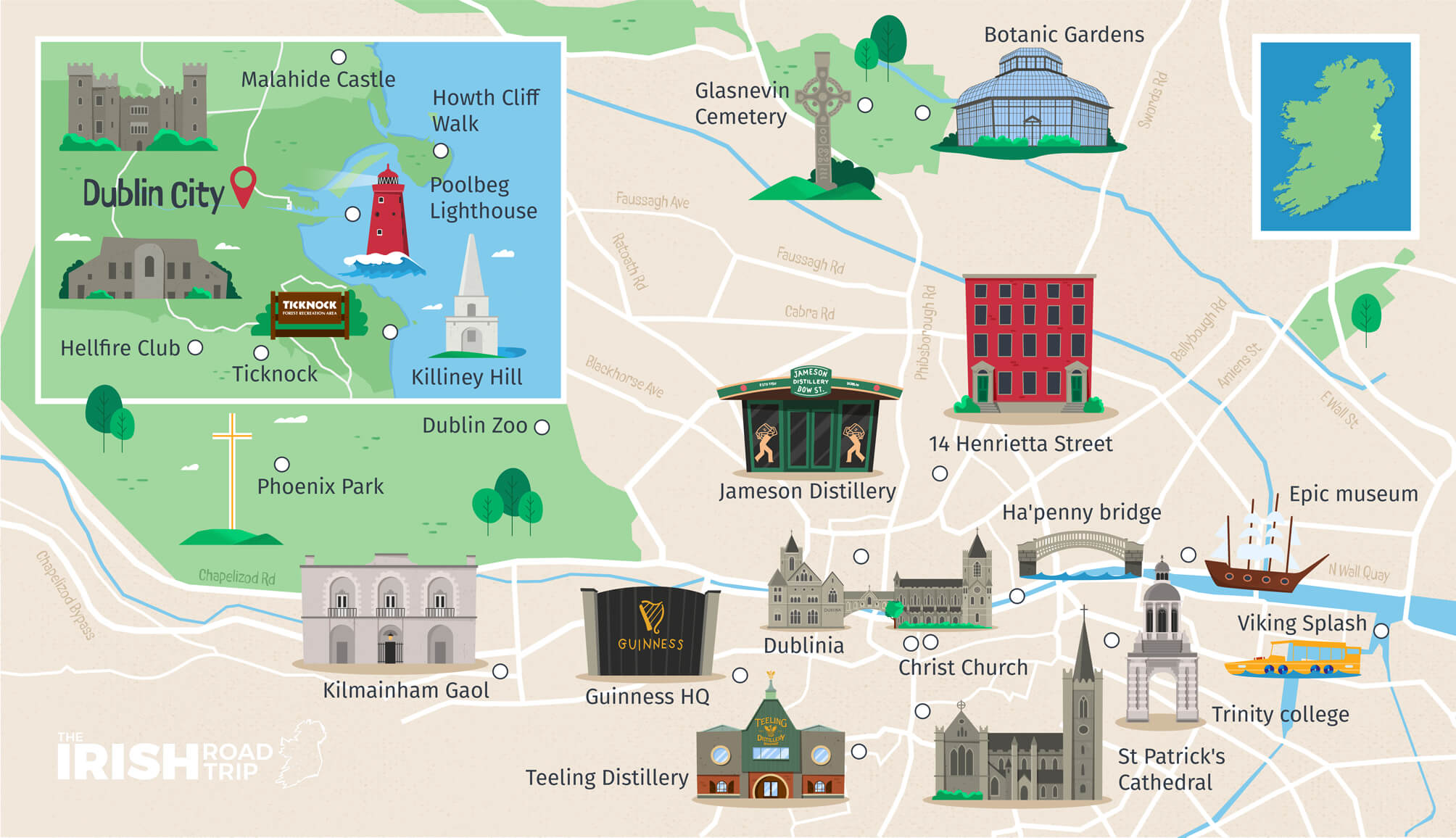
Now you know how to get around Dublin without a car, it’s time to take a look at the best things to see and do:
- Key attractions: Guinness Storehouse , Jameson Distillery , Trinity College and Christ Church
- Round ups: Museums in Dublin , Dublin with kids , free things to do in Dublin and the best walks in Dublin
- Itineraries: 1 day in Dublin , 2 days in Dublin or 3 days in Dublin
Still struggling to decide the best way to get around Dublin during your trip? Ask away in the comments below!
Keith O’Hara has lived in Ireland for 35 years and has spent most of the last 10 creating what is now The Irish Road Trip guide. Over the years, the website has published thousands of meticulously researched Ireland travel guides, welcoming 30 million+ visitors along the way. In 2022, the Irish Road Trip team published the world’s largest collection of Irish Road Trip itineraries . Keith lives in Dublin with his dog Toby and finds writing in the 3rd person minus craic altogether.
This site uses Akismet to reduce spam. Learn how your comment data is processed .
Irish Graves: Ireland Tours & Cultural History
No products in the cart.

Ultimate Guide: How to Get Around Ireland Without a Car
Setting out for an enchanting escapade in Ireland but feeling a bit anxious about navigating the land without your own set of wheels ? Totally understandable – I’ve been right there with you in those shoes.
Fortunately, as I found out, trekking across Ireland without a car is not just possible; it’s surprisingly convenient and savvy, especially with the country’s extensive bus network at our disposal.
In this guide, we’ll dive into various transport options and sprinkle some pro tips throughout to ensure your trip across the Emerald Isle is smooth sailing and oh-so-memorable. Buckle up! You’re about to embark on an amazing journey that proves sometimes leaving the driving to someone else can lead to the best discoveries .
Table of Contents
Key Takeaways
- You can travel across Ireland using buses, trains, and ferries which connect big cities to small towns. These options are budget-friendly and let you meet locals.
- Tour buses offer guided trips to places like Cliffs of Moher without the worry of driving. Cycling is also great for seeing the countryside.
- Staying in walkable areas near attractions helps you enjoy Irish culture on foot. Using apps and maps makes it easy to get around.
- Purchasing a transportation pass like the Leap Visitor Card or Emerald Card saves money on public transport travels.
- Dublin, Galway, Derry~Londonderry, Belturbet, and Cliffs of Moher are superb destinations that you can visit without needing a car.
Transportation Options in Ireland
When traveling in Ireland without a car, there are several transportation options available. From the extensive public transportation system of buses, trains, and ferries to renting a car or joining tour buses, there are plenty of ways to get around the country.
You can also explore cycling options or take advantage of walking tours for a more immersive experience.
Public transportation (bus, train, and ferry)
I travel around Ireland easily by hopping on buses, trains, and ferries . Across the country, these options connect me to big cities and small towns. Buses are a lifeline here; they take me anywhere from Dublin’s heart to remote corners of the countryside.
The bus network is easy on my wallet and helps me meet locals.
Train journeys show off Ireland’s green scenery as I zip between major spots like Cork, Galway, and Belfast . For an island adventure or crossing rivers without a bridge , I jump aboard a ferry.
I love watching the shoreline shrink behind me while heading out to islands like Aran or Valentia.
When exploring Ireland, consider alternatives to car rentals. Public transportation is the most budget-friendly and convenient way to travel in both Dublin and nationwide. Cycling is also an ideal option for exploring the Irish landscape, with manageable distances and accommodations offering bike storage and luggage facilities.
In major cities like Dublin, guided tours are readily available, making it easier to travel without a car.
Now let’s talk about the benefits of exploring Ireland without a car .
Tour buses are a convenient and popular way for travelers to see the sights in Ireland without needing a car. These tours offer guided experiences to major attractions such as the Cliffs of Moher , Newgrange, and the Hill of Tara, making it easy to explore without worrying about driving or navigating.
With options available from major cities like Dublin and Galway, tour buses provide a hassle-free way to discover Ireland’s beauty while learning from knowledgeable guides .
When visiting Ireland, consider joining a tour bus excursion as an efficient way to visit key locations and immerse yourself in the local culture. Whether you’re interested in historical sites or breathtaking landscapes, these guided tours cater to various interests and allow you to experience the best of Ireland’s must-see destinations without needing your own transport.
Cycling options
Cycling in Ireland offers an exhilarating way to explore the stunning landscapes and picturesque towns. Many accommodations provide bike storage and luggage facilities , making it convenient for travelers to incorporate cycling into their itinerary.
The manageable distances make it feasible to cover various attractions by bike, providing a unique and eco-friendly way to experience the charm of Ireland’s countryside.
With comprehensive information on travel options like public transportation, this article serves as a resourceful guide for tourists seeking alternatives to car rentals. Cyclists can look forward to breathtaking views and a memorable journey through Ireland’s enchanting scenery.
Walking tours
Walking tours are an excellent way to explore Ireland without a car, allowing you to immerse yourself in the local culture and history while enjoying the beautiful landscapes on foot.
In major cities like Dublin and Galway , guided walking tours offer insight into the country’s rich heritage, with knowledgeable guides leading you through historical sites , charming neighborhoods, and iconic landmarks.
You can easily visit attractions such as Trinity College, Temple Bar , and St. Stephen’s Green Park on foot, taking in the vibrant atmosphere of these cities while learning about their fascinating stories and legends.
In addition to city tours, rural walking excursions provide an opportunity to experience Ireland’s stunning countryside firsthand. The Cliffs of Moher Coastal Walk is a must-visit for nature enthusiasts seeking breathtaking views of the Atlantic Ocean and rugged cliffs.
Benefits of Exploring Ireland Without a Car
Exploring Ireland without a car has many benefits, including being eco-friendly, cost-effective, and providing a deeper cultural immersion experience. You’ll find that traveling by public transportation or other non-driving options opens up unique opportunities to see the country in a new way.
Eco-friendly
Exploring Ireland without a car is eco-friendly as it reduces carbon emissions and minimizes the impact on the environment. Using public transportation, cycling, and walking tours contribute to sustainable travel practices, supporting the preservation of Ireland’s natural beauty for future generations.
Additionally, opting for non-driving options aligns with responsible tourism values, promoting a more sustainable approach to experiencing the country’s stunning landscapes and cultural treasures.
Traveling in Ireland without a car is an eco-conscious choice that reduces reliance on fossil fuels and supports efforts to combat climate change . It allows me to explore this beautiful destination while embracing environmentally friendly modes of transportation such as buses, trains, and bicycles.
Cost-effective
Exploring Ireland without a car is not only eco-friendly but also very cost-effective . Using public transportation such as buses and trains provides an affordable way to travel around the country, especially when purchasing a transportation pass for added savings.
Guided tours and day trips from major cities like Dublin offer budget-friendly options to explore the Irish landscape without breaking the bank.
Additionally, cycling through manageable distances in Ireland allows travelers to experience the stunning scenery while keeping costs down . Major cities also provide a range of free or low-cost walking tours , offering cultural immersion without spending extra money on transportation.
Cultural immersion
Immersing myself in the local culture of Ireland without a car allowed me to connect with the people and traditions on a deeper level. Riding the public buses, mingling with other passengers, and exploring hidden gems off the beaten path provided an authentic insight into Irish life.
Engaging in walking tours, visiting historic sites , and chatting with locals at pubs enriched my experience by immersing me in the vibrant Irish culture.
Participating in traditional events like music festivals, food markets, and community gatherings exposed me to the rich heritage of Ireland. Whether wandering through bustling cities or strolling along picturesque countryside roads, I found that traveling without a car enhanced my cultural immersion by offering unparalleled opportunities to interact with locals and embrace the unique spirit of Ireland.
Tips for Navigating Ireland Without a Car
Plan your itinerary to maximize time and minimize transportation needs. Purchase a transportation pass for unlimited travel on buses, trains, and ferries. Utilize guided tours to explore popular tourist destinations hassle-free.
Stay in walkable areas to easily access nearby attractions. Make use of apps and maps for navigation assistance while exploring Ireland without a car.
Plan your itinerary
To plan your itinerary for exploring Ireland without a car, consider starting in Killarney, Southwest Ireland. Diverse sightseeing and public transportation options make it an ideal base for travelers.
Utilize guided tours and day trips from major cities like Dublin to explore attractions like Newgrange, Glendalough, Monasterboice, and the Hill of Tara. Consider purchasing a transportation pass to ease travel between cities and tourist destinations.
Consider staying in walkable areas or near public transportation hubs for easier access to attractions. Major cities like Dublin provide ample opportunities for day trips without a rental car.
Purchase a transportation pass
To explore Ireland without a car, it’s essential to purchase a transportation pass for convenient and cost-effective travel. With options like the Leap Visitor Card in Dublin or the Emerald Card for nationwide bus travel , you can access buses, trams, and trains hassle-free.
This allows unlimited rides within a specified time frame, making it easy to hop on and off public transport while exploring Ireland’s captivating destinations such as Galway, Derry~Londonderry, and more.
When traveling around Ireland without a car, purchasing a transportation pass is key for seamless navigation across cities and scenic landscapes. With multiple-day passes available for tourists’ convenience and value, it’s the ideal solution for stress-free exploration without worrying about individual ticket purchases at every stop or attraction.
Utilize guided tours
Guided tours are a fantastic way to explore Ireland without a car. In major cities like Dublin and Galway, there are plentiful opportunities for guided excursions, making it convenient to travel without the hassle of driving.
Day trips to iconic sites such as Newgrange, Glendalough, Monasterboice, and the Hill of Tara can be easily arranged through guided tours , providing an enriching experience while navigating around Ireland’s top attractions.
Exploring Ireland with guided tours allows travelers to immerse themselves in local culture and history . With organized itineraries and knowledgeable guides, tourists can efficiently visit key destinations and make the most out of their trip without worrying about transportation logistics or navigating unfamiliar roads.
Stay in walkable areas
When utilizing guided tours, I recommend staying in walkable areas to make the most of your Ireland experience. Major cities like Dublin and Galway offer a variety of accommodations within walking distance of attractions, restaurants , and public transportation hubs.
This allows for easy exploration on foot, providing convenient access to picturesque streets, historic sites, and local culture without the need for a car. Additionally, opting for centrally located lodgings ensures that you can immerse yourself in the vibrant Irish atmosphere while having the freedom to wander at your own pace.
Ireland’s charming villages also offer walkable accommodations close to amenities and points of interest. Whether it’s strolling along cobblestone streets or enjoying scenic coastal paths, choosing lodging in pedestrian-friendly areas enhances the authenticity of your travel experience while allowing you to discover hidden gems off the beaten path.
Make use of apps and maps
I rely on travel apps and maps to navigate Ireland efficiently, discovering nearby landmarks, public transportation schedules , and walking routes . These tools are convenient for planning day trips from major cities like Dublin or Galway without the need for a car.
My favorite app allows me to access offline maps , which is especially useful in remote areas where internet coverage may be limited. With these resources at my fingertips, exploring Ireland without a car becomes an organized and enjoyable experience.
Must-Visit Destinations in Ireland Without a Car
– Dublin, the lively capital city with its rich history and vibrant culture.
– Galway, a charming coastal city known for its music and arts scene.
– Derry~Londonderry, a historic walled city with a fascinating blend of Irish and British influences.
– Belturbet, a picturesque village in County Cavan perfect for fishing and exploring the countryside.
– Cliffs of Moher, an iconic natural wonder offering stunning views of the Atlantic coastline.
Dublin is a vibrant city with excellent public transportation , making it easy to get around without a car. The extensive bus network covers the city and its outskirts, providing convenient access to major attractions such as Trinity College, Dublin Castle , and the Guinness Storehouse.
Additionally, the DART train service offers efficient travel along the coast , connecting travelers to coastal towns like Howth and Bray for enjoyable day trips. With my transportation pass in hand, I effortlessly navigated this iconic city – soaking up its rich history and lively atmosphere without ever needing a car.
Would you like some more information?
Continuing from Dublin, traveling to Galway without a car is hassle-free due to the well-connected public transportation system . Galway offers vibrant street performances , traditional Irish music, and stunning landscapes showcasing its rich culture.
The walking tours around Galway’s medieval streets and the charming Claddagh area provide an immersive experience into the city’s history and folklore. With frequent bus services available from Dublin and other major cities, exploring attractions such as Eyre Square, Spanish Arch, and the scenic Salthill Promenade is easily accessible for travelers looking to enjoy Ireland without relying on a rental car.
Derry~Londonderry
Arriving in Derry~Londonderry, I found it to be a fascinating blend of history and modern-day vibrancy. As a traveler exploring Ireland without a car, this city’s compact size made it perfect for walking tours and sightseeing .
The iconic 17th-century defensive walls provide an excellent vantage point to take in the scenic views across the River Foyle while soaking up the rich cultural heritage . Derry~Londonderry’s central location also made it an ideal starting point for day trips using public transportation, offering access to nearby attractions like the historic Walled City, Tower Museum, and Guildhall.
Delving into its captivating past coupled with bustling city life provided an authentic Irish experience that was easily accessible without relying on driving.
Belturbet is a charming town in County Cavan, offering a peaceful escape from the hustle and bustle of larger cities. The idyllic waterways are perfect for tranquil boat trips, allowing you to soak up the natural beauty at your own pace.
Additionally, fishing enthusiasts will be delighted by the abundance of angling opportunities on offer. With its picturesque setting and relaxed atmosphere, Belturbet provides a unique and refreshing angle to explore Ireland’s lesser-explored treasures.
Whether you’re interested in historical sites or outdoor adventures , Belturbet has something for everyone. The stunning ruins of Castle Saunderson provide a glimpse into Ireland’s rich history while offering breathtaking views of the surrounding countryside.
Cliffs of Moher
Visiting the Cliffs of Moher is a must when exploring Ireland without a car. I highly recommend taking a bus tour or utilizing public transportation to reach this iconic natural wonder .
The breathtaking views and sheer majesty of the cliffs make for an unforgettable experience, and there are plenty of opportunities for guided tours and excursions from nearby towns like Galway .
Now let’s dive into essential tips for navigating Ireland without a car.
In conclusion, navigating Ireland without a car is practical and cost-effective . The public transportation system provides ample opportunities for travelers to explore the country.
Cycling and guided tours offer eco-friendly options , making it easy to get around without a vehicle.
Expert Analysis:
Renowned travel expert Sarah Thompson, an accomplished author and experienced traveler with a focus on sustainable tourism, emphasizes the effectiveness of exploring Ireland without a car.
Her expertise in alternative travel options underscores the viability of using public transportation and guided tours as highlighted in this guide.
Safety & Transparency:
Thompson stresses the ethical considerations of promoting eco-friendly travel alternatives while ensuring transparent information about certifications and regulatory compliance for transport services featured in this guide.
Integration into Everyday Life:
To make the most of this guide, Thompson suggests planning day trips from major cities and utilizing comprehensive train networks for seamless exploration without a car .
Balanced Evaluation – Pros & Cons:
While highlighting the convenience and eco-friendliness emphasized in this guide, Thompson also mentions potential challenges such as limited accessibility to remote areas through public transport but commends its value for urban-based travelers.
Final Verdict or Recommendation:
Sarah Thompson enthusiastically endorses the “Ultimate Guide: How to Get Around Ireland Without a Car,” emphasizing its worthiness for tourists looking to explore Ireland sustainably and independently.

Hello! I’m Ryan Nelson, the heart and soul behind IrishGraves.com. Born in New York City with a rich blend of Irish and Scottish heritage, I’ve always felt a deep pull towards exploring my roots and understanding the cultures that shape me. This passion ignited my journey to Ireland, a land of breathtaking landscapes, profound history, and vibrant culture, leading to the creation of IrishGraves.com.
Similar Posts
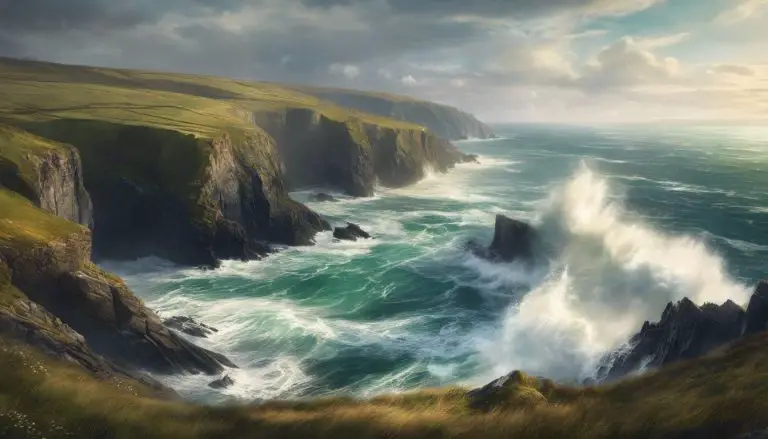
Where Was Banshees of Inisherin Filmed? Exploring the Irish Locations Used in the Film – Uncovering the Key Locations of where was banshee of inisherin filmed
“The Banshees of Inisherin” is a movie that takes us to the beautiful Irish islands. It tells a story set…
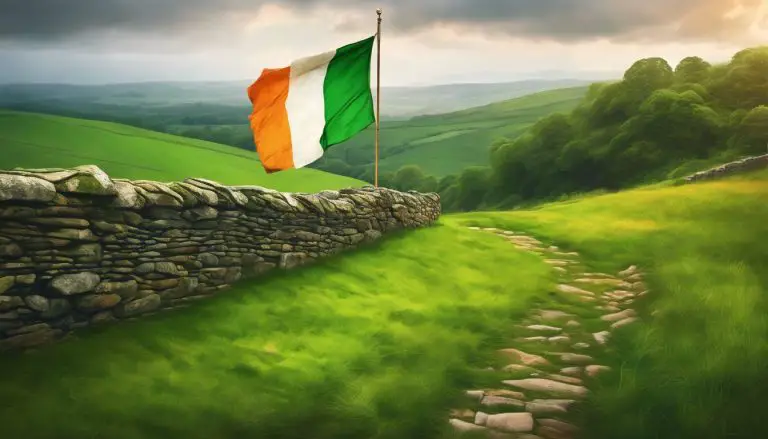
What Is the Irish Flag: History, Symbolism, and Meaning
The Irish flag is a special symbol with three colors: green, white, and orange. Each color has its own meaning….
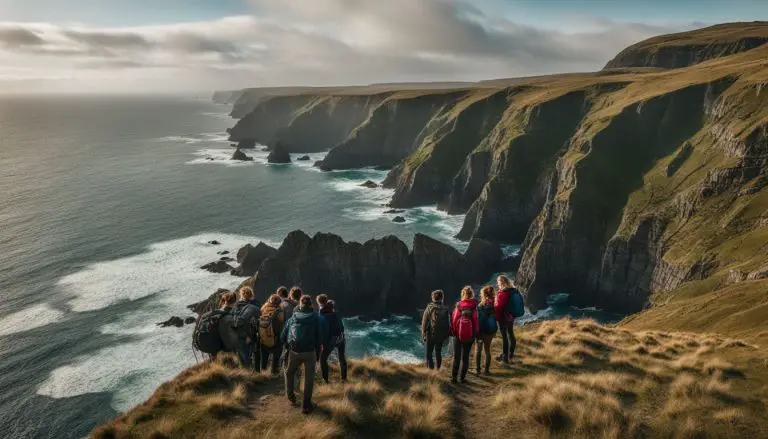
Exploring Ireland in November: Weather, Activities, and Tips for a Memorable Trip
Planning a trip to Ireland in November might leave you scratching your head, pondering the weather and searching for activities…
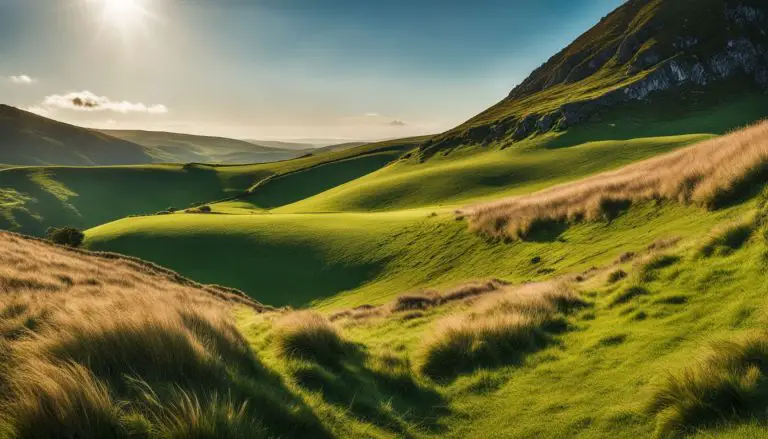
Everything You Need to Know About Ireland Weather in September
Planning a trip to Ireland in September and feeling uncertain about what the weather has in store? I completely understand…

How Did St. Patrick Die: Uncovering the Truth Behind the Legend of how did St. Patrick Die
Saint Patrick, known for bringing Christianity to Ireland, died on March 17, 461 A.D. in Saul. He was not originally…

The Ultimate Ireland Must See Things List: 10 Bucket List Must-See Attractions in Ireland
Are you daydreaming about the lush green landscapes of Ireland, but feeling a bit overwhelmed with all the must-dos and…

Traveling Without a Passport

How to Spend a Week in Ireland Without a Car
Want to know how to spend a week in Ireland without a car? There are many fantastic ways to discover the Emerald Isle without having to drive!

A week-long holiday without a car in Ireland is easily doable; in fact, it’s almost ideal. This North Atlantic country aptly called the Emerald Isle is a stunner not just by looks, but also because of its people, fables, and culture. Studded with lush, rolling landscapes, wind-weathered coasts, and cities both gritty and charming, it’s the perfect place to explore.
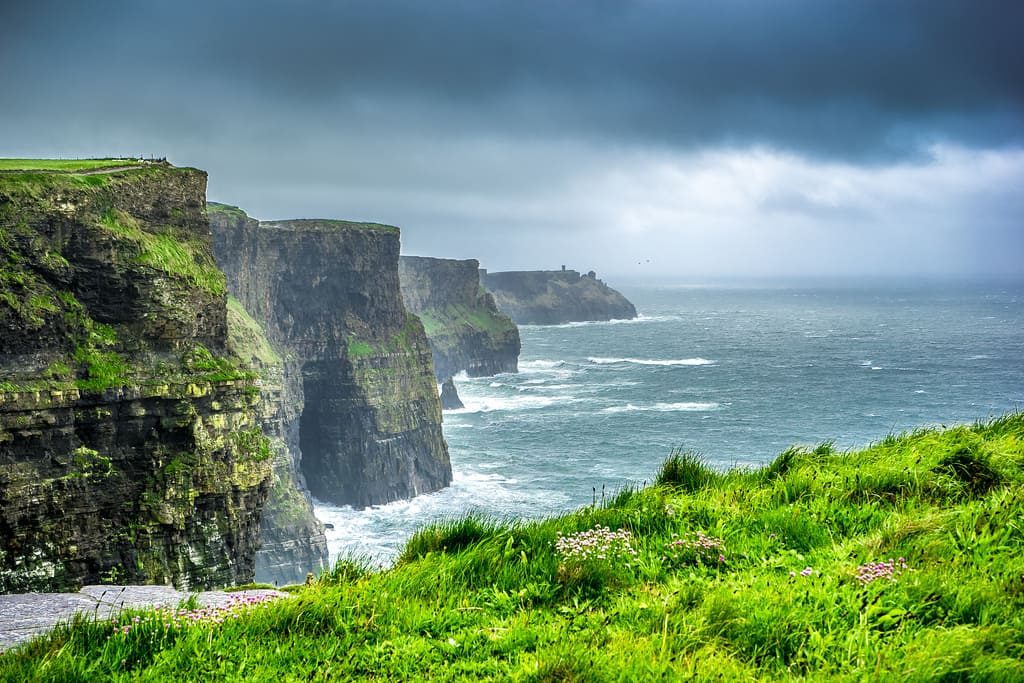
But how to spend a week in Ireland without a car? We’ve got a few tricks up our sleeves. There are many ways, depending on what type of traveller you are and how adventurous you would like to be during your visit. Here are the best ways to spend a week in Ireland without a car.
Read here the best 7 day Ireland travel itineraries .
Stick to the cities
Urban types who enjoy city stays will find comfort in the fact that Ireland’s biggest cities are easily accessible via public transport. Dublin —being the capital city, not to mention the largest in the country—has the most diverse options.
The greater Dublin area is serviced by buses, urban rail, and light rail, with the Dublin Metro on the way. The city boasts the Dublin Area Rapid Transit, dubbed DART, which services the city centre as well as the coastal area with 31 stations in total. It also has a commuter rail with four lines: Northern, South Eastern, Western, and South Western.
Cork, in southwest Ireland, on the other hand, has buses and urban rail, with plans for a light rail system. Limerick and Galway are serviced by buses and urban rail, while Derry and Waterford are accessible by buses.
If you’re not feeling too adventurous or feel like you’re pressed for time, staying in the cities where you can hop on buses or trains that run quite regularly might be your best option. A week is hardly enough to spend in Dublin, but if you go for the highlights, you might tick off a couple of cities during your holiday.
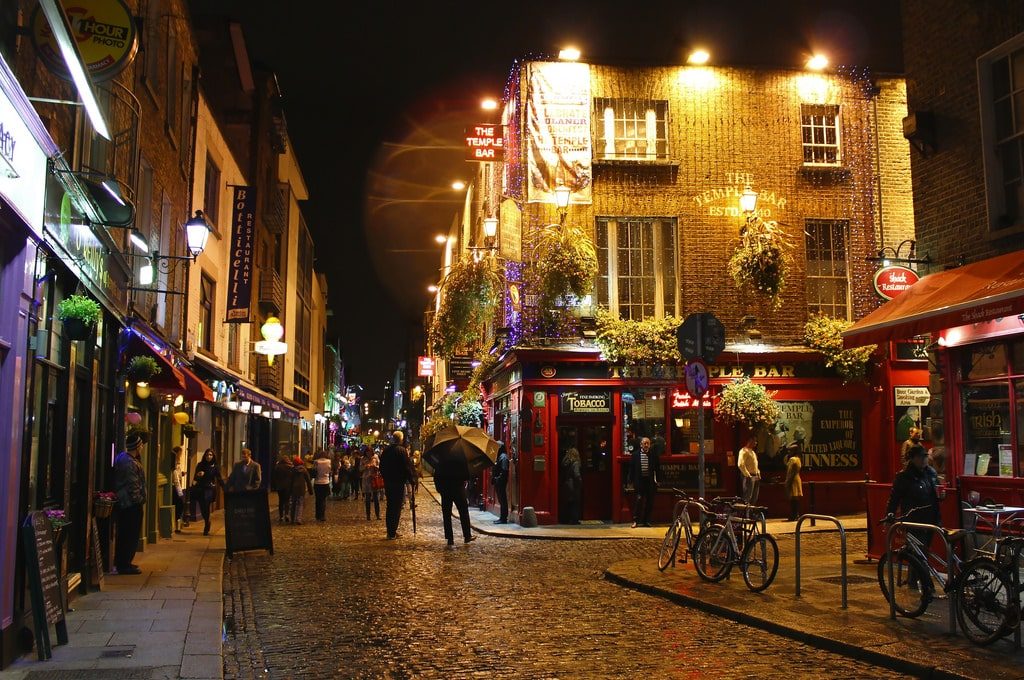
You could spend two or three days in Dublin, visiting attractions, stopping by the Guinness Storehouse Factory, and drinking with the locals in pubs. Then jump on the Dublin-Cork line to explore the southern city of Cork .
Alternately, take the Dublin-Galway line to explore the charming city of Galway and then squeeze in a day trip somewhere. The Wicklow Mountains National Park is a skip, hop and a jump away from Dublin, while the majestic Cliffs of Moher are a two-hour bus ride from Galway.
See Also: Best Winter 2018 European Destinations

Join a multi-day group tour
If you do want to cover a lot of ground, another hassle-free way to get around is by joining a multi-day tour, you’ll be on wheels but technically won’t be driving yourself. This is especially great if you want to mix it up and are angling for diverse activities and places. Without a car for convenience, that is harder to do. A tour will offer you the right mix of activities as well as transport.
As Ireland is a top holiday destination, tours include week-long options that will take you through cities and to some of the country’s less accessible gems.
Mind you, with many of these tours; your schedule will be a little tighter as your itinerary will be packed with many stops. These tours are designed for travellers who like to squeeze in as many attractions and experiences as possible in a short span of time.
Guided tours with a packed schedule aren’t for everyone. If you prefer to take things at a slower pace, there are some options out there, but remember to take a good look at the itinerary before booking.
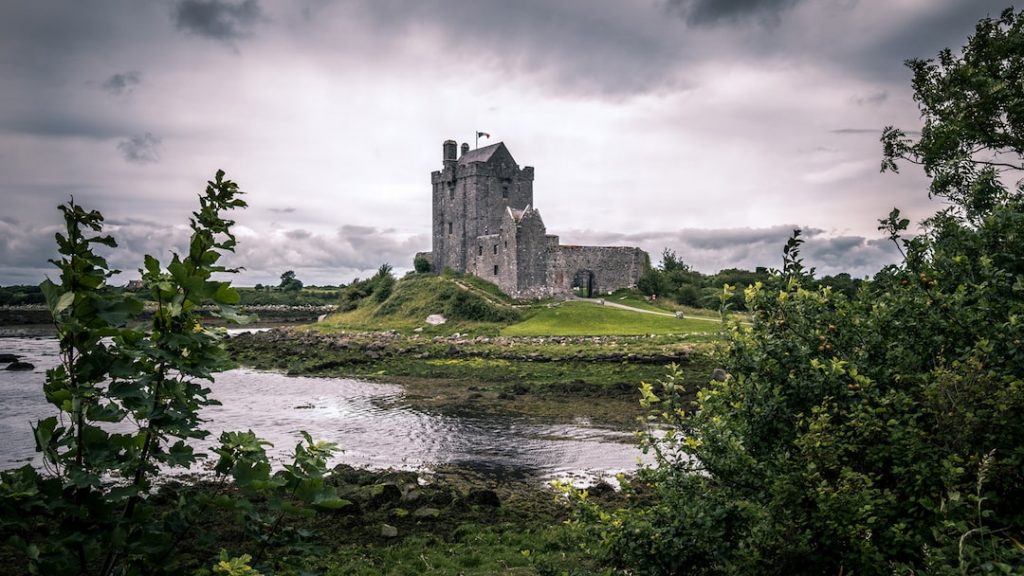
For an epic tour that ticks off many items on most Ireland bucket lists, the seven-day Grand Tour of Ireland might be the right choice. This small group tour starts its journey in Dublin and offers a diverse blend of historical attractions, charming towns, stunning landscapes, and quiet countryside. The organisers will arrange your accommodation, guide, and transport as well as give you a chance to opt-in for extra activities like horseback riding, kayaking, and surfing.
For a slightly less busy but still productive visit, try the Irish Highlights tour, during which you’ll dedicate a day to exploring Dublin and then another circling the Ring of Kerry. You’ll see less and therefore spend more time at each sight. Visit Galway the Bunratty Castle, and the Cliffs of Moher, to name a few. Accommodation, a guide, some meals, and transport and included.
Or try a six-day option and take the last day off to bliss out and recover from a busy week. The Celtic Voyage is perfect for this and includes a visit to the westerly point of Valentia Island and the excavation site of Ross Island.
Journey by train and bus
If ticking off as many places as possible isn’t as important as seeing a good portion of the country in general, a leisurely pace might be more your style. If that is the case, you’ll find travelling by train and, at times, by bus an excellent way to see the country.
Ireland’s landscape and seascape panoramas are the stuff of fairy tales, and one of the best ways to admire the scenery is through the window of a train rolling through the countryside. The advantage of journeying by train (or bus), therefore, is two-fold: it lets you sit back, relax, and see this beautiful country as you travel from one point to another.
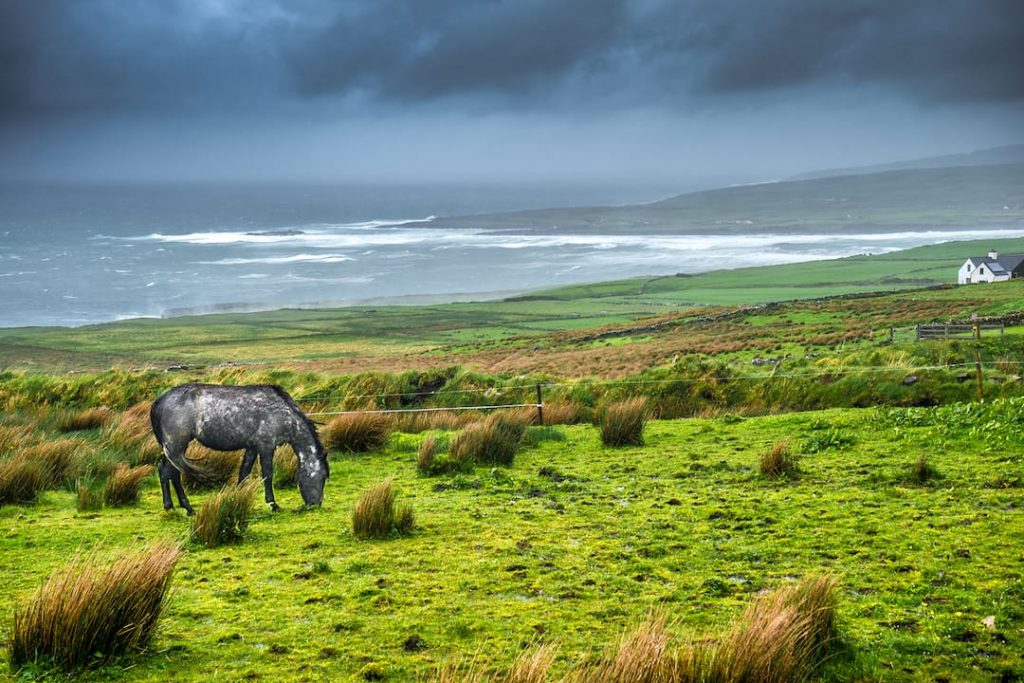
Ireland’s railways will take you from one major city to another or from a city to one of the bigger towns. Organised train tours to major attractions are also on hand. If travelling by train is not an option to where you’d like to go, then a bus will get you there.
See Also: Ireland vs. Scotland: Where Will You Go?
Hike a Long-Distance Trail
Of course, if you want a full-immersion of the Irish countryside, there are always Ireland’s great walking trails that go from one town or village to another, and take you through the beautiful land.
The 53-kilometre (33-mile) Causeway Coast Way, for example, will only take two to three days to complete and takes you along Northern Ireland’s vast coastal stretch. There’s also Glendalough, which takes about a day or two to complete. For the ultimate hiking adventure, you can take a Ring of Kerry hiking tour that takes 6-7 days to complete.
Remember long-distance hiking requires stamina, strength, and endurance, not to mention a lot of planning and preparation. Before you take on a challenge like this, be sure that you’ve trained for it and covered all your bases concerning gear, sleeping arrangements, food, and safety.
Are there any countries you love visiting where you don’t need a car? Tell us about them in the comments!

Michelle Rae Uy
Michelle is Los Angeles-based writer, editor, and photographer with a bad case of wanderlust. Her dream, next to travelling the world, is to own her own funky, boutique hotel with a small animal sanctuary so she can spend the rest of her days chilling with cats and hedgehogs. Follow her on Instagram .
Related Articles
- Destinations
- Tips & Tricks
Iceland and the (Somewhat Elusive) Northern Lights
Found on many a bucket list, just next to visiting Iceland,...
- United Kingdom
Visit These Gloomy Destinations for a Great Time
Enough about sun-drenched beaches and clear blue skies. It’s time you...
Top Countries You Haven’t Been (Yet!)
Ever felt like you're being fed the same destination over and...

The Best Places to Travel in Europe with a Baby
Get unlimited access to the world's best travel stories. subscribe now., privacy overview.
Join the Ireland on a Budget Travel Planning Tips Facebook Group

Is it Possible to Get Around Ireland Without a Car?
- Post author: colette
- Post published: May 30, 2024
- Post category: Getting Around Ireland / Planning / Saving Money in Ireland / Transportation
- Post comments: 4 Comments
Updated May 2024– Many first-time travelers to Ireland often wonder if getting around Ireland without a car is doable.

Yes, it definitely is. But you will need to plan beforehand to see Ireland's tourist attractions as opposed to renting a car to get you from place to place.
Table of Contents
Advantages of Getting Around Ireland Without a Car
If you are uncomfortable about driving on the other side of the road, taking alternative modes of transportation can make a lot of sense.
In fact, if you want to explore Ireland at a more leisurely pace, letting someone else do the driving may be just the way to go.
Getting around Ireland without a car is completely doable.
Plus, it might also be a considerable cost-saver since you won’t be incurring the cost of a rental car and the added insurance you are required to take while driving around Ireland .

Ireland’s transportation network has improved in recent years since there are trains and buses that will take you to various parts of the country quite easily, not to mention the availability of specially themed tours that will bring you to some of Ireland’s most popular attractions.
Here are some ideas to get you started on your travels around Ireland without a car.
Getting to Northern Ireland by Train from Dublin
Northern Ireland is technically part of the United Kingdom. Because it is part of the island of Ireland, it is very easy to get to.
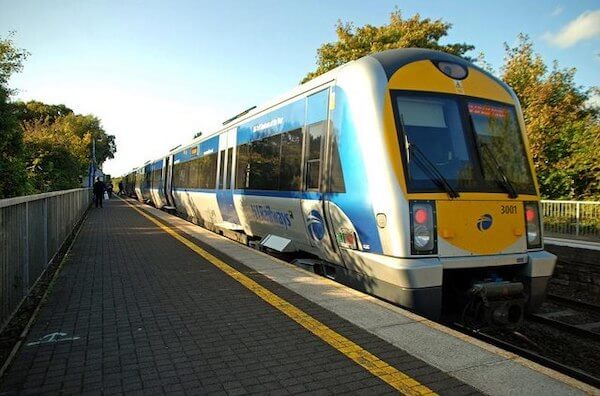
Trains run from Dublin to Belfast daily. They are operated by Iarnrod Eireann (Irish Rail) and Translink. You can get an open round-trip rail ticket (standard) from Dublin to Belfast for as low as €30.98 (adult)/$31 US, £26 Sterling, $45 CAD and $50 AUD. A first-class round-trip ticket will cost a bit more.
Here’s a look at the relatively new Enterprise train ride from Dublin to Belfast that passes through County Louth in the Republic of Ireland and after crossing the border, stops in Newry, Portadown, Lisburn, and finally, into Belfast's Lanyon Place Station.
Video courtesy of Mark Smith, www.seat61.com.
Once you get to Belfast, there’s plenty to see.
Some of my favorite spots include Belfast City Hall, the civic building of Belfast City Council, which opened its doors in 1906. Plans for the hall began in 1888 after Queen Victoria granted Belfast city status.
Other must-see attractions include a tour of the staunchly Catholic neighborhood, the Falls Road, and the Protestant community on the Shankill Road.
You can see both by taking a black taxi tour. There are several such tours in Belfast, providing a behind-the-scenes look into both communities and into the period known as The Troubles.
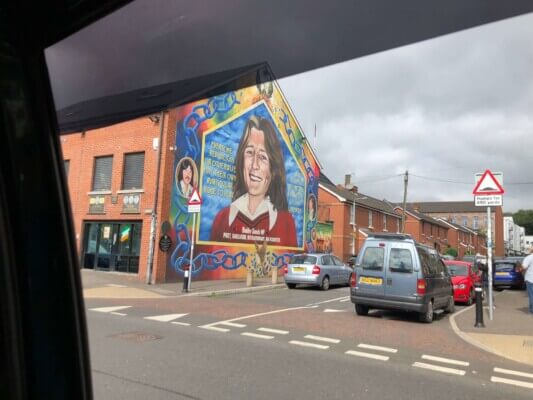
Many of the tours include stops at the famous Peace Wall, the many murals in West Belfast as well as memorials to the people who were killed in the conflict.
Read More: 24 Hours in Belfast on a Budget
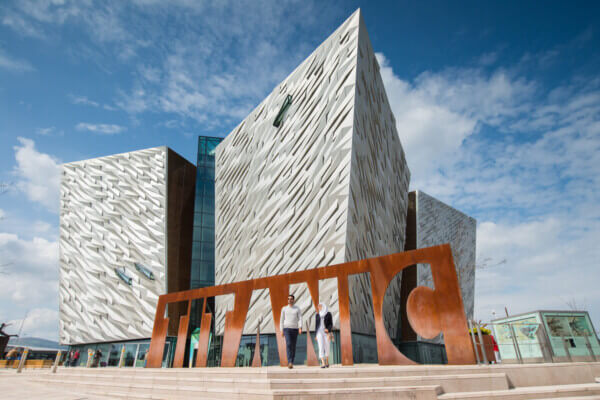
Titanic Belfast is undoubtedly the city’s most celebrated attraction. It is here that the doomed luxury liner was built. While the museum tells the story of the Titanic, it also tells the story of Belfast itself.
Expect to spend 3-4 hours here in this truly remarkable attraction.
Accommodation in Belfast
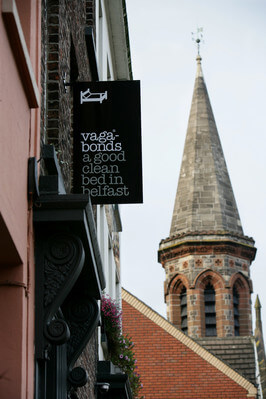
If you want to stay the night in Belfast there are plenty of options in the form of hotels and hostels.
Voted the best hostel in all of Ireland and the U.K., the Vagabonds Hostel offers rates between £80 and £100 per night for two and is suitable for the budget traveler. The hostel offers twin and double rooms, in addition to typical dorm-style accommodation in the form of 6, 8, and 12 beds to a room. It also provides female-only accommodation.
Free breakfast is included as is free tea or coffee throughout the day.
If you're prepared to spend a bit more, there are several good hotels that I'd recommend in the city center. You'll find more details in this post .
What’s to See Beyond Belfast
Using Belfast as your base, there are plenty of day trips you can take that will bring you to Northern Ireland’s most beautiful attractions, such as the Giant’s Causeway, Dunluce Castle, the Game of Thrones filming locations, and the Carrick-a-Rede rope bridge, among others.
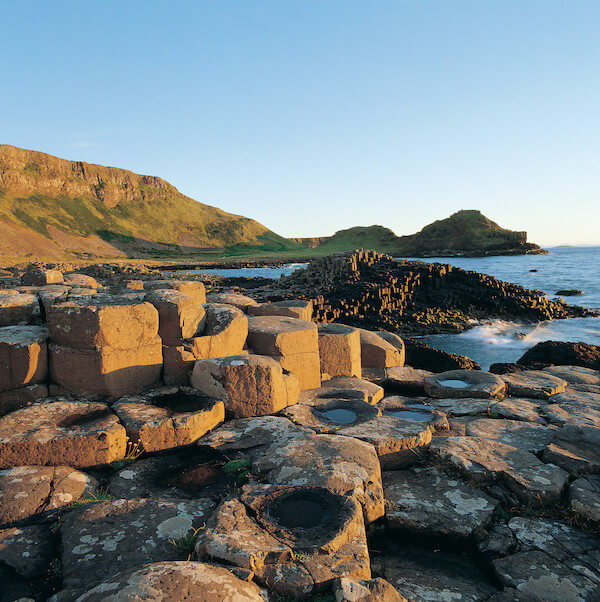
Seeing Other Parts of Ireland
If you’re planning on staying in the Republic of Ireland, there are lots of ways to see the most popular tourist attractions there without renting a car.
You could take a number of pre-arranged day trips from Dublin, returning each night to your accommodation , or you could also plan out an itinerary that will bring you to Ireland’s major cities via bus or train, where you will also be able to avail of various tours.

Lots of travel companies offer one-day tours and longer to various parts of Ireland, many of them leaving from Dublin and other big cities.
Exploring the West
To get a glimpse of the west coast, many tourists head to Galway . The West of Ireland capital is a lively city with much to offer.
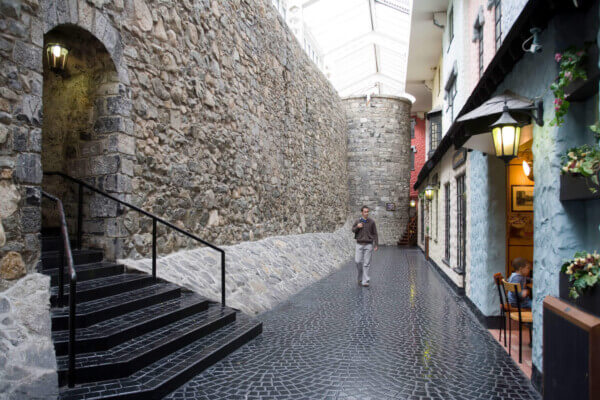
To get to Galway from Dublin, I suggest taking a train as your journey will be more comfortable. Trains leave from Heuston Station.
The round-trip fare from Dublin to Galway for an adult is approximately €31.98/$34.55/£27.20/$47.39/$52.25 AUD.
Since Dublin is the main transportation hub in Ireland, all trains begin there and fan out to various cities and towns throughout the country.
Dublin has two main train stations, Connolly Station and Heuston Station.
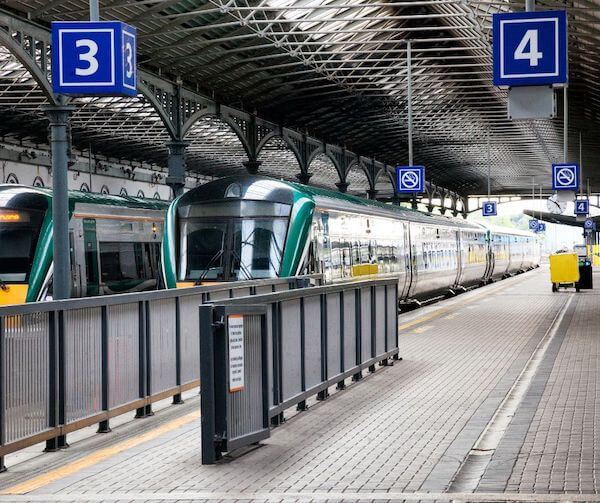
The main long-distance routes from Dublin include:
Dublin Heuston to Cork, Tralee, Limerick, Galway, Westport, Ballina, and Waterford and Dublin Connolly to Sligo, Wexford, Rosslare Europort, and Belfast.
If you want to get to Galway by bus, you can take a Citylink bus or a bus operated by Bus Eireann.
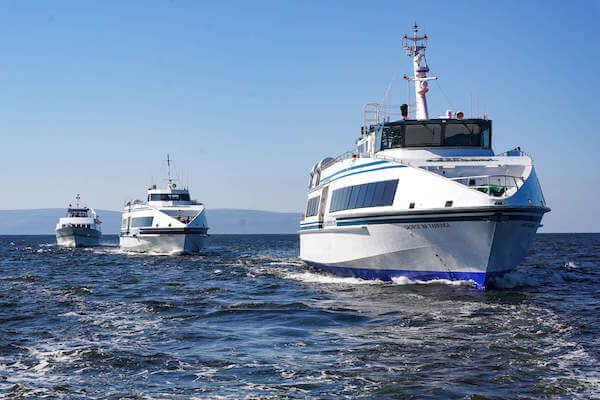
After you’ve explored the city itself, give yourself time to see what is outside of Galway.
A popular destination for many is the Aran Islands , a group of three islands about 45 kilometers (28 miles) off the coast of Galway, where Gaelic is the predominant language.
Inishmore is the largest of the islands and the most popular, with more than 50 different historical monuments dotted across its landmass.
The most impressive of these is called Dun Aengus (pronounced “Dhun Aingus”), a prehistoric fort built during the Bronze Age.
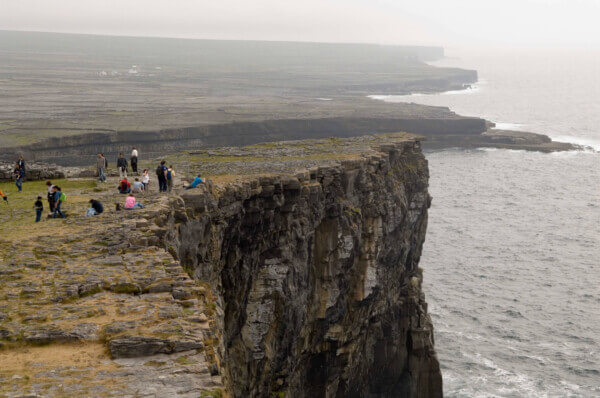
A number of tour companies will bring you to the Aran Islands from Galway.
Among them is Aran Island Ferries, which will bring operates the popular Aran Islands and Cliffs of Moher Cruise , the only one leaving from Galway City.
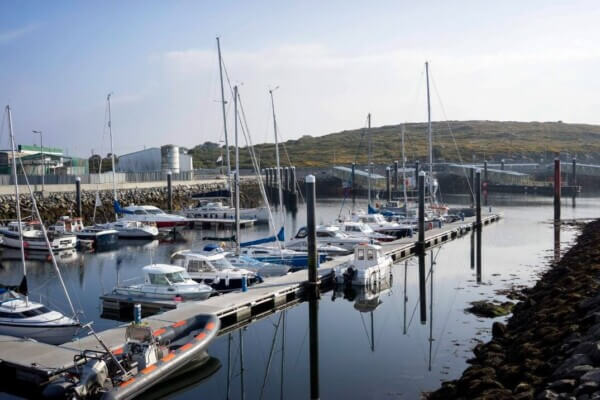
All others take passengers by bus from Galway City to Rossaveal, which is about 23 miles west of the city, and from there to the islands.
Other day trips from Galway include tours of Connemara National Park , the Cliffs of Moher , the small village of Doolin in Co. Clare and more.
Seeing Ireland By Coach Tour
A bus tour can be a great idea if you have a limited amount of time in Ireland and you really don’t want to do any of the planning yourself.
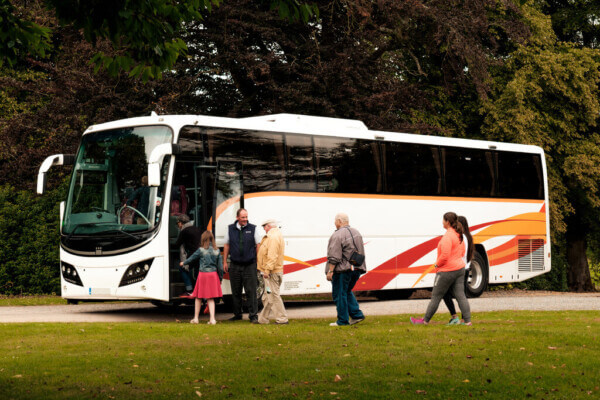
Booking through a tour company can save you a lot of hassle. Check out this blog post where I provide details on 7 tour companies that are worth looking into.
My advice is to do your homework beforehand and ask yourself some basic questions.
Do you want to travel with a big group or enjoy Ireland in a more intimate setting? Do you want to stay in a hotel for one night or stay for two?

If the tour company includes two-night stays in a particular destination, you’ll get more of a feel for the place than if you arrived at 8 p.m. at night and then took off halfway through the next day.
Most importantly, know how much you can afford before you book anything.
The tour companies listed below are experts in providing group tours to Ireland.
CIE Tours – this is by far the granddaddy of all tour companies. CIE Tours has provided packaged excursions to Ireland and Britain for the past 87 years. It currently organizes tours to Ireland, Britain, Scotland, Eastern Europe, Italy, and Iceland, as well as combination tours of Ireland and Scotland, Ireland and Britain, and Ireland and Iceland.
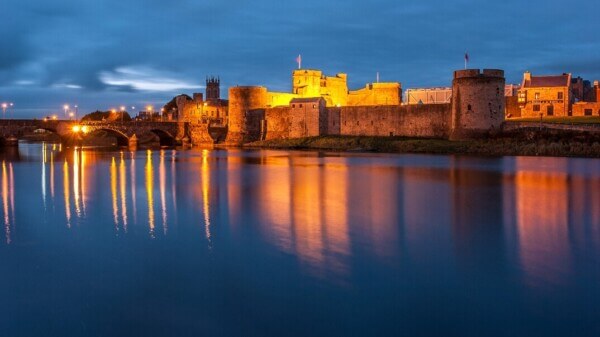
Its popular Irish Heritage Tour includes stops in Limerick, Killarney, Cobh, Glendalough, and Dublin. All of CIE’s tours include authentic local experiences , accommodation, and some meals.
The cost of the 7-day-6-night tour is approximately $2.395. This does not include airfare, although CIE Tours will book that for you if you wish.
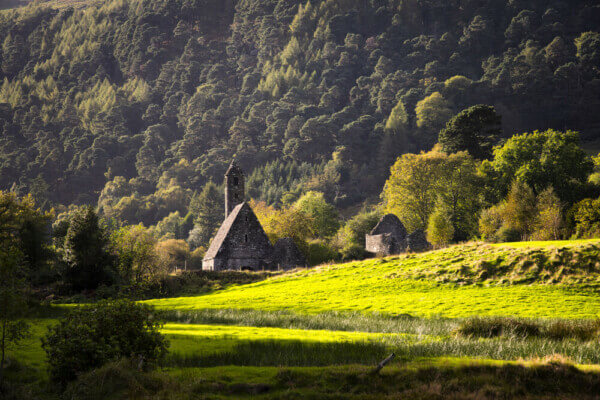
CIE Tours also offers year-round deals and promotions, including military discounts, savings for solo travelers, and student discounts, among others.
Railtours Ireland is a tour company that aims to accommodate the “independent traveler.” While the company offers plenty of one-day tours, you can also plan your entire vacation in Ireland around a Railtours packaged excursion.
Most travel is done by train, although on some tours, transfer to a coach bus is necessary.
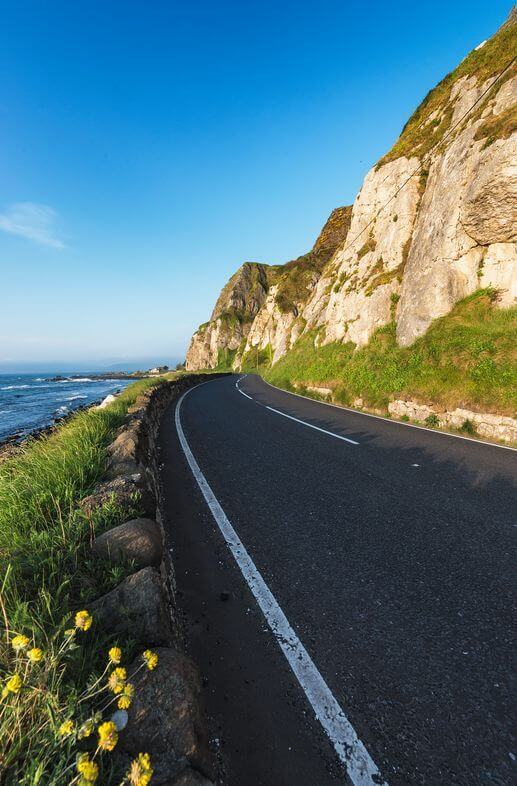
The cost of the All-Ireland Tour is €2,328 per person, which includes accommodation and breakfast each morning.
The tour covers a large part of the Wild Atlantic Way and the Causeway Coast in Northern Ireland, in addition to Belfast. Passengers will also visit Cork, Blarney Castle, the Ring of Kerry, the Cliffs of Moher, Connemara , and the Aran Islands.
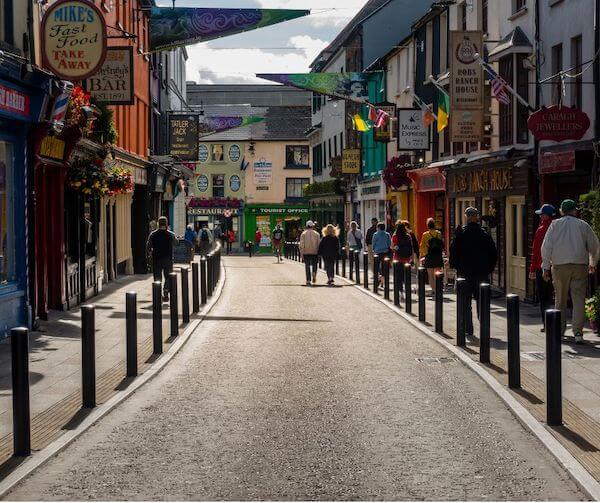
Accommodation, including two nights in Killarney, two nights in Galway, and two nights in Dublin is included in the total cost.
The 5-day “Ireland West and Wild” tour includes hiking, biking, horse riding, seaweed baths, and surfing to places as diverse as the Aran Islands, Connemara, the Cliffs of Moher, Galway City , the Sligo coast, and more.
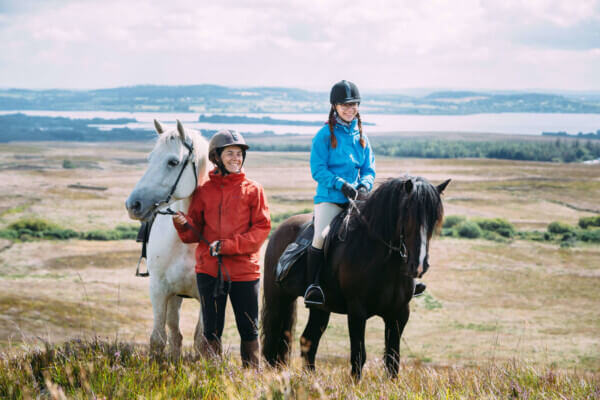
The total cost of the tour is €1,468, which includes accommodation, breakfast each morning, bike hire, guided wilderness hikes, and more.
Getting around Ireland without a car is not only doable, it also guarantees that your vacation will be stress-free.
Whatever way you want to get around Ireland is entirely up to you.
If budget is a concern, I would advise using public transportation as much as possible and then book day tours once you get to your destination.
Creating an itinerary beforehand is a good idea so you know exactly what parts of Ireland you’ll be visiting from day to day.
Let me know in the comments below if you're thinking of traveling around Ireland without a rental car.
You Might Also Like
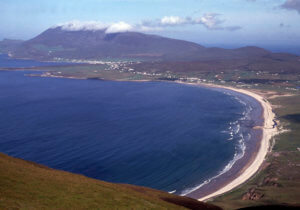
How to Plan Your First Trip to Ireland: Two Itineraries to Consider

How to Get to Ireland from Anywhere in the World

Best Tools for Planning a Vacation to Ireland in 2024
This post has 4 comments.
Awesome Blog. You can also visit our site and check the prices where you can easily find the Reliable and Worthy Taxis and Minicab’s at the Cheapest and Best Offering Prices@ Affordable Price Taxi and Minicab’s Booking Service around all over United Kingdom and Airport Taxis Transportation are also available at Us
Thank you for the information!
Hi there. We are planning on touring Ireland without a rental car. We are hoping to stay in Dublin, Belfast, Cork, Killarney, Galway, Dingle and Doolin and then taking day tours from these places. Period of 18-21 days. Backpacking. Is transportation to and from any of these locations impossible by public transit? Thanks
Hi Kelly, yes public transport is possible. Dublin to Belfast is doable by train (the Enterprise train managed by Irish Rail and Translink – they are working on the line right now, but a bus is also available between Dublin and Belfast via Dublin Express). Irish Rail has direct routes from Dublin to Killarney and Cork. Dingle can be accessed by bus from Tralee (you’d need to get train from Dublin) and Doolin by bus from Galway. All trains fan out of Dublin and backtracking is sometimes necessary. Download the Transport for Ireland/TFI apps (TFI Live lets you plan your journey and TFI Go lets you purchase tickets). https://www.transportforireland.ie/available-apps/
Leave a Reply Cancel reply
About ireland on a budget.
Ireland on a Budget is dedicated to providing you with the most up-to-date information on how you can get to Ireland on a budget and save money once you’re there. In other words, getting you to Ireland the smart way and saving money while you’re there!
Ireland on a Budget is a participant in the Amazon Services LLC Associates Program, an affiliate advertising program designed to provide a means for sites to earn advertising fees by advertising and linking to Amazon.com.
© Connolly Communications, LLC 2024. All Rights Reserved
Privacy Overview

Atlas Obsession
Ireland Itinerary Without a Car: A One Week Adventure
Ireland is a country where its better to focus on its rural, natural beauty than its cities. Sure, some of the cities in Ireland are nice, but when you think of Ireland, you likely picture its endless green countryside. If you’re renting a car, you’ll have no problem exploring the Emerald Isle . Without a car, it becomes a bit more difficult. You’ll be able to see the cities without too much trouble, but getting to the best of the countryside can be a challenge. But it’s still possible to enjoy the country on this Ireland itinerary without a car.
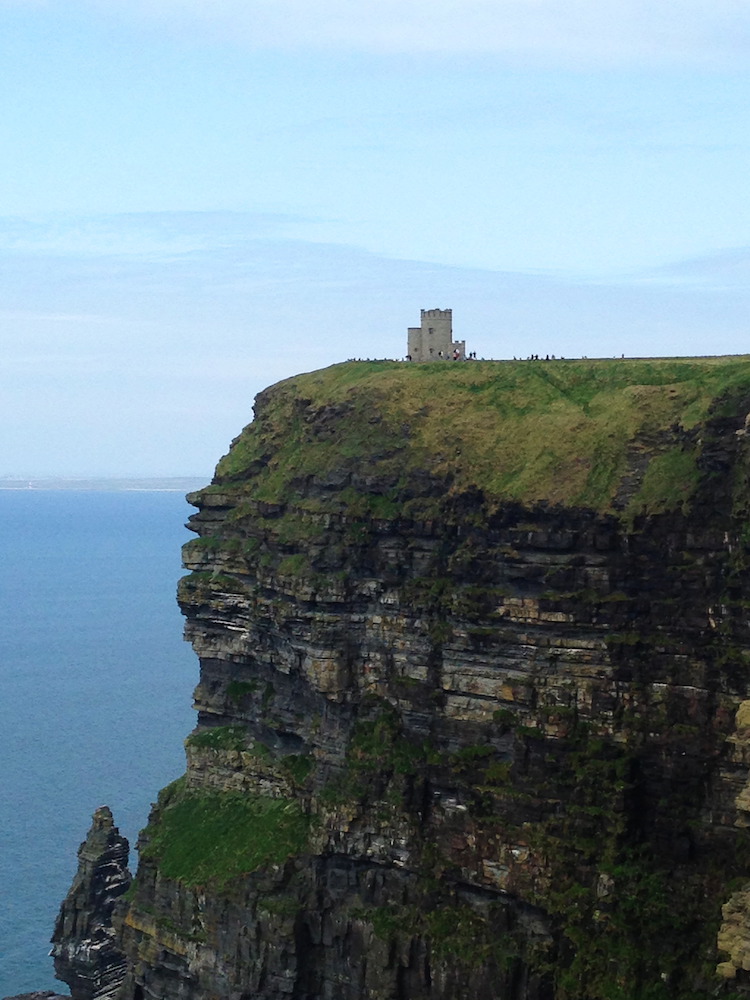
Table of Contents
Car Free Travel
When I travel in the United States, I’ll rent a car whenever I need to and I won’t think twice about it. However, when I travel abroad, I generally prefer to skip the rental car. It’s one added level of stress, and as a solo traveler, I find it more expensive than alternatives. I’ve traveled in both Iceland and France’s Loire Valley without a car , even though that goes against the advice of seemingly everyone online.
Now it should be noted, that I still want you to see the best of Ireland without a car. To do that, you’ll need to get to places that public transportation does not go. So, in lieu of a rental car, you’ll be utilizing guided tours. Rather than spending your entire trip with the same group, I’m recommending day trips. These day trips will get you to where you want to go, but will give you the evenings completely to yourself. I find that tours like this can help bring more flexibility to your trip as you can focus on exactly what you want, rather than following everything on a seven day guided tour.
I can hear some people groaning. Guided tours? Yeah, I know. I’d prefer to do things on my own as well. However, this is your only option for some of these places. Plus, every single day tour that’s mentioned here is a tour that I did while I was in Ireland. I wouldn’t recommend these tours if I didn’t consider them to be a completely viable option.
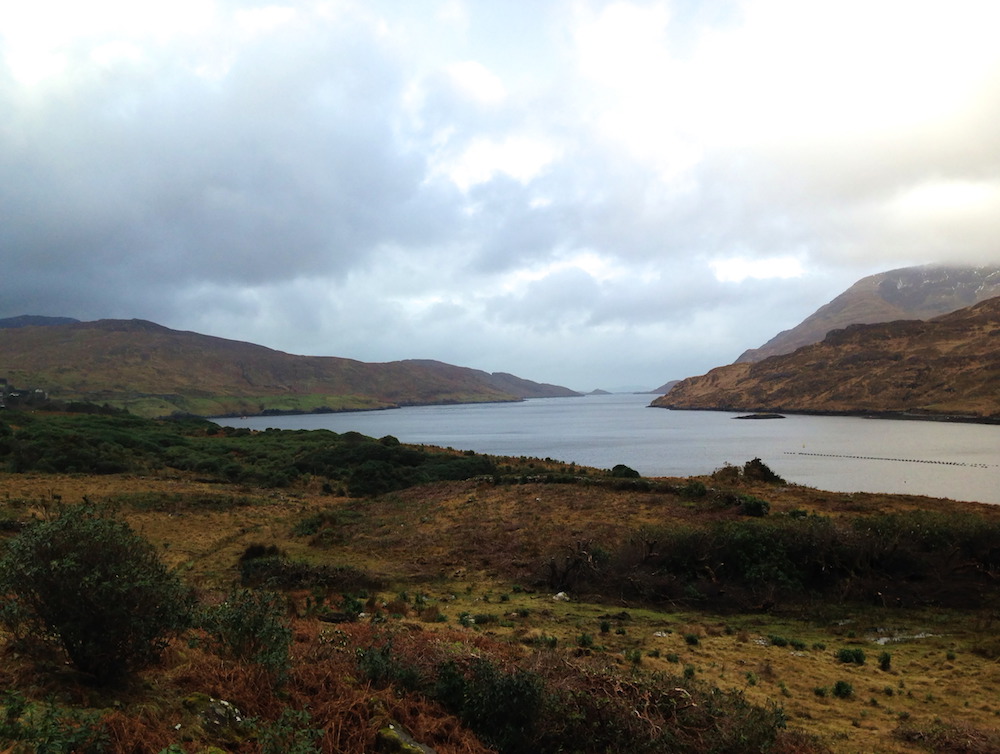
A Note About This Itinerary
Most of my itineraries are either exact copies of trips I’ve done or are heavily influenced by trips I’ve done. This itinerary is a little different. I lived in Ireland for four months and that just gives you a different travel experience. So, I took that experience and organized it. This is the itinerary that covers my favorite parts of Ireland and will do so efficiently (since we never have as much vacation time as we want).
Ireland Itinerary Without a Car
Day 1 – hello dublin, goodbye dublin.
Most international flights will take you Dublin, so that’s where this Ireland itinerary starts. However, we’re not spending any time in Dublin (yet!). Instead, we’ll be getting a bus to your first home base of this trip.
There are many places where you can make a home base in Ireland, but for such a short itinerary, I’m actually recommending Limerick. This is the city I lived in for four months and it provides a great jumping off point for many of the best day trips around southwestern Ireland.
Admittedly, Limerick is not a city I would typically recommend. From a sightseeing perspective, it’s pretty low on the excitement meter. But because of it’s position, you can easily reach other destinations as day trips. So, to avoid constantly packing, unpacking, and lots time wasted on a bus, we’re going to go to Limerick and just make it our base for most of this trip.
From the Dublin airport, you can catch a bus directly to Limerick. Buses will take two to three hours depending on the bus line you choose.
Once in Limerick, settle in to your hotel before taking a quick walk around the city. As I said, it’s not super high on the excitement meter, but I find walking around outside can really help me beat jet lag. If you have energy for sightseeing, visit King John’s Castle, The Hunt Museum, or Arthur’s Quay Park.
Sleep: Limerick
Day 2 – Day Trip to Ring of Kerry
The next four days are day trips from Limerick, so feel free to mix these up and do them in any order. There really isn’t a particular reason I put them in the order I did, so figure out what works for you. You may find you need to switch the days around based on availability for tours anyway.
Day trip number one on this Ireland itinerary without a car is the Ring of Kerry. This 110 mile loop is one of the most popular scenic drives in all of Ireland. While travelers with a car will have more freedom, you can join a day tour to see the highlights of this loop. Expect to get a little time in Killarney, some great views, and the peace of mind knowing that you don’t have to drive this loop.

Day 3 – Day Trip to Dingle
Day trip number 2 is the Dingle Peninsula. Visit beautiful beaches and a charming small town.
Admittedly, you could do this yourself by taking a bus to Dingle. But, you’ll miss some of the scenic stops that make this peninsula so beautiful. See the beach and some of the small towns that dot this peninsula.
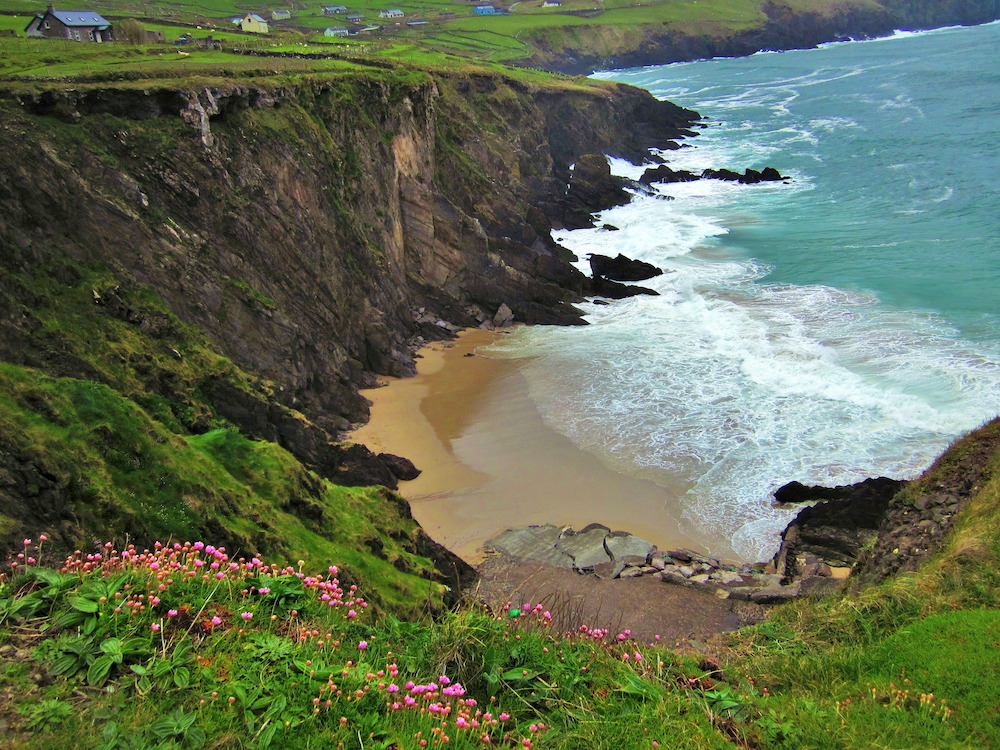
Day 4 – Day Trip to Cliffs of Moher
Day trip number 3 is a visit to the Cliffs of Moher. The western coast of Ireland is covered with dramatic cliffs, but the Cliffs of Moher are the most popular. This is another day trip that may be possible on your own, but for there is something to be said for the convenience of a bus trip that takes you directly where you want to go.

Day 5 – Day Trip to Galway
Day trip number 4 is not a guided trip, but a self explore day. This can make it one of the more relaxing days of your car free Ireland itinerary.
You’ll take a bus from Limerick to Galway to visit my favorite city in Ireland. Like Limerick, Galway is light on sights, but I found Galway to have a lot more charm than Limerick.
Day 6 – Return to Dublin
Hop on a bus, this time back to Dublin. You’ll have the rest of the day to explore. See St. Patrick’s Cathedral, walk along the River Liffey, see the Book of Kells at Trinity College, tour the Guinness Storehouse, or just enjoy Dublin. The choice is yours.

Sleep: Dublin
Day 7 – Fly Home
The trip is over. Head to the airport and catch your flight home.
With More Time
If you have more time to add to your car free Ireland itinerary, here’s how best to do it.
With 8 Days
Add one extra day in Dublin. Since you really only had a half day in Dublin, give yourself one more day to explore some of the fun things in this city.
With 9 Days
You can spend another day in Dublin. But this time, instead of spending your time in the city itself, day trip outside the city. I recommend venturing a bit further away to Belfast. It’s a long day trip, but totally doable.
You have the option as to whether you want to do this trip with a tour or on your own. Since Belfast is a city destination, rather than something in the countryside, I think it’s perfectly reasonable to do this trip solo. Just make sure to pay attention to bus schedules.
In Belfast, visit the Titanic Museums, see the murals, take a Black Cab Tour to learn more about The Troubles, or just wander the city.
With 10 Days
Spend the night in Belfast and take a day trip from here. The most popular option will be to the stunning rock formations at Giant’s Causeway.

Recap and Hotels Needed
Let’s recap your Ireland itinerary.
Day 1: Travel from Dublin to Limerick. Sleep in Limerick. Day 2: Day trip to Ring of Kerry. Sleep in Limerick. Day 3: Day trip to Dingle. Sleep in Limerick. Day 4: Day trip to Cliffs of Moher. Sleep in Limerick. Day 5: Day trip to Galway. Sleep in Limerick. Day 6: Travel from Limerick to Dublin. Sleep in Dublin. Day 7: Fly Home.
Day 1: Travel from Dublin to Limerick. Sleep in Limerick. Day 2: Day trip to Ring of Kerry. Sleep in Limerick. Day 3: Day trip to Dingle. Sleep in Limerick. Day 4: Day trip to Cliffs of Moher. Sleep in Limerick. Day 5: Day trip to Galway. Sleep in Limerick. Day 6: Travel from Limerick to Dublin. Sleep in Dublin. Day 7: Explore Dublin. Sleep in Dublin. Day 8: Fly Home.
Day 1: Travel from Dublin to Limerick. Sleep in Limerick. Day 2: Day trip to Ring of Kerry. Sleep in Limerick. Day 3: Day trip to Dingle. Sleep in Limerick. Day 4: Day trip to Cliffs of Moher. Sleep in Limerick. Day 5: Day trip to Galway. Sleep in Limerick. Day 6: Travel from Limerick to Dublin. Sleep in Dublin. Day 7: Explore Dublin. Sleep in Dublin. Day 8: Day trip to Belfast. Sleep in Dublin. Day 9: Fly Home.
Note this is organized slightly differently to be efficient with your time. Specifically, this is to make sure that your last night is in Dublin. This just makes takes away one layer of stress since you’re already in the city with your airport.
Day 1: Travel from Dublin to Limerick. Sleep in Limerick. Day 2: Day trip to Ring of Kerry. Sleep in Limerick. Day 3: Day trip to Dingle. Sleep in Limerick. Day 4: Day trip to Cliffs of Moher. Sleep in Limerick. Day 5: Day trip to Galway. Sleep in Limerick. Day 6: Travel from Limerick to Belfast (via Dublin). Sleep in Belfast. Day 7: Day Trip to Giant’s Causeway. Sleep in Belfast. Day 8: Travel Belfast to Dublin. Sleep in Dublin. Day 9: Explore Dublin. Sleep in Dublin. Day 10: Fly Home.
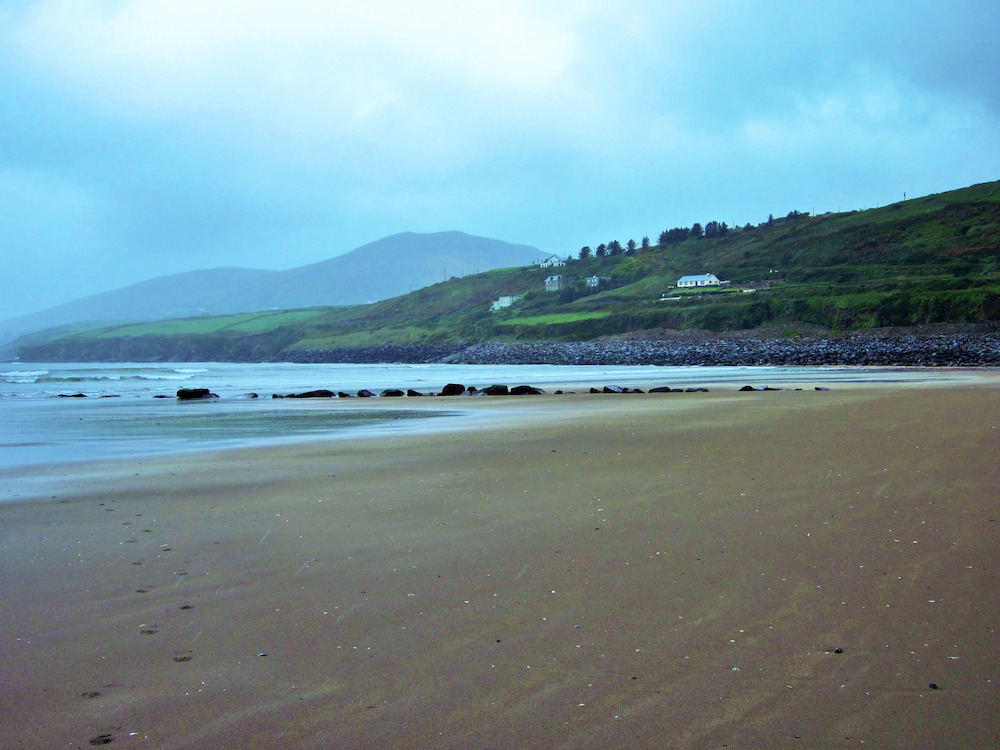
About the Day Tours
This Ireland itinerary without a car is guided tour heavy. I’d prefer it not to be, but as mentioned, it becomes a necessity to reach some of the more rural destinations. If you have longer than a week, it might be worth it to explore some of these options on your own and utilize public transportation more. But with such a short time, these tours can be a great value.
As mentioned, I took a lot of these tours when I was in college. Even when I was a broke college student, I found these tours reasonably priced, which is why I’m recommending them. For almost every single tour, I used the company Paddywagon Tours . Admittedly this was ten years ago (and five years since I’ve used the company in any capacity), but they still get good reviews, so I’m passing on that recommendation. Of course there are plenty of other tour companies, but here’s a good place to start.
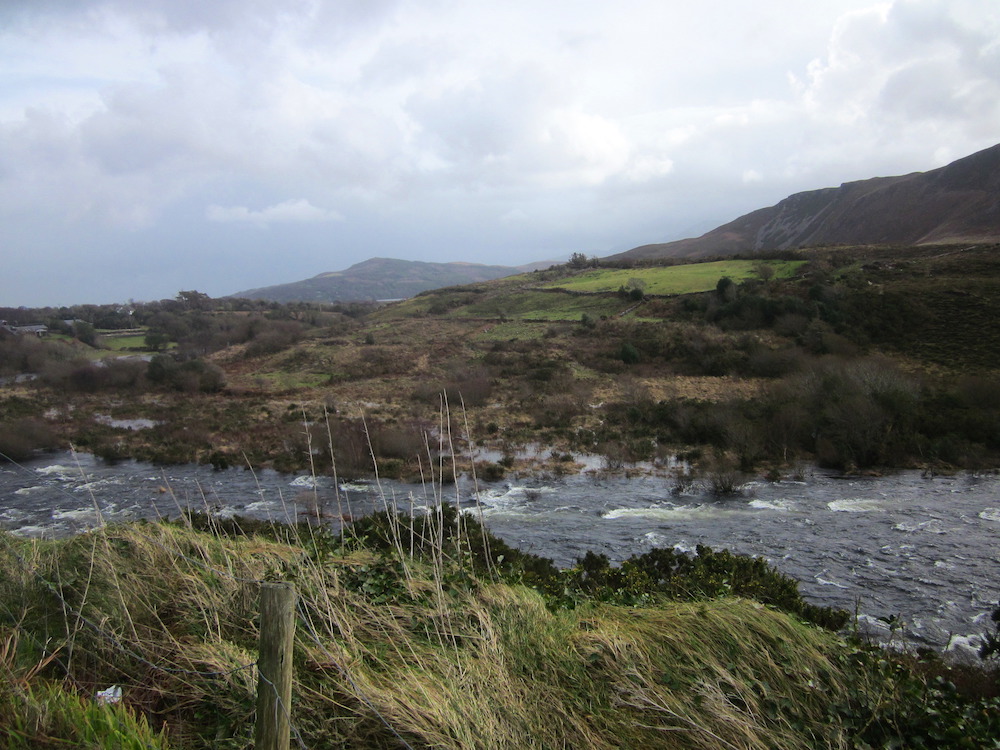
When to Do This Ireland Itinerary
Winter (December through February) will be the coldest, but Spring (March through May) can be very rainy. Summers (June through August) can be warm, but you’ll have the best chance for good weather. Fall (September through November) will start to get cold.
Normally, I’m all for avoiding peak tourist season. In Ireland, that means summer. However, with so much of this trip focusing on natural beauty, you’ll want to have the best weather. Sure, you can get lucky in the off season (my parents visited for a week in April and there was a total of 15 minutes of rain over their entire visit), but it’s no guarantee (the week after my parents left, there was 15 minutes of non rain for the entire week).
If you are completely against peak season, I’d recommend late spring and early fall. You can hopefully squeeze out a few decent weather days on your visit.
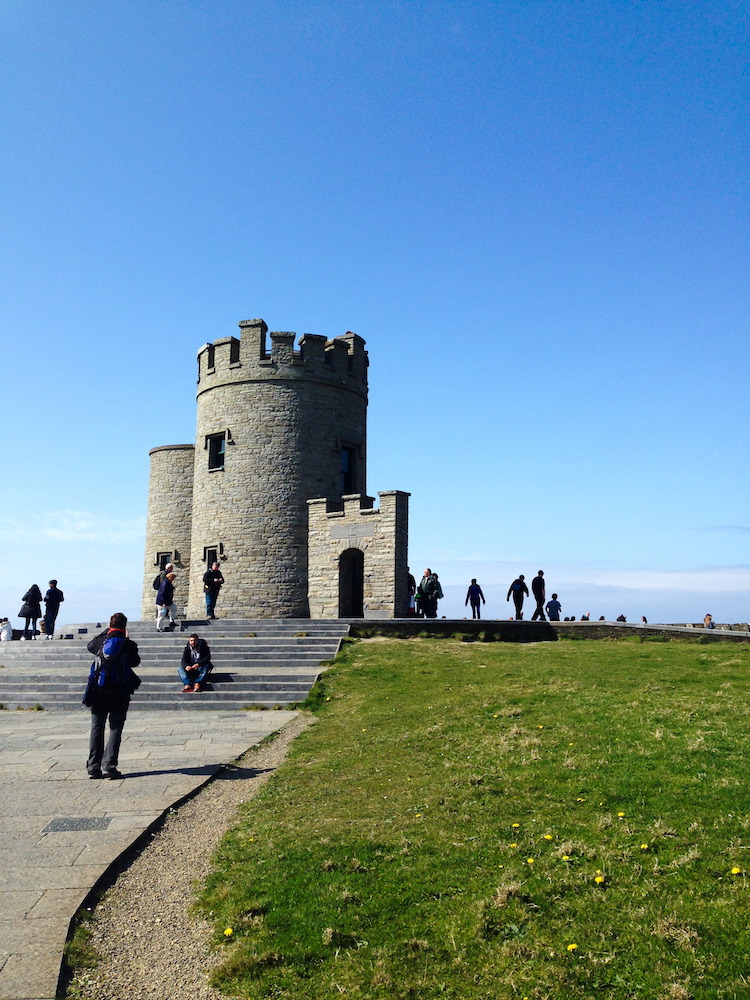
Final Thoughts
While I think Ireland is best explored with your own vehicle, I know there are plenty of travelers who don’t want to rent a car. Since I spend my study abroad exploring Ireland without a car, I feel pretty good about some of these recommendations. You’re sure to have a great time on your trip to Ireland.
Continue Your Adventure
More in Ireland : I’ve put together a list of the best of Ireland as well as a photo tour of this beautiful country. And if you happen to have a rental car, I have a week long Ireland road trip for you.
Car Free Travel : Ireland isn’t the only place I’ve traveled car free in places where rental cars are recommended. I also visited Iceland and France’s Loire Valley .
More in Europe : For more great Europe itineraries, try 10 Days in Spain or Paris, Belgium, and Amsterdam in 10 Days .
Leave A Comment Cancel reply
Your email address will not be published. Required fields are marked *
Save my name, email, and website in this browser for the next time I comment.

Getting Around Ireland – A Complete How-to Guide
For those of you starting to plan your trip to the Emerald Isle, you need to understand a few things about getting around Ireland . There are several ways to traverse the island and with that comes differing opinions. In this post, I’ll discuss the pros and cons of getting around Ireland by car. And for those who’d rather not drive and are wondering how to get around Ireland without a car, you’ll discover other modes of transport options.
Modes of Transport
Tips for travelling by car around ireland, getting around ireland by bus, getting around by coach tours.
*This post contains affiliate links, which may include Amazon affiliate links. To read more about affiliate links, please visit my Disclosure Policy page.
Ireland in itself is not a very big country. It covers 84,421 square kilometres (32,595 square miles) and is just larger than the state of West Virginia and just smaller than Indiana. From north to south, the distance is 486 kilometres (302 miles) and east to west the distance is 275 kilometres (171 miles). You can drive from the most northerly point at Malin Head to the most southerly point of Mizen Head in under 8 hours.
So, relatively speaking, you can cover a lot of the country in a short space of time without having to drive humongous distances. But, how you do it is probably the question you are asking yourself. This post aims to show your options so you can decide which mode of transport is better for getting around Ireland for you.
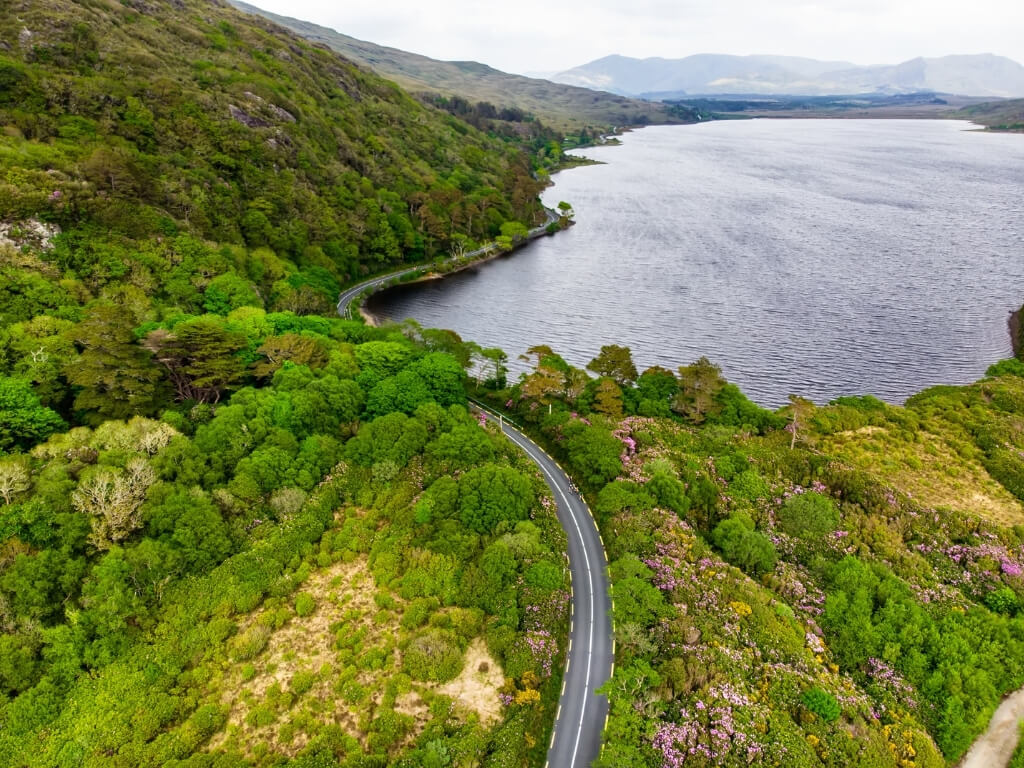
How to get around Ireland
There are a few ways to travel around Ireland and different modes of transport you can use. As well as renting a car, there are options if you don’t want to dive yourself and below you’ll find options for the best way to travel around Ireland without a car. Can you get around Ireland without a car? Yes is the answer, and I’ll show you how.
There are a few modes of transport you can use to get around the Emerald Isle and each will be discussed in the sections below. They are:
- Car, motorbike or motorhome.
- Public transport including bus and train.
- Flying to regional airports.
- Cycling Ireland.
Getting around Ireland by car
Getting around Ireland by car is by far the easiest way. For anyone arriving by ferry via Rosslare or Dublin in the Republic, or Larne in Northern Ireland, you are all set. You just need to ensure your insurance covers you for driving your car in Ireland. But for those arriving in Ireland by plane, hiring a car will be necessary if you plan on driving yourself around Ireland.
Car rental is easy when it comes to Ireland. There are lots of rental companies, including the usual ones and I always start my search for car rental in Ireland with rentalcars.com . I find them to be useful for comparing the size and prices of car hire across multiple companies. Car hire can start from as little as €20 per day for a small car.
Click this link to start your search for car rental in Ireland with rentalcars.com .
Be advised that most rental cars in Ireland have a manual transmission. And although automatic transmission is available it can cost significantly more to hire. So do bear this in mind when considering car hire in Ireland.
If you are planning on visiting both Northern Ireland and the Republic of Ireland and will be using your hire car for this, make sure to advise your hire car company ahead of time. This is to ensure that your insurance covers you crossing the border.
When hiring a car in Ireland, you must ensure you have adequate insurance. I do not pre-purchase the full-excess via Rentalcars. Instead, I purchase it at the car hire desk as oftentimes, the car hire company will not accept the policy from Rentalcars and you are still required to pay a large deposit and claim back anything via the company with which you took out the full excess. Even though this sometimes costs more, it means I do not need to worry about anything after returning the car.
One thing you do not need to hire a car for is if you are simply staying in a city such as Dublin or Belfast. Within cities, traffic can be horrendous and getting around by public transport is not only preferable thanks to dedicated bus lanes and trams, but it can also work out cheaper taking into account fuel and parking charges.
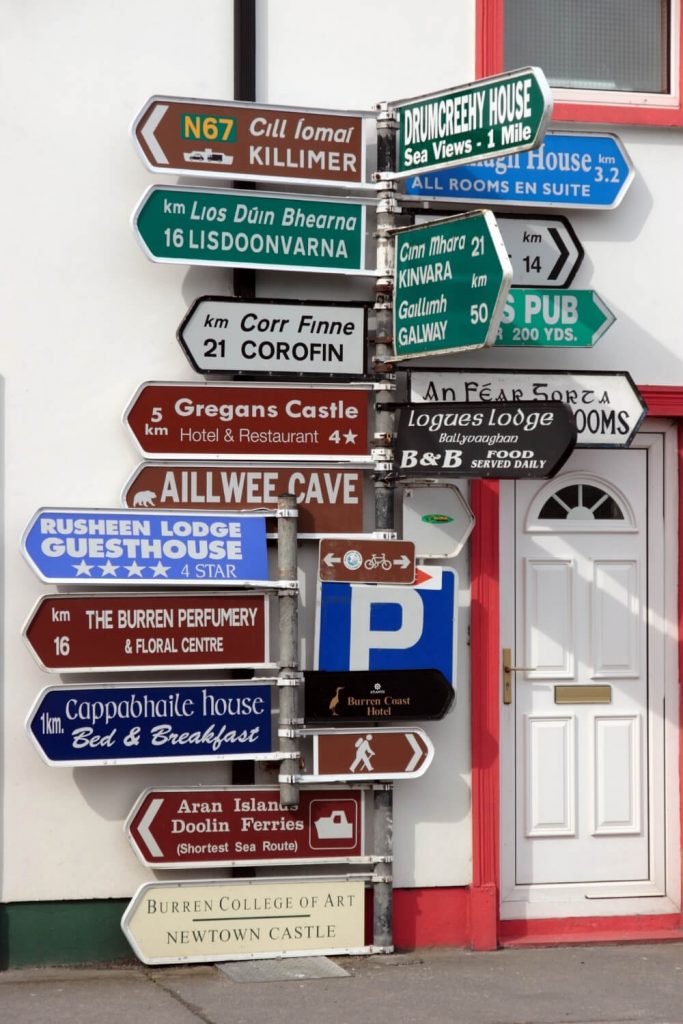
Here are a few quick tips to remember if you are driving in Ireland.
- Cars in Ireland are right-hand-drive meaning you drive on the left.
- Motorways are marked with an M and signs are blue and white. Primary National roads are marked with an N in the Republic and an A in Northern Ireland. And R denoted roads in Ireland are Regional roads, while these are B roads in Northern Ireland.
- In the Republic, speed signs and distance are in kilometres while in Northern Ireland they are in miles.
- Many motorways have tolls, so ensure you have cash in the car in order to pay for these and some booths do not take cards. Make sure you enter the correct payment lane. And note that the M50 around Dublin has electronic tolls. Your hire car company may have an electronic responder in the car to cover these, the cost of which will be added to your final bill when you return the car. If not, you will need to pay these via the website www.eflow.ie.
- GPS navigation may not always be included in the car so download your routes onto your smartphone before leaving, especially if travelling off-the-beaten-track where phone signal may be patchy at best.
- Take extra care on smaller National and Regional roads. Many are single two-way traffic roads and you can often come across a tractor moving from farm to farm and over-taking places may be few and far between on these roads. This goes for both cars and motorbikes.
- You must have a valid driving licence to drive in Ireland. EU licence holders do not require any additional paperwork. However, non-EU licence holders will require an International Driving Licence which you should get from a motoring organisation in your own home country before travelling to Ireland.
- Seat belts are required by drivers and passengers and child safety car seats are mandatory for children under the age of 12 years of age and under 150cm in height. Find out more about seat belts and the law in Ireland here.
- Ireland has many roundabouts and you must give way to traffic coming from the right.
- In the Republic of Ireland, the speed limits are 50km/h in towns and signposted local roads, 80km/h on regional roads, 100km/h on national roads and 120km/h on motorways. In Northern Ireland, the speed limit is 30mph in built-up areas, 60mph on main roads and 70mph on motorways.
- Many towns and cities operate pay-and-display parking, whether it is in a car park, shopping centre/mall or on the street. Make sure to check and pay for your parking before walking away from your car and ensure you have change in case the ticket machine does not take cards. And if you are parking on the street, single yellow lines indicate restrictions while double yellow lines indicate no parking at any time. Look for street signs nearby that indicate parking times and restrictions. If in doubt, ask a passer-by or find somewhere else to park.
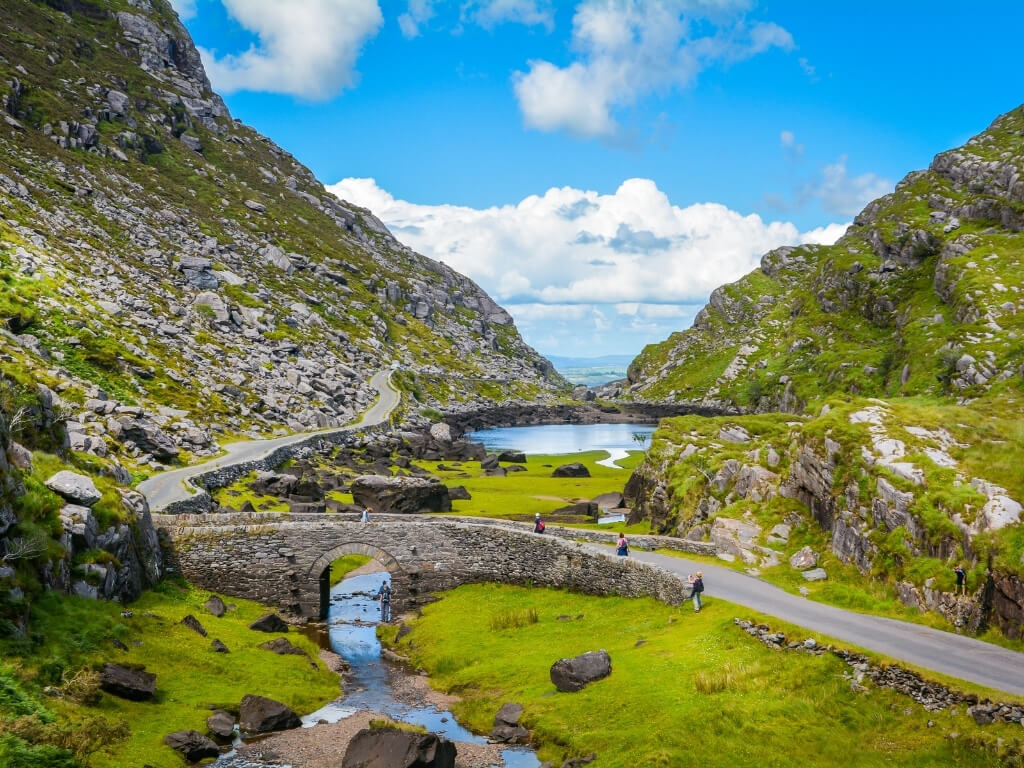
The benefits of hiring a car to travel around Ireland include the fact that it gives you flexibility. You have the freedom to travel where and when you want, stop where you want and also stay where you want, including unique places that might be out of the way. Hiring a car is quicker than using public transport and can often work out cheaper than using tour group coaches or packages.
All of these points also apply to travelling around Ireland by motorbike, although parking may be easier for bikes and tolls are also cheaper, in some cases, there is no charge for motorbikes through tolls. Just be aware that helmets are mandatory for both the rider and pillion and you must have the correct licence and insurance in place.
You can also travel around Ireland using a campervan or motorhome but you will need to find legal places to pull up for the night. Plan this ahead of time. This article has some good information about wild camping in Ireland.
Getting around Ireland without a car
But what about getting around Ireland without driving, if driving on the wrong side of the road is not for you? For the best way to get around Ireland without a car, you have three main options. You can use public transport to get from place to place by either bus or train, you could fly to regional airports and use local public transport from there, or you could opt for cycling around Ireland.
If you are trying to visit Ireland on a budget , public transport may work out the most cost-effective way to travel around the Emerald Isle if car hire is out of your price range.
Getting around Ireland on public transport
Ireland has a good public transport system between the major towns and cities, but beyond that and to smaller towns or points of interest outside towns, the service becomes very limited.
Getting around Ireland on public transport between the main towns and cities is easy. The bus network is a mixture of public and private companies and the rail network serves many of the major towns and cities and is often quicker than taking a bus. At times, public transport can work out slightly cheaper than hiring a car and is definitely the way to travel around within cities such as Dublin, Belfast, Galway and Cork.
Let’s take a look at how to get around Ireland without renting a car and using public transport instead.
Getting around Ireland by train
Getting around Ireland by train is easy between the major cities. Iarnród Éireann (Irish Rail) is the rail network company in the Republic of Ireland while getting around Northern Ireland is easy by train using Translink NI , the operator in Northern Ireland. Train travel in Ireland is quick and easy and booking in advance will give you the most competitive prices on tickets. That said, tickets are relatively cheap most of the time.
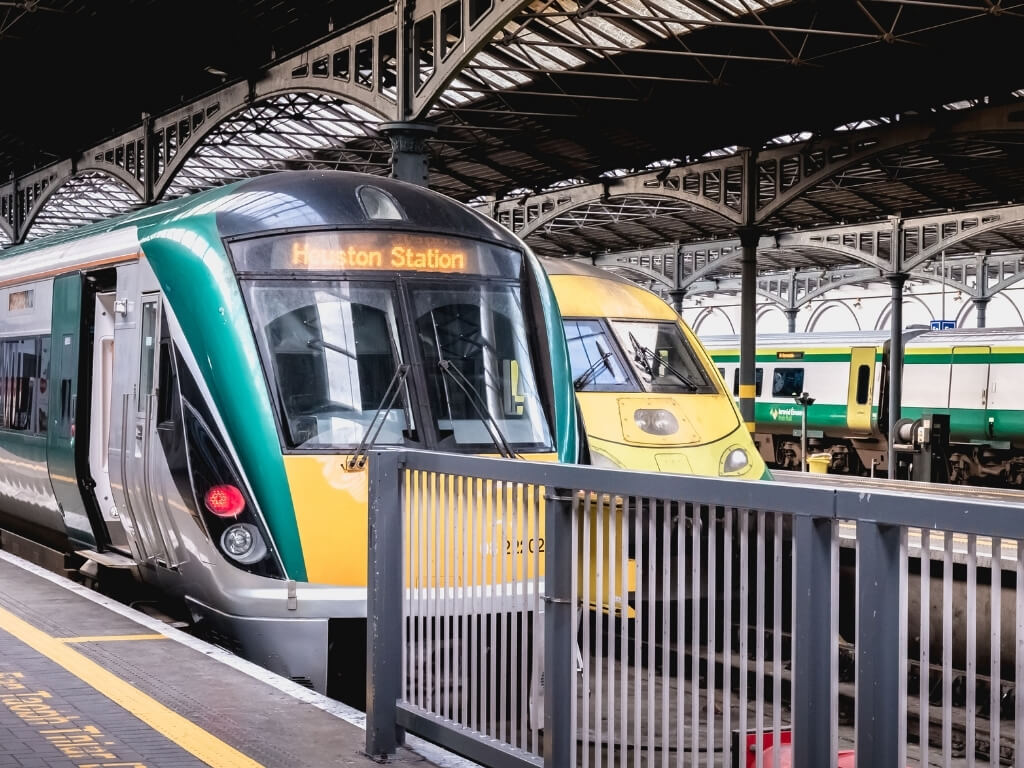
Most lines within the Republic stem out from Dublin and there are some connecting points for other routes in certain towns and cities. But as already mentioned, while the larger cities and towns are served by trains, places such as the majority of the Wild Atlantic Way in Ireland are not served by rail. Similarly, places such as the Dark Hedges in Antrim are not served by rail.
If you are wondering how to get around Ireland by train and see all the must-see places, then you really need to consider your route and must-visit tourist destinations carefully. It will take careful planning and may be more costly than hiring a car.
While getting around by train in Ireland is relatively easy and not complicated, your itinerary will be severely limited to certain places.
Top Tip for travelling Ireland by train – Book your tickets in advance to get the best prices. Look into rail passes which will give you discounted travel over a certain time period. You can explore the Republic of Ireland with Iarnród Éireann using their Trekkers or Explorer Travel Tickets or you can use Eurail Passes to explore both the Republic of Ireland and Northern Ireland.
If you are wondering how to get around Ireland by bus, then wonder no more. As mentioned there are both public and private bus companies and the bus is a better option if you are looking to visit smaller, more out-of-the-way towns. It can also work out cheaper than trains.
In the Republic of Ireland, the main operator is Bus Éireann , while Translink is the main operators in Northern Ireland. Other operators in the Republic include JJ Kavanagh , Citylink and Aircoach (connecting some cities to airports).
Bus Éireann tickets can be booked online but you cannot reserve seats. Most bus journeys last no more than five hours but they can take longer than trains or driving due to the number of stops that may be made along the way. While some smaller towns and village are connected to bigger towns by local buses, these services can be very infrequent, making journeys seem longer. To find out more about public transport by bus in Ireland, check Transport for Ireland .
Be warned, bus services are slowly contracting in Ireland, which means getting to smaller villages and out-of-the-way destinations will become increasingly harder via public transport.
However, connections between larger towns and cities remain unchanged. Dublin has an extensive city bus network, reaching all corners of the county and beyond. With dedicated bus lanes in the city, travelling by bus is easy, cheap and often quicker than driving. If you are only visiting and staying within Dublin, public transport is the best way to traverse the city.
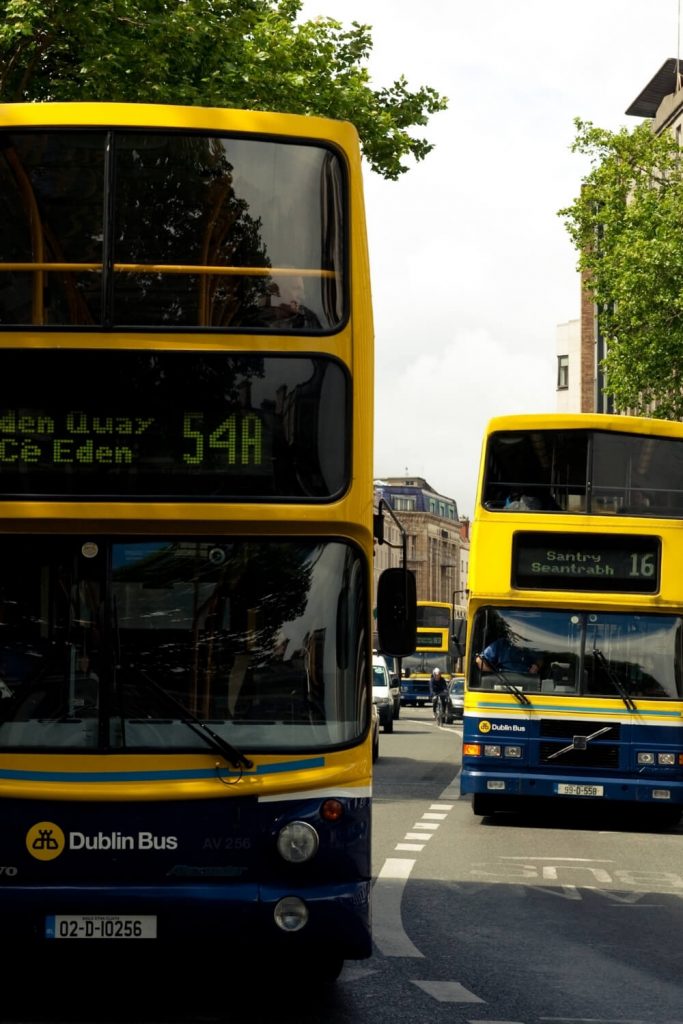
Getting around Ireland by flying
You could use flights to get around Ireland but with its small size, internal flights aren’t really necessary. There are four main, large airports in Ireland. They are
There are generally no connecting flights between these airports as they are used to receive international travellers. It always used to puzzle me why there was no flight between Dublin and Belfast but with the M1 being a good motorway between the two cities, it is not necessary. And there are good bus links to Belfast from Dublin Airport.
Regional airports are usually served from these airports. The regional airports in the Republic of Ireland are (those denoted with a * have more regular flights than the others).
- Aran Islands*
These are typically served by Aer Lingus.
Flying in Ireland is usually unnecessary due to the small size of the island, the fairly short distances between places and the fact that the cities served by internal flights can also be reached by the cheaper option of public transport.
Getting around Ireland by cycling
If you prefer the outdoors and are wondering how to get around Ireland without driving, but avoiding public transport, then cycling is an option. Ireland’s compact size, beautiful landscapes and many accommodation options mean cycling is a real option for exploring the country.
However, a word of warning. Roads, particularly in the countryside can be rough and uneven, with little maintenance carried out from one end of the year to the next. Narrow roads can mean cars may overtake very close to you and at speed. And tractors on country roads are a common sight. However, that said, there are many roads that are hospitable to cyclists, particularly the Great Western Greenway in Mayo and parts of the Wild Atlantic Way .
Some buses will carry bikes if there is room, as will trains (but at a cost, and you must book ahead to ensure there is room on the service for your bike), meaning you could travel via public transport to your furthest destination and cycle back to your endpoint. It is advised that cyclists travelling along the west coast of Ireland travel from south to north to be carried with the prevailing winds rather than struggle against them. And that is good advice as the west coast of Ireland can be a particularly windy place.
Bikes also travel free on passenger ferries such as those going to the Aran Islands, making these ideal destinations for a cycling holiday in Ireland. So, if you are fit, and fancy discovering Ireland by bike, it is an option.
There are companies that arrange cycling tours of Ireland such as Irish Cycling Safaris or Green Marble Tours who do self-guided or guided cycling tours. Or you hire some yourself. Contact the local tourist board at your starting/return destination for recommended companies to hire from if not bringing your own to Ireland.
Getting around by taxi
Cost-wise, getting around by taxi in Ireland is not a cost-effective way to travel. While there are taxis available in most towns and cities, they can work out expensive, even for short distances compared to getting public transport.
Taxis in Ireland are regulated and metered and while Uber is in Ireland it is limited to Dublin and Belfast. And within the Republic, if you use Uber you will be calling a taxi or limousine, not a private car as the company is not allowed to operate private cars in the Republic.
A taxi can prove useful if you are in a city late at night and need to return to your accommodation but otherwise, it is more cost-effective to use public transport in the main cities to get around.
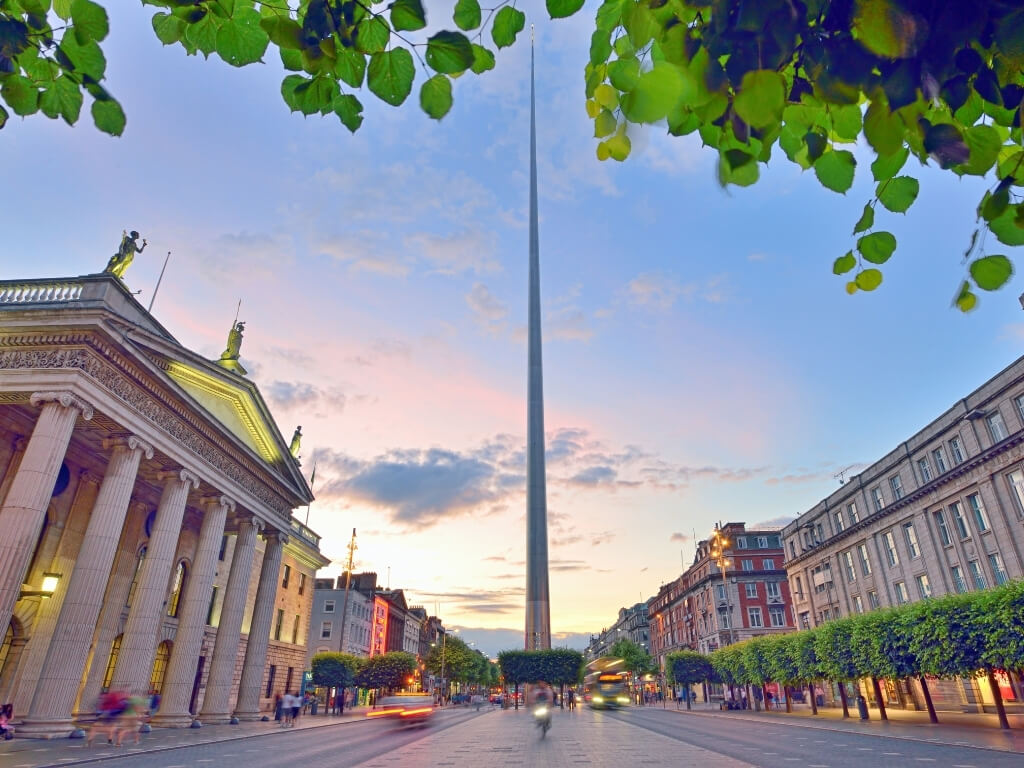
There are lots of coach tours and operators in Ireland who can take the hassle out of driving or using public transport for you and ferry you around to the best places in Ireland to visit. There are two websites in which you will find both short bus tours and day trips and longer tours of Ireland as well.
Get Your Guide is a great site for finding day trips and tours of Ireland. Everything from whiskey distillery tours, to day trips to Glendalough or 9-day tours of Ireland, this is a great starting point for booking a guided tour in Ireland.
Viator is another great site for seeking out tours and day trips in Ireland. Similar to Get Your Guide, they have a host of tour options in Ireland from short tours to popular attractions, to day tours and longer guided trips around Ireland.
However, for a truly unforgettable tour of Ireland, we highly recommend you check out the tours from Rabbies .
Read my comprehensive guide to how to get around Ireland without a car to know more and help you plan accordingly.
Now you have all the information about how to travel around Ireland without a car, why hiring a car might be your best option and information about getting around Ireland by bus or train. The decision very much comes down to whether you want to drive yourself, explore Ireland by public transport or even if you’d rather leave everything to someone else.
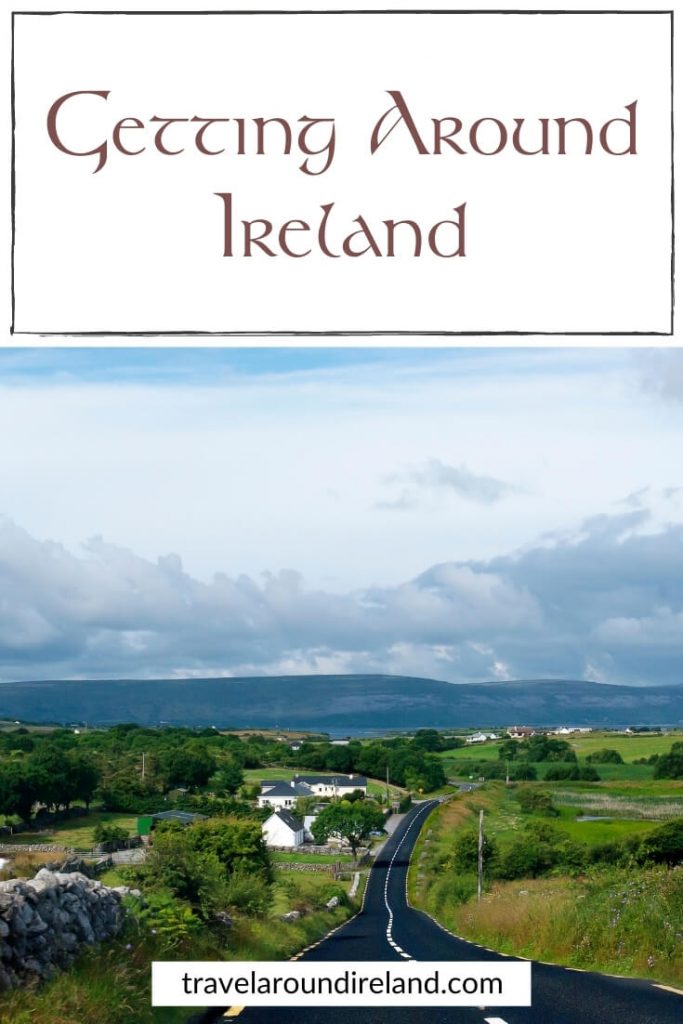
Related Posts
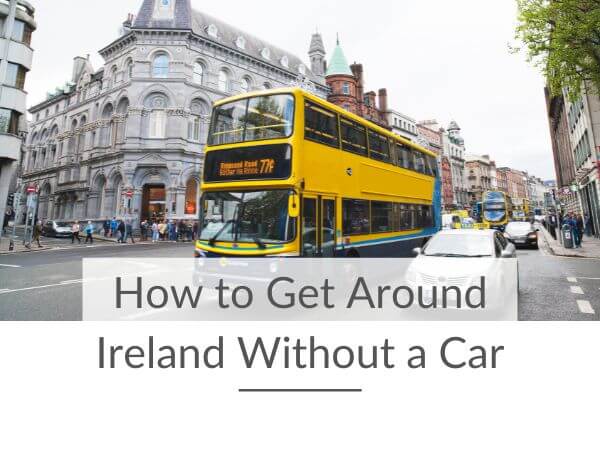
by Cath Jordan
Leave a comment cancel reply.
Save my name, email, and website in this browser for the next time I comment.
Privacy Overview
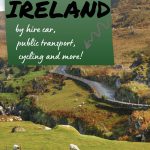

- Small Group Tours
- Self-Drive Tour
- Tailor-Made Tours
- Private Tours
- Overland TV
- Travel Guides
- Jewel Tours
- Self-Drive Tours
- Trust in Travel
- Accommodation
- Overland Transport
Alternative Ways to Tour Ireland Without a Car
How to get around ireland without a car.
We recently wrote a blog trying to help people work out whether they should take a road trip through Ireland . Obviously, we do all the driving on our small group tours of Ireland , so the blog was designed to help people work out whether one of our tours was the right choice for them or whether it was worth driving around our beautiful country themselves on one of our fully planned and booked self-drive tours of Ireland .
These blogs are all part of a series where we try to help people figure out the perfect Ireland vacation for them . Below, we’ll put a few common questions we get and we’ll answer them as best we can. Ultimately, we hope we can help you figure out the best way to see Ireland without a car!
COVID-19 Disclaimer: While it is most certainly not business as usual for the Irish (and global) travel industry, we’ve written this blog to help people planning an Ireland tour once everything has returned to normal — or whatever the new normal will look like. So, while none of the travel options we talk about in this blog are available at the time of writing, we are confident that they will be in the near future.
Can you tour Ireland without a car?
This is such a common question, so we wanted to highlight it. Yes! Of course you can tour Ireland without a car — that’s why we’ve written this blog. Whether it’s because guests aren’t drivers themselves, or because they don’t want to drive on the left side of Ireland’s narrow roads, it seems that a lot of people just really don’t want to drive themselves in Ireland. We totally get it, and that’s where we come in!
Our small group tours of Ireland are perhaps the first obvious way to tour Ireland without a car as we do all the driving for you. You can choose from a range of active (Zest) and more chilled (Jewel) Irish tours or just ask us to create your very own bespoke Ireland tour , exactly as you want it.
Can you tour Ireland by train?

Yes, you certainly can! The train is one of the best ways to get around Ireland without a car. Ireland as it has some of the most picturesque railway routes in the world. If a train is your preferred mode of transport because you love nothing better than gazing out over idyllic landscapes and beaches, then Ireland won’t disappoint. The seaside views on the southern train from Dublin down past Greystones and Wicklow are especially beautiful, as are the views on the route from Cork to Tralee!
The only issue with some of Ireland’s rail routes is that they miss out on some of the hidden gems that veer away from the railway stations. The south-west coast of Kerry and Cork are unforgettable, but you won’t find any train tracks that get you all the way to the coast. So, rail is a wonderful way to get around Ireland, but it’s got its limits; you’ll still need to get into a car, bus, or taxi to get to many of Ireland’s best bits!
Can you tour Ireland on your own?
This is exactly what we focused on with our blog helping readers work out whether they should take a road trip through Ireland on their own. So, check out the link in the introduction. Needless to say, you can tour Ireland on your own but without a car you’ll need to spend a lot more time planning trains, buses, day tours, etc. It can be done, but one thing you will miss out on is the knowledge and insights of a local guide. Also, it’s easy enough to organise a trip around Dublin and Belfast, but it’s much trickier to explore parts of rural Ireland on your own, without a car, and that’s also kind of what people visit Ireland for…
However, if you really want to explore Ireland on your own, but you hate travel logistics and trying to plan an entire trip, you can opt for one of Overland Ireland’s self-guided tours. With this option, you get the feeling of exploring Ireland yourself, but our expert Overland tour guides work behind the scenes to ensure you have an incredible, seamless experience. From booking travel and accommodation to planning tours and adventure activities, your trip can be organised around your needs. Our local guides write instructions and tips just for you, which means you get to see all the hidden gems that only the locals know about! This option is also great for tourists who are worried about being part of a larger group. Prefer to keep to yourself? No worries at all: take one of our self-guided tours!
Can you tour Ireland by motorcycle?

Imagine biking through the Dark Hedges in Antrim…
For anyone who loves getting out on the open road on two wheels, Ireland is great for motorcyclists. As with rental cars, the only issue is that North Americans tend to be used to wider, longer, straighter roads. Ireland, as you’d expect is full of narrow, winding roads that test your turning abilities. So, an Ireland motorcycle tour isn’t a leisure cruise; it’s an active bike ride. If that sounds like your jam, then you should absolutely tour Ireland by motorbike!
Can you tour Ireland by bike?
Yes, you can! Ireland is extremely popular for cyclists. We have some amazing cycling routes and many cyclists choose to go along Ireland’s world-famous coastline. There are lots of narrow country roads that could pose a danger from traffic, but there aren’t usually a lot of cars on the road, so you should be okay. If you’re interested in cycling in Ireland, but you don’t want to spend your entire trip cycling, read more about cycling in Ireland with Overland as many of our small group tours have cycling activities built into them.
That’s all we have time for today. Of course, there are lots of things we didn’t cover as there are loads of different ways to tour Ireland without a car. You can take a motorhome, for instance, or you can travel by bus or by coach. But if you’re sold on one of our small group tours of Ireland after reading this blog, check out our Ultimate Ireland Tour Package — it’s called ‘ultimate’ for a reason! And if you have any questions for us, please feel free to get in touch ! Or if you’d prefer the self-drive equivalent, check out one of our self-drive tours of Ireland !
Planning on visiting Ireland soon? Get our free guides! We answer your Ireland Travel FAQs + offer local tips for visiting Dublin.
Recent Posts

- Destination Guides
- Dingle Peninsula
- Food and Drink
- Northern Ireland
- Overland Ireland
- Ring of Kerry
- Skellig Michael
- Traditions & Culture
- Travel Styles
- Travel Tips
- Wild Atlantic Way
Join Us on a Tour!

Magical Southern 5-Day Ireland Tour

Ireland to Island 7-Day Tour

The Wild West & North Ireland 6-Day Tour

Emerald Explorer 7 Day Ireland Tour

The Ultimate Ireland 10-day Tour Package
See our self-drive tours.

Wild Atlantic Wanderer 6-Day Self-Driving Tour of Ireland

The Ultimate 10-Day Self-Drive Ireland Tour

The Northern Way 7-Day Self-Drive Tour of Ireland

The Best Tips to Know Before Visiting Ireland
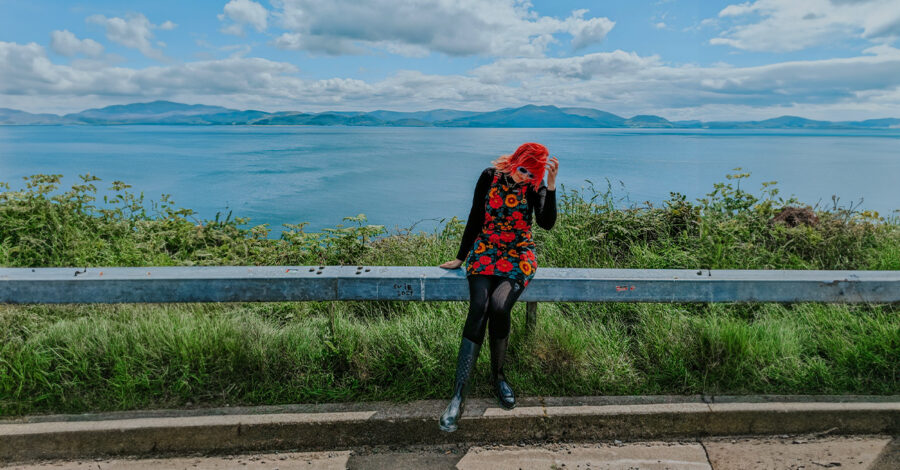
Having returned from a charming two weeks in Ireland , I learned so many things along the way. Ireland is one of the most peaceful and scenic countries I’ve ever visited. It is rich in history, littered with stunning landscapes, and has a vibrant culture! But before you pack your bags and head off to explore its charming towns, ancient castles, and windswept coastlines , you should know a few things to make the most of your visit! From navigating the unpredictable weather to understanding local customs and driving on narrow roads, this guide covers all the essential tips for first-time visitors to Ireland. Whether you’re chasing scenic beauty or craving a taste of the Irish Isle, these insider insights will ensure your trip is as smooth as it is unforgettable.
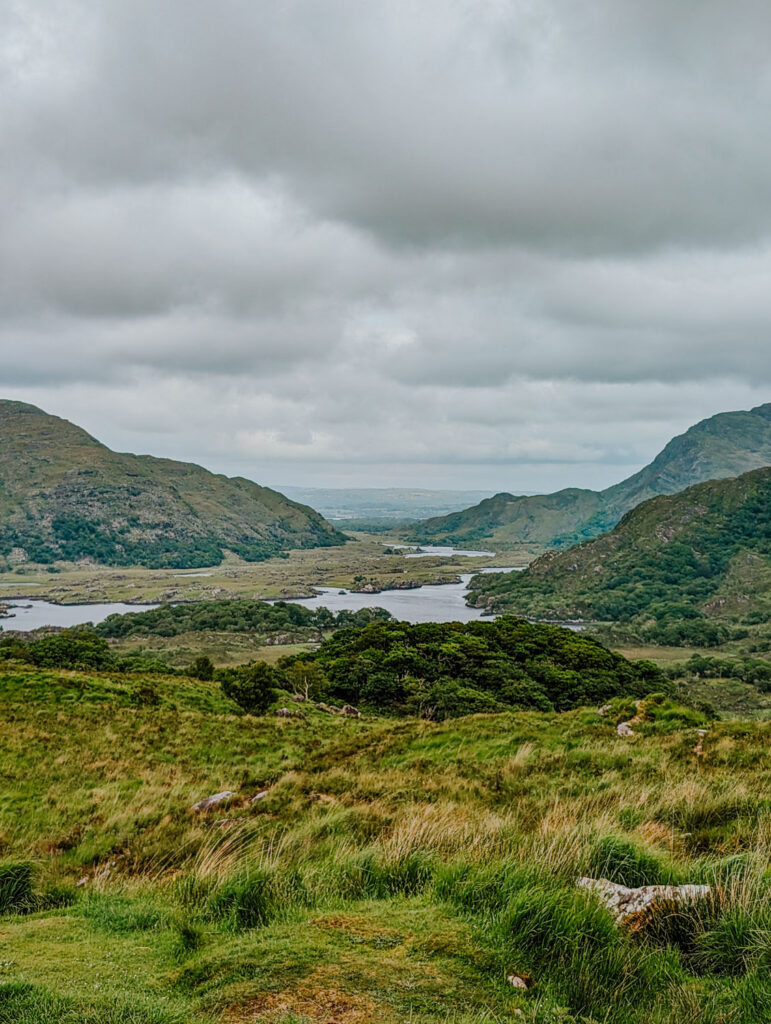
Don’t Spend too much time in Dublin
Exploring Ireland to its fullest means getting out of the city! Too many travellers fly in and out of Dublin without leaving the city! One of the biggest draws of Ireland is its stunning natural landscapes, which include rugged coastlines , green rolling hills , dramatic cliffs , and picturesque countryside . Spending too much time in Dublin means you might miss out on iconic destinations like the Cliffs of Moher , Ring of Kerry , Connemara , and Giant’s Causeway , which showcase Ireland’s breathtaking natural beauty. Even just taking a one-day trip from the city doesn’t allow you to get immersed into the landscape like renting a car or simply taking the train to another city on the other side of the country does.

Be Prepared for Unpredictable Weather
Ireland’s weather is famously unpredictable. And even in one day, you might experience all four seasons! The climate is generally mild, thanks to the influence of the Atlantic Ocean and the Gulf Stream , but frequent changes in weather mean that travellers must be prepared for various conditions.
Ireland’s temperatures are relatively moderate year-round, with average highs ranging from 15–20°C (59–68°F) in summer and 5–10°C (41–50°F) in winter. Rain showers are frequent, no matter the season, so it’s best to be prepared for wet weather even if the forecast looks clear. Also, you must remember that coastal areas, particularly along the Wild Atlantic Way , can be quite windy, making it feel colder than the actual temperature.

Packing with versatility in mind is essential. Here’s what you should include:
Waterproof jacket or raincoat: A high-quality, lightweight, waterproof jacket is a must, as rain showers can occur anytime. Look for something that is easy to pack and can handle sudden downpours.
Layers: Layering is key to staying comfortable in Ireland’s changeable weather. Bring items like long-sleeve shirts, sweaters, and t-shirts that you can easily add or remove based on the temperature.
Comfortable walking shoes: Waterproof shoes or boots are ideal for exploring Ireland’s towns, countryside, and coastal paths. Make sure they have good traction, especially for slippery surfaces. If you’re going to be walking on any of Ireland’s countryside hikes, you’ll almost doubtlessly run into sheep and with sheep come sheep pop. And you’ll be very thankful to have the boots with you and not a fancy pair of shoes!
Umbrella: A strong, small, compact umbrella can be handy to keep in your day bag for quick protection against the rain, but it is not a substitute for a good raincoat, as the strong winds often make even the best umbrellas useful.
Warm clothing: It can get chilly in the summer, especially in the evenings or along the coast. Bring a warm sweater, fleece, or light jacket for those cooler moments.
Hat and gloves: Even in the late spring, it was great to have a pair of gloves, a hat and a scar on hand to keep us warm on cold, windy days. And if you’re visiting in the winter, you’ll need these!
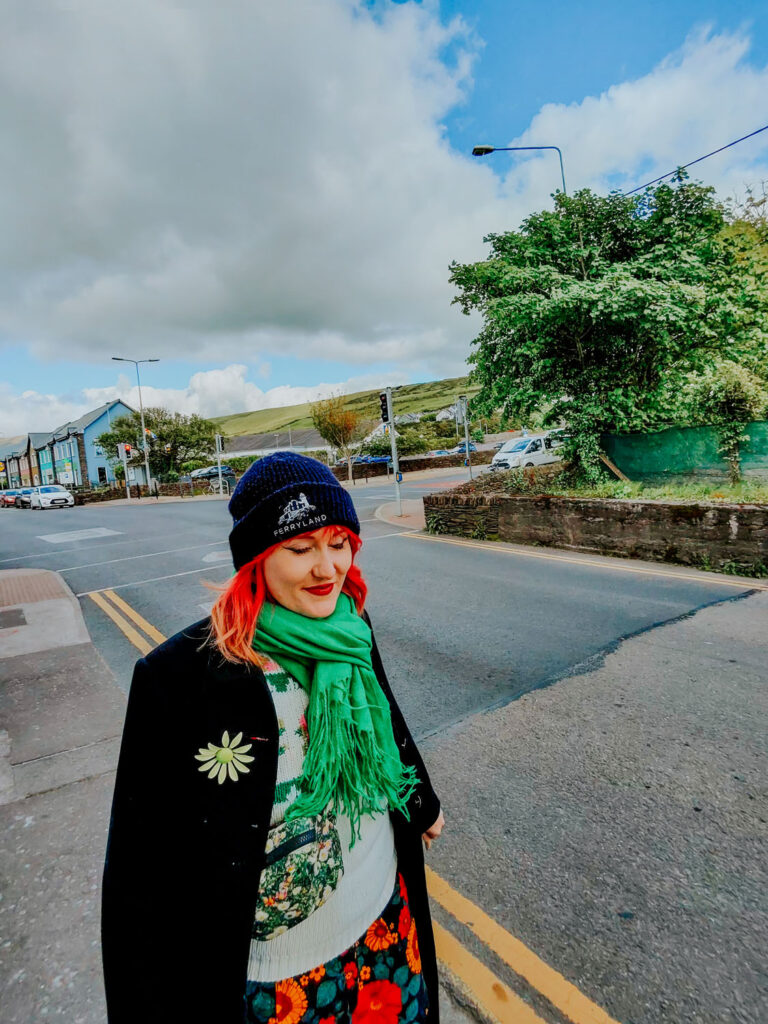
If you’re travelling in a car, we always make sure to leave a packing cube filled with a change of clothes, both warmer and cooler, so we are prepared for any change of weather or if the clothes we were wearing god soaked through with rain. Trust me, even carrying a change of socks makes a big difference on a cold rainy day!
Travel out of Season if you want fewer Crowds.
I envisioned an isolated Irish countryside and sights devoid of people where I could experience a transcendental moment. But what surprised me was, even in remote locations, how many tourists there were even in Spring, before the height of the summer months. If you’re looking to avoid the busiest tourist season in Ireland, the low season runs from November to the middle of March. However, there are some considerations to make when visiting outside of tourist season, aside from the obvious, such as the cold, damp weather. Irish winter days are short, so you must plan your itinerary accordingly. Additionally, some places might be closed out of season, so you’ll want to check in advance if any sights on your “must-see” list are closed for the season.

Don’t Rush Through the Country
I read so many blogs that made it seem like you could travel the whole country and see it all in seven days. But even if this were possible, it would mean spending mere minutes at each sight. When visiting Ireland, it’s best not to rush your itinerary and instead take your travels at a slower pace. The charm of Ireland lies in its scenic landscapes , cozy villages , and hidden gems , all of which are best appreciated when you take your time. Rushing from one tourist spot to the next can lead to missing out on spontaneous moments, such as stumbling upon a local pub with traditional music, engaging in friendly conversations with locals, or stopping to admire a breathtaking view along a coastal road. Travelling slowly also allows you to absorb the authentic atmosphere of small towns and villages, savour local food, and experience Ireland’s welcoming culture. The distances in Ireland might seem small, but the twisting, narrow roads make travelling even shorter distances a longer-than-expected drive.
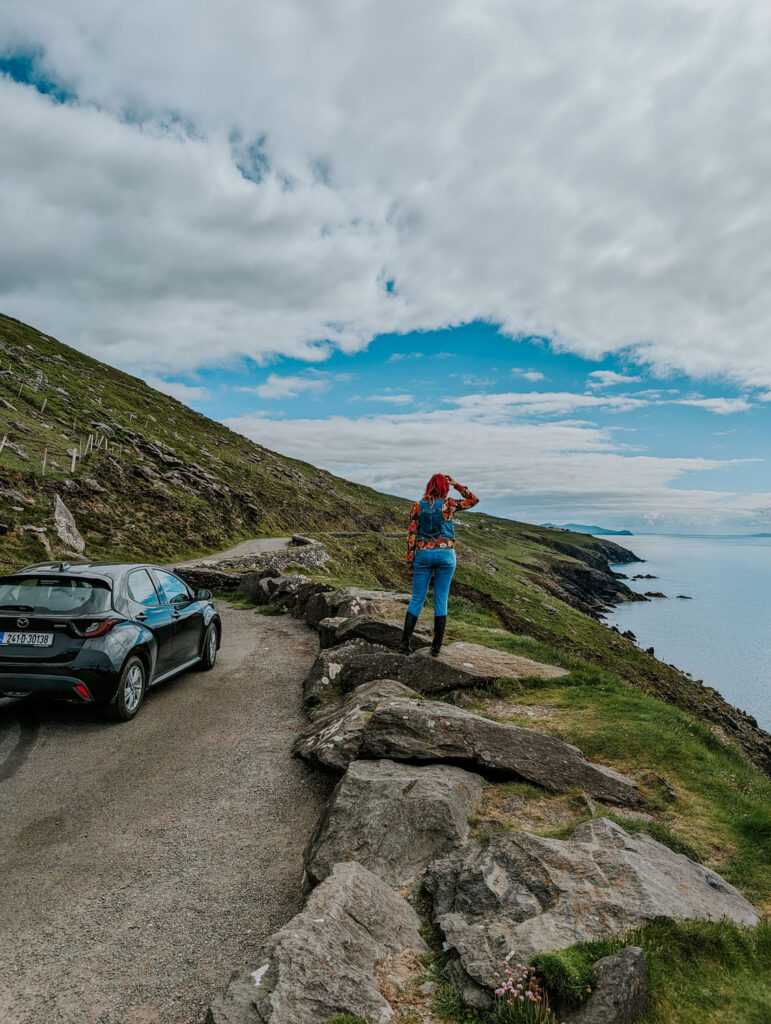
We appreciate the days so much when we would stay in a town for more than one day at a time. It allowed us a break from the constant packing and unpacking and also gave us opportunities to explore a hidden cliff path or take an hour or two to just sit by a quiet lake. You won’t be able to see it all and trust me, you’ll be thankful you removed a few spots from your list to take it easy and allow yourself to appreciate a moment of rest and relaxation over being stuck in your car every minute of the day.
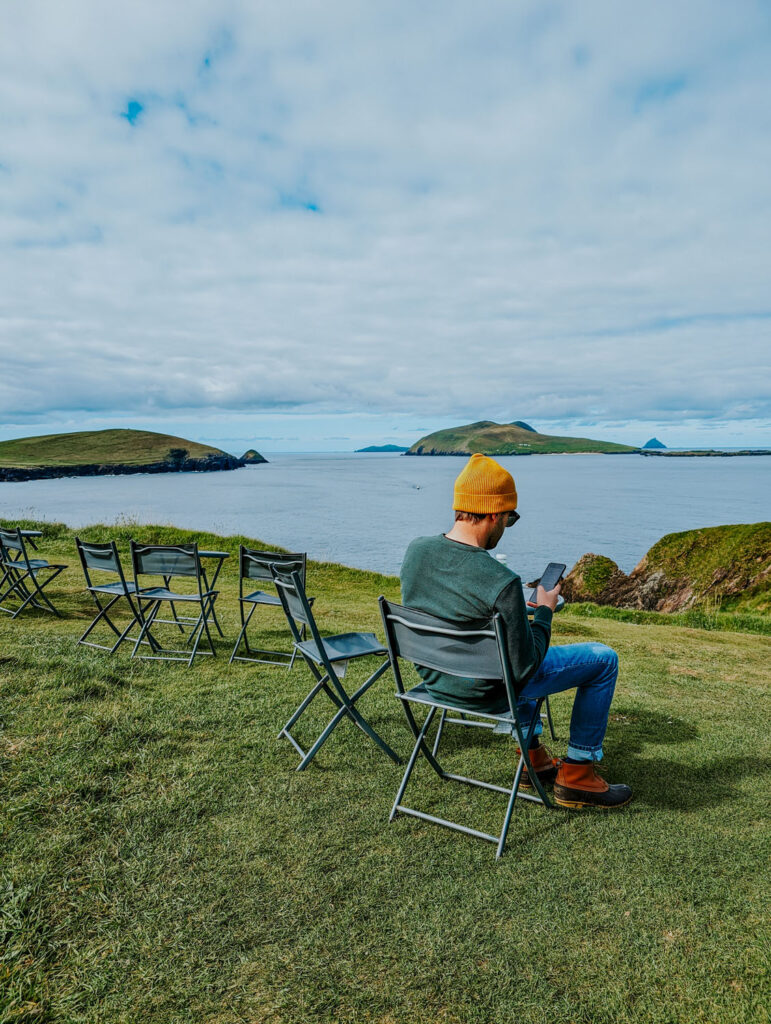
Book a Bed and Breakfast!
When booking the accommodation for our trip, one of the things I was most excited about was the bed and breakfast! The charm, architecture, characters you’ll meet and unique locations when booking a bed and breakfast (B&B) in Ireland are far superior to the comfort and familiarity of a normal hotel. Staying in a B&B allows you to experience true Irish hospitality. These establishments are often family-run, and hosts are known for being friendly, welcoming, and eager to share local tips and recommendations. You’re more likely to feel like a guest in someone’s home rather than just a tourist.
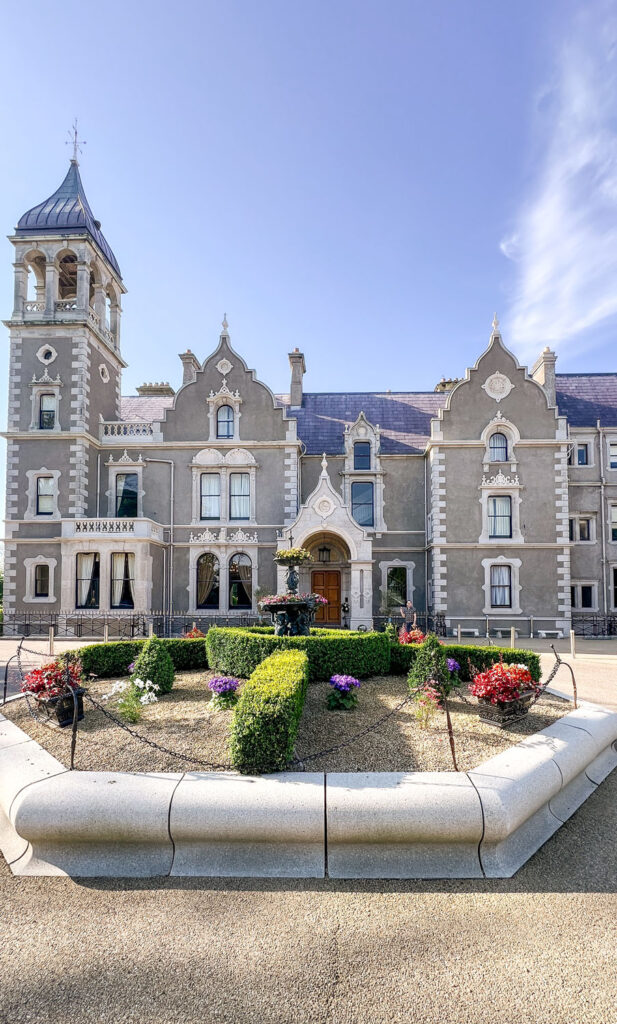
So many B&Bs in Ireland are located in historic properties, like old royal residences, royal hunting lodges, and even ancient palaces! Staying in these properties felt like moving into your very own castle! A few of the properties we stayed at even had their own private grounds with hikes and walking trails to explore where we didn’t see a single other tourist and felt like we had a slice of Ireland right to ourselves.

But my favourite part of the B&B is the second ‘B’, BREAKFAST! Often included in the price, you’ll get a hearty home-cooked breakfast. These are most often served buffet style but will always include a traditional Irish breakfast, which can include eggs, sausages, bacon, black pudding, and freshly baked soda bread, setting you up for a day of exploring. Soda bread is a traditional Irish bread made without yeast and with the addition of buttermilk. The buttermilk gives the bread a mild, slightly tangy flavour , and the wholemeal flour adds an earthy, nutty taste that pairs fantastically with Irish butter and jam.

You Don’t Need to Fly in and out of Dublin
When planning a trip to Ireland, one great tip to maximize your experience is to fly into one airport and out of another, such as arriving at Cork Airport and departing from Dublin Airport (or vice versa). This allows you to avoid a circular itinerary, meaning you don’t have to backtrack to your starting point. Returning a rental car to a different airport than where you picked it up might incur a small fee, but it can save you money on fuel and extra driving costs. Since Ireland has an extensive network of narrow, winding roads, particularly in rural areas, less time spent driving long distances means less fuel consumption and potentially a lower overall cost for your rental car.

The Best Driving Tips
Book your rental car in advance.
But with so many visitors renting cars, this means that ensuring your rental is booked well in advance is even more important. Additionally, if you’re visiting outside of Europe, you might be surprised to find that most of the available rental cars in Ireland are manual and not automatic. And if you’ve never driven a manual car before, trust me, the Irish country roads are NOT the place to learn! Booking in advance ensures you’ll get the automatic car you want, and of course, you’ll find better prices in advance compared to the last minute.
Rent a SMALL Car
Although the idea of being in a nice, roomy car with lots of space to stretch out and carrying lots of storage might seem appealing for an Irish road trip , the roads in Ireland are some of the narrowest in the world. Often, you’ll be going down what looks like a single-lane road , only to find a local Irish driver barreling down towards you, and the only way to let them pass is to practically drive off into the ditch. And in these moments, or when passing cars on narrow roads along the cliff , you’ll be very thankful to have rented a little car. The smaller, the better. It also makes parking a breeze, and you’ll even save a bit of money on gas (or petrol as it’s called in Ireland).
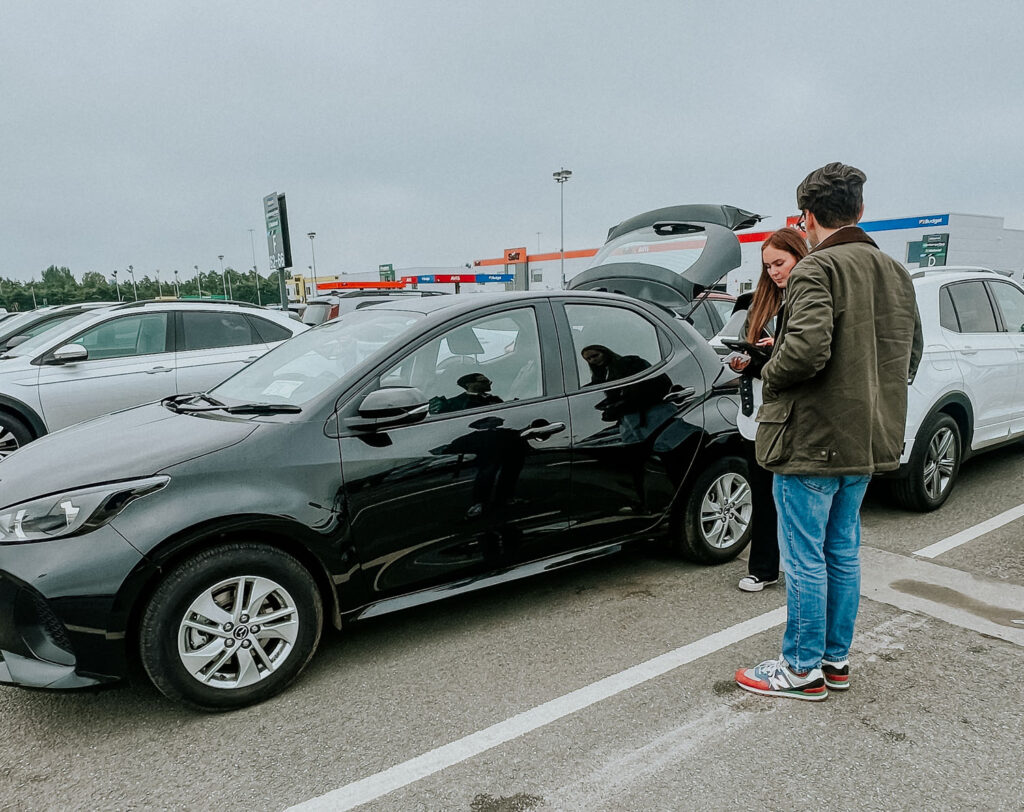
You might consider renting two smaller cars rather than a large van if travelling with a larger group. Not only does this mean you can split off if different members want to get up to different activities throughout your trip, but it will definitely be less nerve-racking than driving a large van around the narrow, bendy roads.
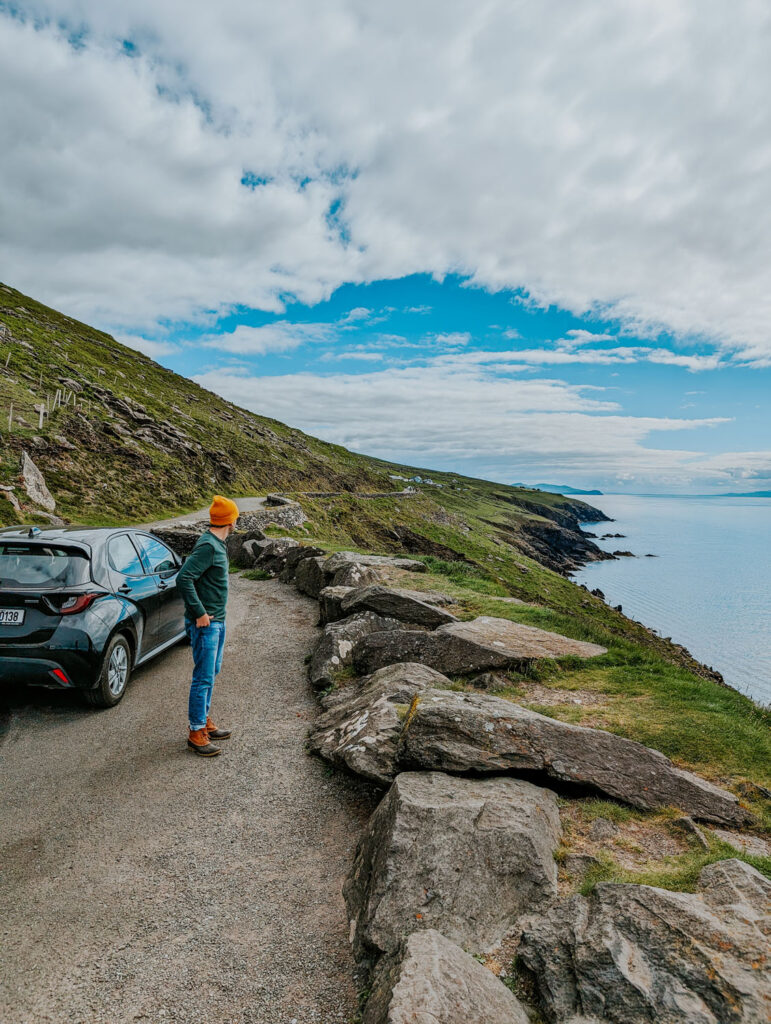
You’ll Need Special Car Insurance
When we got our rental car, they asked us if we needed insurance , but as seasoned travellers, we are used to our credit cards covering most rental car insurance as it had in many other countries. But when we were urged to look at the fine print, we realized that, yes, indeed, our regular insurance did not cover Ireland! And honestly, after seeing the roads, I know why. The locals told us how many visitors lost their side mirrors to those surprise narrow turns! You’ll want the peace of mind that knowing if something happens, you’ll be covered. So double-check if your regular travel insurance has Ireland listed as driver’s insurance and what it covers. If you need extra coverage, your rental car agency should be able to help you find the best options.

Irish Toll Roads
Ireland has a few toll roads and highways around major cities. The main toll roads are found on motorways (indicated by an “M”) and include routes like M50 (Dublin Ring Road), M1 (Dublin to the Northern Ireland border), M7/M8 (Dublin to Limerick and Cork), and M4 (Dublin to Galway). There are also a few toll bridges and tunnels, such as the East Link Toll Bridge and the Dublin Port Tunnel .
The M50 Toll Road ( e-Flow ) in Dublin is the most famous and operates without physical toll booths. Instead, it uses an electronic toll system called e-Flow , where your car’s license plate is photographed, and you are billed afterward. If you’re in a rental car , most companies will automatically handle this toll for you and bill you after the fact, but you should check with the rental company to avoid extra charges. If not, you must pay the toll online by 8 pm the day after using the road. You can pay the fee online at eflow , but the easier way is to stop at a petrol station and find a Payzone station , where you can also pay the fee and don’t need to worry about doing it online later in the day. Toll charges range from about €1.90 to €3.00 per toll, depending on the road. The M50 toll costs about €3.10 .
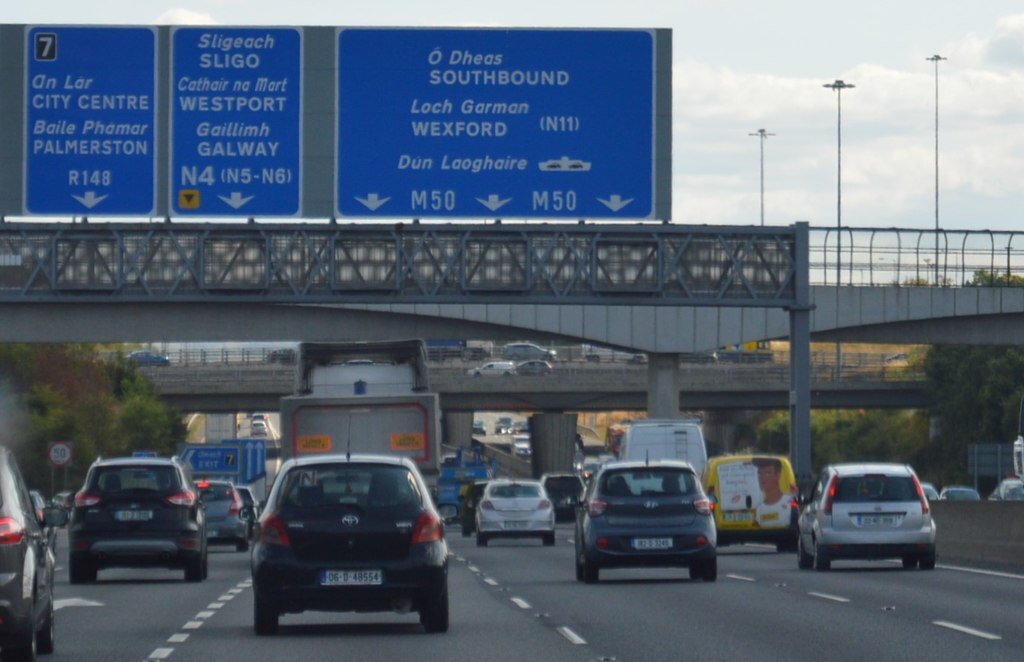
Is the Irish Toll Pass Worth Getting?
Our rental car agency allowed us to buy a Toll Pass for €5/day , enabling us to drive right through the toll pass gates without worrying about paying for each toll as we passed through or paying the e-tolls online . While the convenience of it is worth it if you’re driving a lot on the main highways , we found that most of our trip was in the rural areas off the main highway , so it would have been more economical to simply pay tolls as you go .
If you’re wondering if the toll pass will be worth it for you, you can check out this interactive map of all the tolls around Ireland to see how many you’ll be passing through. When we passed through the automatic payment gates, which didn’t require paying the toll at the booth, we saved a bit of time, but honestly, there was never a long line to pay, and the cars moved through very quickly, so it was not like this save you tons of time either.
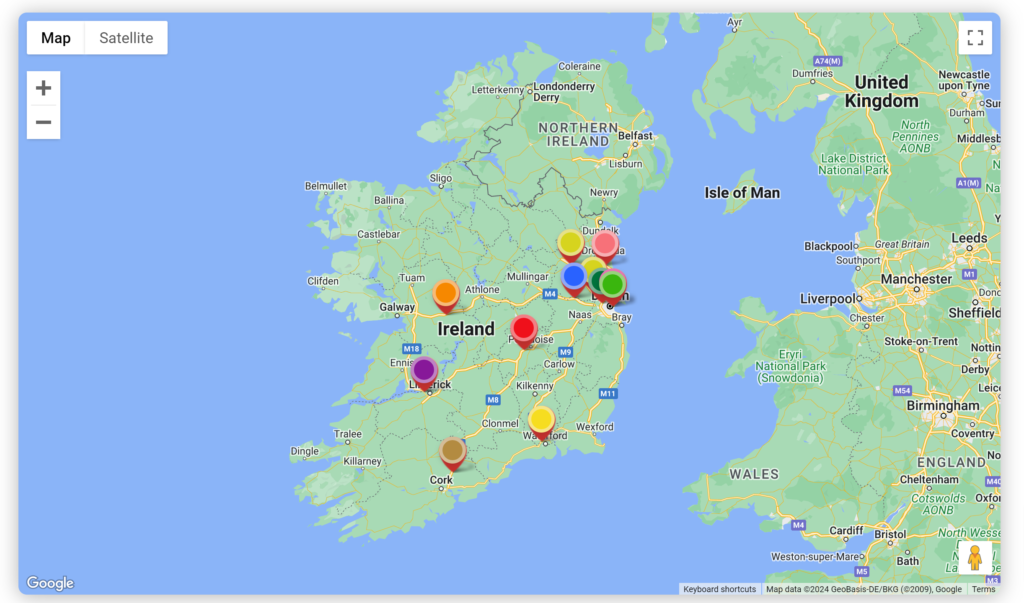
The Roads REALLY are that Intense!
I had heard so much about roads in Ireland , but honestly, nothing prepared me for how narrow and curvy they were and how FAST the speed limits were set! We would drive along narrow countryside roads and see speed limits of 80-100km/h !! I couldn’t believe how the local drivers did it. Coming from Canada , we see speed limits as a guide to the average speed you should drive and nothing over, but we found in Ireland it was much smarter to drive at the speed you felt the safest driving as this not only protects yourself and those in your car but other drivers as well. If you have a speedy local driving behind you, kindly let them pass . They are used to tourists and will appreciate being able to pass you by to let you go at your own pace.
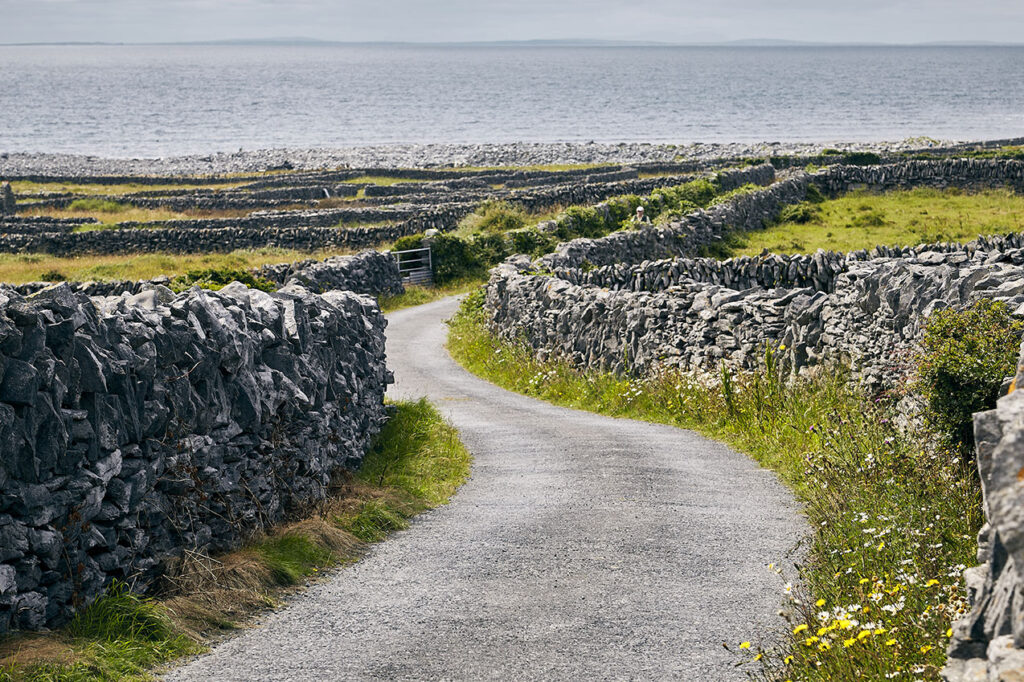
How to Prevent Car-Sickness
I get VERY sick in the car, especially on winding, narrow roads. So I can tell you I tested everything to find out what worked best to make me feel better and enjoy the streets as much as possible. If you’re prone to motion sickness, sitting in the front seat allows you to see the road ahead, reducing disorientation and nausea. Keep your eyes focused on a distant, stable object, like the horizon, to help your brain sync with the car’s motion. Ireland’s scenic routes offer plenty of places to stop and stretch. Frequent breaks for fresh air can help prevent motion sickness.
Ginger candies, ginger tea, or peppermint can help settle your stomach. These natural remedies are known for reducing nausea for those without severe sickness. Car-sick glasses , also known as anti-motion sickness glasses , are a relatively new and innovative solution designed to prevent motion sickness, including on Ireland’s winding roads. These glasses create an artificial horizon in your peripheral vision, which helps your brain align with the car’s motion, reducing the sensory conflict that causes nausea. I find that they work well for certain roads, but on the really winding, fast roads with sharp turns, the only thing that really works is medication. Over-the-counter medications like Dramamine, Gravol, Ireland, and Stugeron are some brands to look for. They make you drowsy, but I found that if I had a quick cat nap, I could be awake for the rest of the drive. Some people find motion sickness wristbands or ear patches work well, but I’ve never found they worked for me. But it’s always worth a try, as everyone reacts differently.
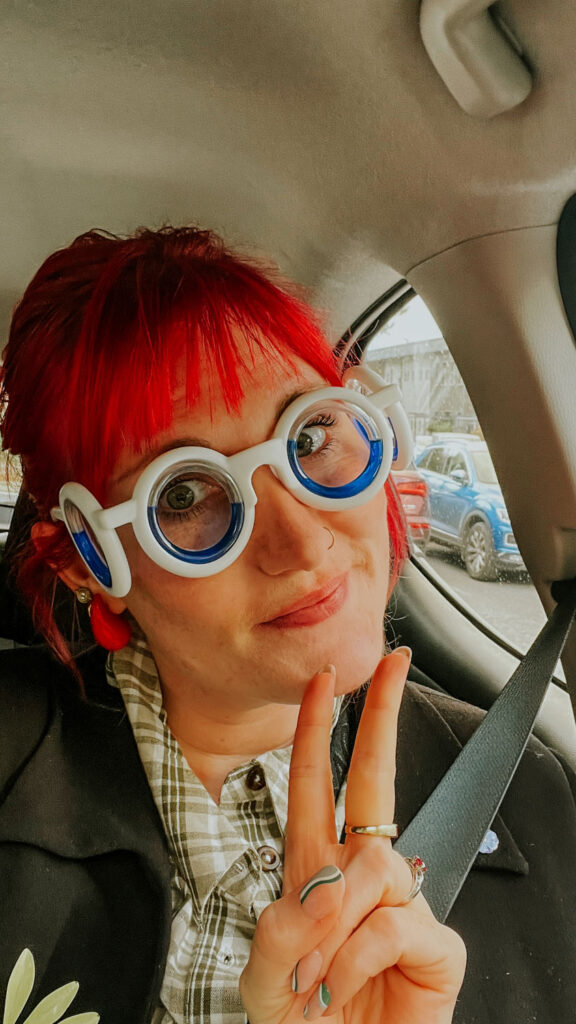
Irish Finger Flick
If you want to blend in like a local, when you encounter an oncoming vehicle on one of Ireland’s narrow roads, it’s customary for locals to acknowledge the other driver by lifting their index finger (usually of the right hand) just an inch or two from the steering wheel, often with a slight nod. This is a common roadside greeting that adds a nice touch to getting into the driving rhythm on these roads.
Tips on Driving the Ring of Kerry
Ok, now that you have your rental car and are ready to hit the road, one of the first places many travellers go is to the Ring of Kerry . The Ring of Kerry is one of Ireland’s most famous scenic drives . The circular route spans about 179 kilometres (111 miles) and hugs the coastline of the Iveragh Peninsula , offering panoramic views of the Atlantic Ocean , sandy beaches , and dramatic cliffs . Key coastal highlights include the Skellig Islands , visible from certain viewpoints, which are famous for their rugged beauty and as a filming location for Star Wars . Along the route, you’ll find picturesque towns and villages like Killarney , Kenmare , Sneem , and Cahersiveen , as well as historic sights like Ross Castle . One of the highlights of the Ring of Kerry , Killarney National Park is home to ancient woodlands , serene lakes , and the stunning Torc Waterfall .
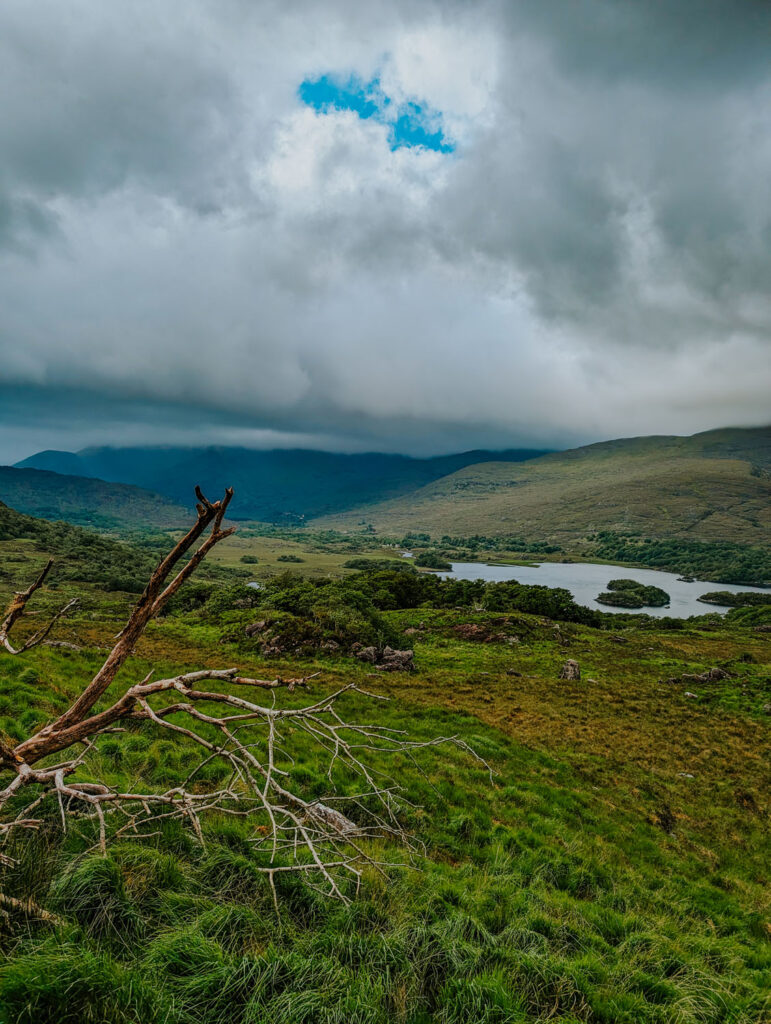
What Direction to Drive the Ring of Kerry?
The best tip for driving the Ring of Kerry is to start the ring counterclockwise (starting in Killarney and heading toward Kenmare ). All the large tour buses agree to drive counterclockwise , so by driving opposite the buses, you won’t need to worry about being stuck behind them or having all the stops overrun with the tourists coming off those buses, most of which run on very similar schedules.
Even without the buses, the route is very popular, especially in summer, so it can be crowded. Leaving early in the morning or travelling during off-peak months can help you avoid crowds.
Alternative to the Ring of Kerry, The Ring of Beara
If the Ring of Kerry ‘s touristy roads don’t appeal to you, an alternative scenic drive is the Ring of Beara. This stunning coastal route is less famous but equally, if not more, picturesque than the Ring of Kerry!
The Ring of Beara offers rugged and untouched beauty, with dramatic cliffs plunging into the Atlantic Ocean, quiet beaches, and panoramic views over Bantry Bay and the Kenmare River . The Ring of Beara is also much quieter and less commercialized, so if you prefer a more relaxed, off-the-beaten-path experience where you can enjoy the beauty of Ireland’s landscapes without the hustle and bustle of large crowds, the Ring of Beara is ideal.
The drive takes you through narrow mountain passes, such as the Healy Pass , which winds through stunning, rocky terrain and offers some of the most spectacular views in Ireland. The route is known for its lush valleys, rolling hills, and scenic lakes. And there is no shortage of quaint and charming towns and villages.
The Ring of Beara is approximately 137 kilometres (85 miles) long; it’s slightly shorter than the Ring of Kerry, so if you’re looking for a slightly shorter day, especially for that traveller in the winter months when there is less daylight, this might be the better option.
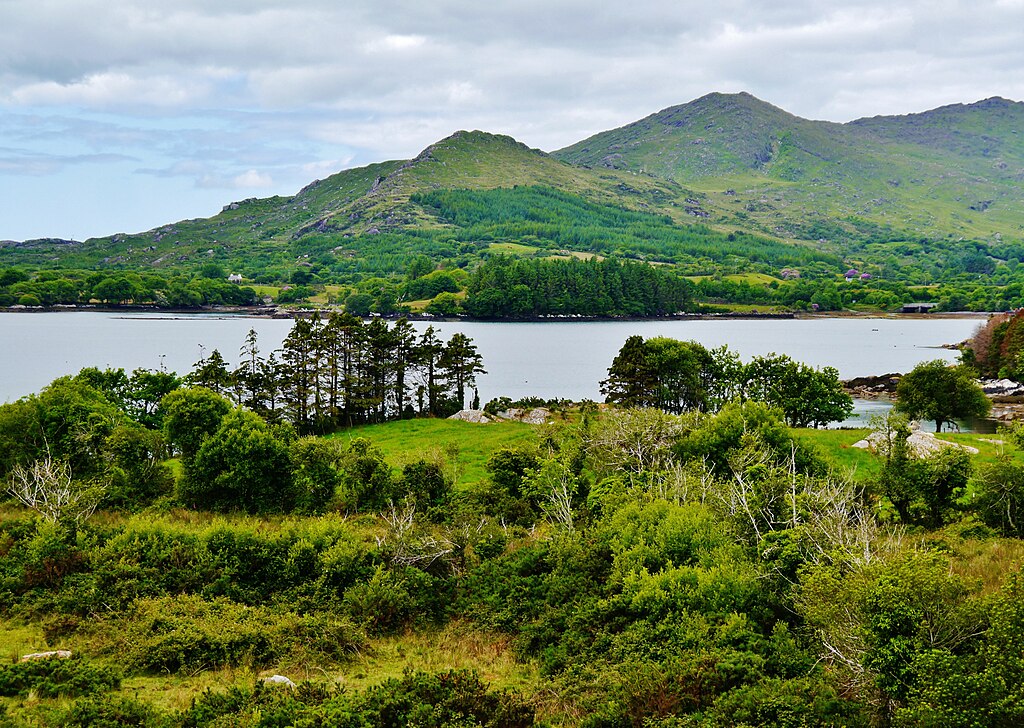
Ireland Drives on the Left Side of the Road.
Driving on the left side of the road in Ireland can be a bit of an adjustment for visitors from countries where driving on the right is the norm. The driver’s seat is on the car’s right-hand side, and roundabouts (traffic circles) move clockwise. It’s important to stay alert, especially when navigating narrow rural roads or making turns, as instinct might cause confusion. Many rental cars even have signs inside the vehicle reminding you to drive on the left, so you’ll always remember front and center!
You Don’t Need a Car to see Parts of Ireland
Ok, so after all this talk of driving, you probably are thinking, I guess I NEED to rent a car if I want to visit Ireland. And the truth is, while renting a car allows you to explore so many parts of the country that just aren’t accessible by any other route if visiting Ireland is one of your travel dreams and you can’t drive or are too scared to drive on the other side of the road, there are other options! Ireland’s train network, operated by Iarnród Éireann (Irish Rail) , connects many key cities and towns, making it a convenient option for travellers. While not as extensive as other European countries, the rail system provides good access to major destinations, particularly along the East Coast and some parts of the South and West. Dublin is Ireland’s primary hub for train travel, with two major stations. From Dublin, you can reach many other cities and towns across the country, like Cork, Galway, Belfast, Kilkenny, Killarney, and Sligo.
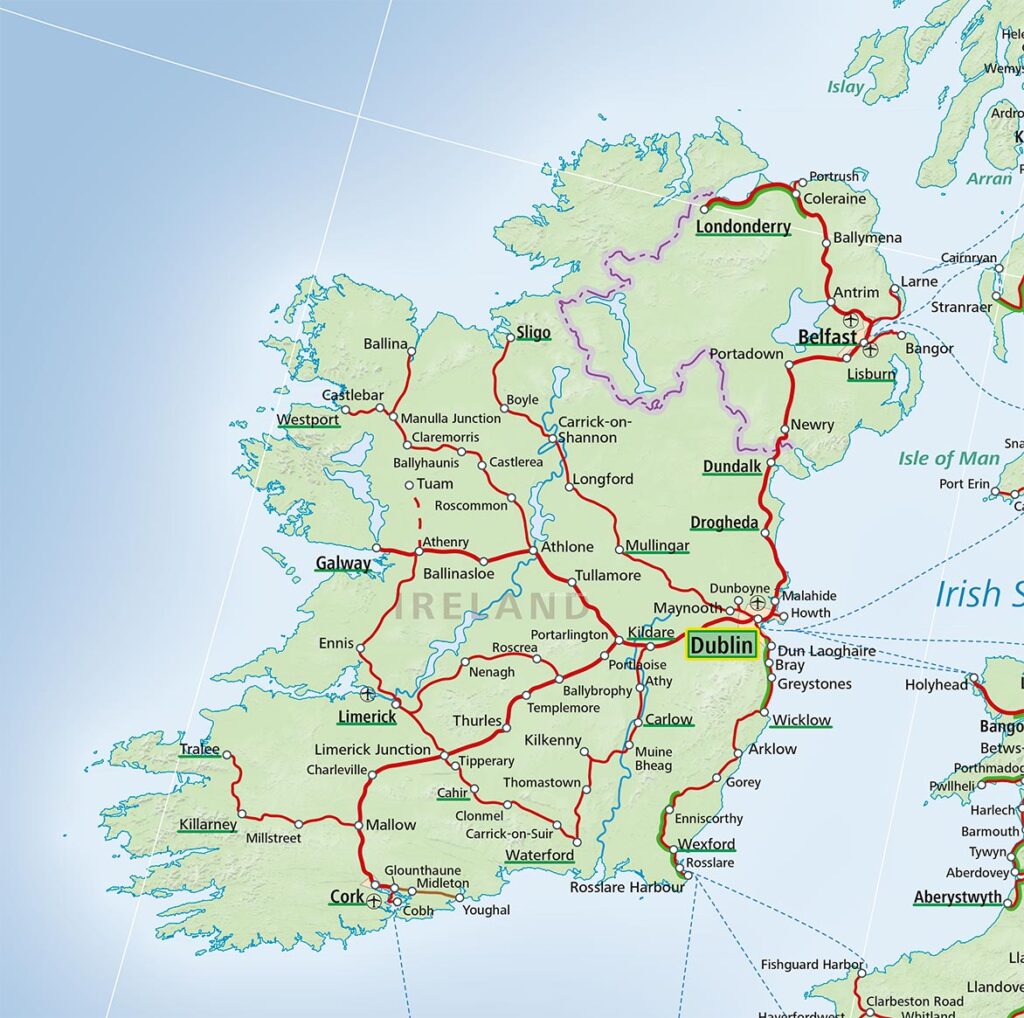
While the train network doesn’t reach every part of Ireland, travelling between major cities and towns is convenient. To explore more remote locations, you can always take a bus tour from those major cities, such as a trip to the Cliffs of Mohr and Aran Island from Galway . I highly recommend taking the train to Galway and seeing that city and then making a day trip, over only staying in Dublin and making all your day trips from there. You’ll spend so much time on the bus, and by taking the train, you’ll still be able to explore some of Ireland’s great cities!
What to Eat in Ireland?
When I came back from Ireland, many people asked me about my trip and were SHOCKED when I reported that one of my trip’s best parts was the food. There has been a persistent stereotype that Irish food is all about potatoes and stews. However, the image of Irish food as bland, basic, and lacking in variety stems from times of poverty and food scarcity. Ireland was an agricultural society for much of its history, and large portions of the population were poor, particularly after the Great Famine. The diet of the average Irish person was very simple and revolved around staples like potatoes, oats, and root vegetables. While nutritious, these ingredients didn’t lend themselves to exciting or diverse culinary traditions.
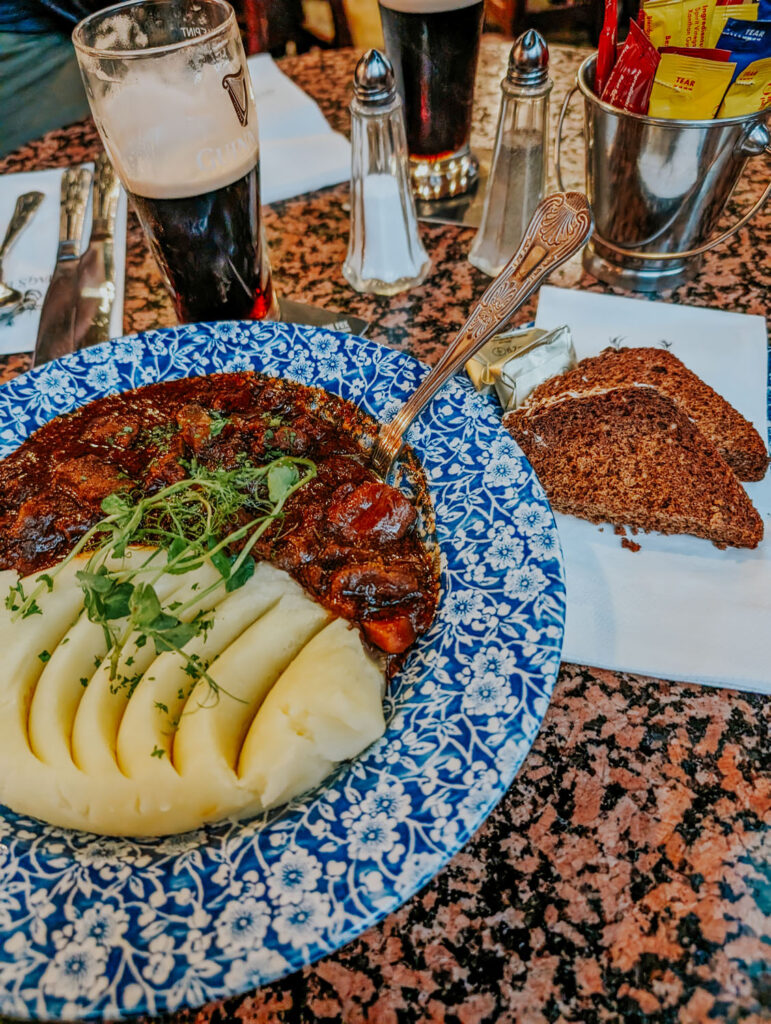
But much of this has changed over time, not just in the big cities! Ireland is now celebrated for its high-quality, locally sourced ingredients , including some of the world’s best dairy , beef , and seafood . The emphasis on farm-to-table dining and fresh, seasonal produce has elevated Irish cuisine. Ireland’s restaurant scene has flourished, with many chefs focusing on modern Irish cuisine that draws from traditional ingredients but with creative and contemporary twists. Cities like Dublin , Cork , and Galway are home to Michelin-starred restaurants , and talented chefs are helping to redefine Irish food on the world stage. Our trip took us to so many coastal villages, and the seafood we had was OUT OF THIS WORLD! The crab bisque I had in Dingle was probably the best of my life.

Check out my blog post on the best foods to try on your next trip to Ireland!
Eating Gluten-Free in Ireland?
Ireland is also one of the most accessible cities to travel to if you have a gluten allergy . Ireland has one of the highest rates of coeliac disease in Europe. Coeliac disease is an autoimmune condition where gluten (found in wheat, barley, and rye ) triggers severe digestive issues. Due to this higher prevalence, there is a strong demand for gluten-free options nationwide. As a result, many restaurants, cafes, and supermarkets have adapted to cater to people who need gluten-free diets, making gluten-free food widely available. On almost every menu, you would see an extensive list of allergens in each dish, and I was so impressed at how easy and accessible this made ordering food if you suffer from allergies. Even in the small towns , we saw them making lots of accommodations, so never hesitate to ask !
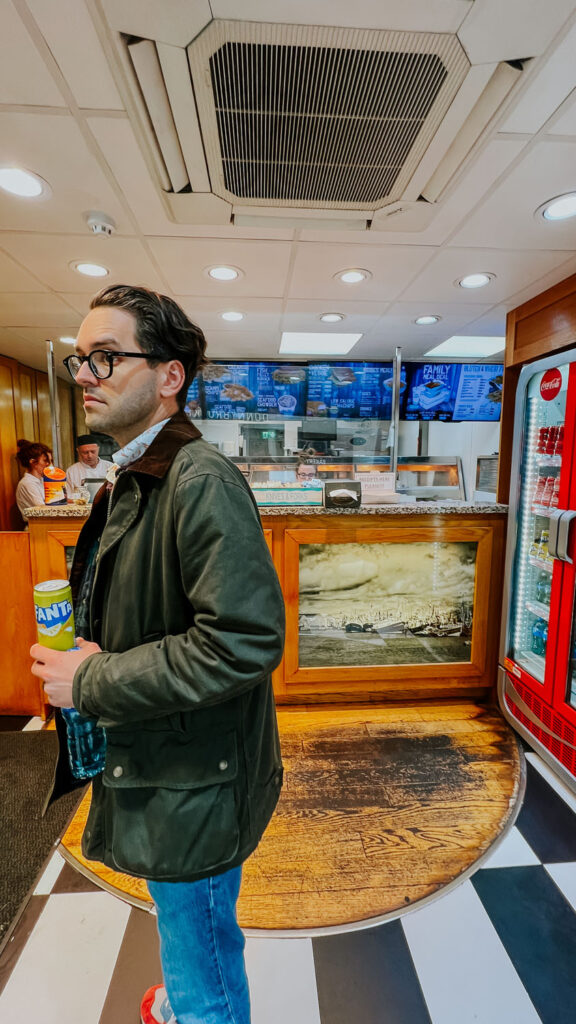
Enjoy the Craic!
Craic (pronounced “crack”) is a uniquely Irish term that refers to the spirit of gatherings filled with good times , fun , and lively conversation . Craic is more than just having fun—it’s about the social connection that happens when people come together, friends and strangers , to share stories , music , and laughter , especially in informal, welcoming environments like pubs . You might hear phrases that describe the level or quality of craic:
- “ Great craic “: A fantastic time, lots of fun and laughter.
- “ The craic was ninety “: A colloquial way of saying it was at its peak or exceptionally fun.
- “ No craic “: A disappointing or dull time.
- “ What’s the craic? “: A common greeting meaning “What’s going on?” or “What’s the news?”

In Ireland , craic often goes hand-in-hand with traditional Irish pub music sessions . The atmosphere created by live music , singing , and sometimes dancing is a big part of what makes the craic so enjoyable. Galway has named itself the so-called “Capital of Craic” because of its love for music and nightlife. I found the best craic in intimate pubs in the small towns where we stayed. When you check into your bed and breakfast , ask the owners where their favourite place to go for craic is. You’ll immediately find the best local spot for great music and meeting new friends .
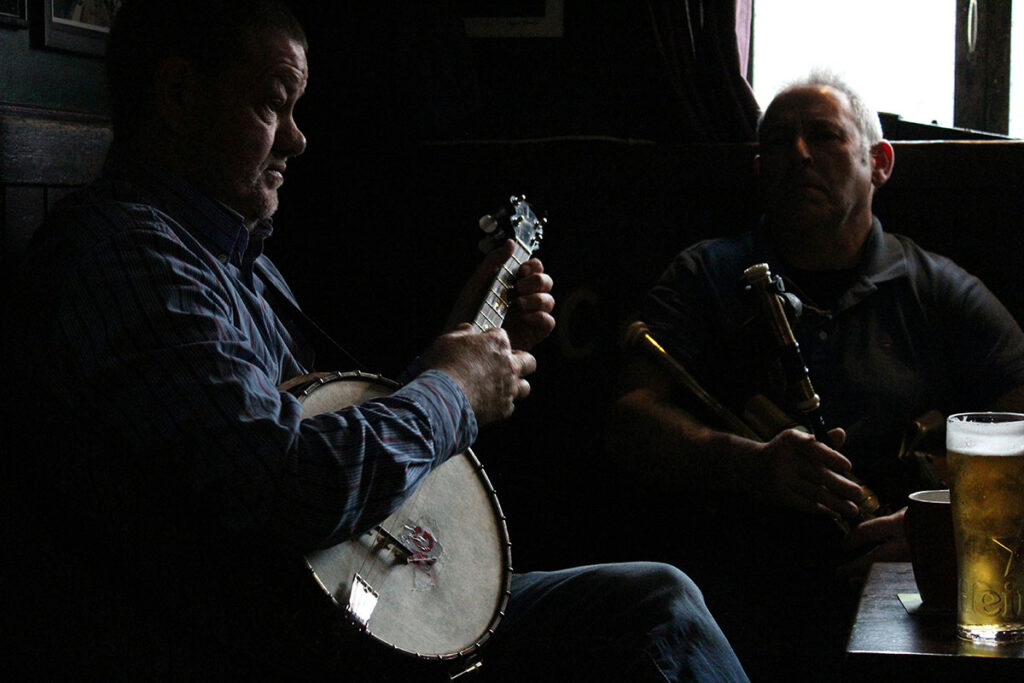
Advice on Visiting the Cliffs of Moher
The Cliffs of Moher is one of Ireland’s most iconic and breathtaking natural attractions , rising dramatically from the Atlantic Ocean , reaching heights of up to 214 meters (702 feet) and stretching for about 14 kilometres (9 miles) along Ireland’s western coast in County Clare . The sheer drop and rugged cliff faces make for some of Ireland’s most awe-inspiring coastal views , especially on a clear day.
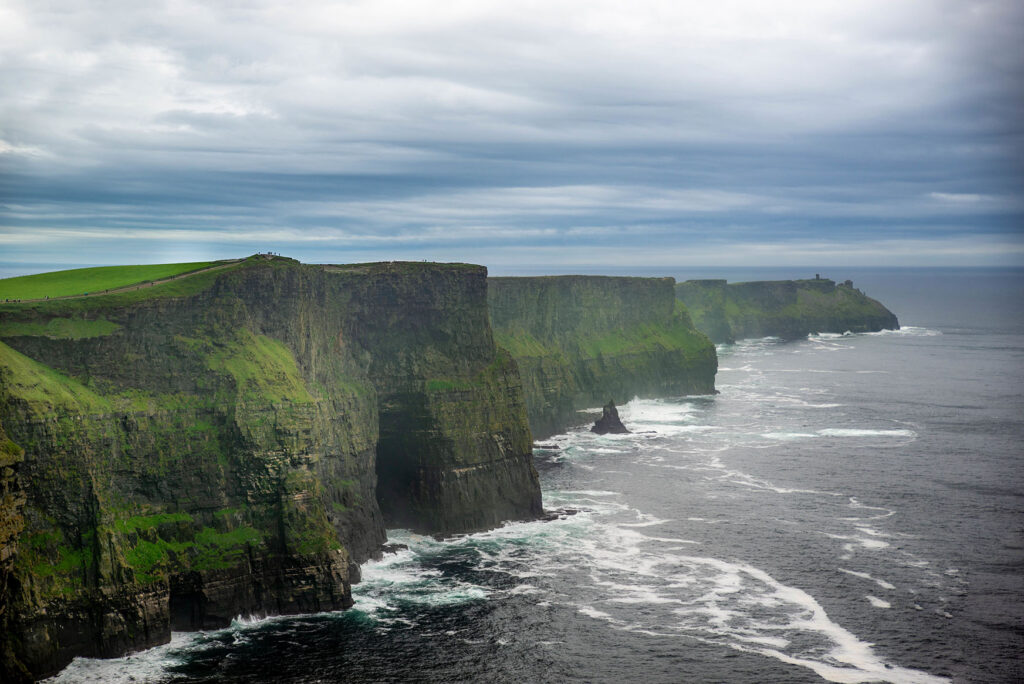
Check the Weather
But, as many travellers who’ve been to Ireland before have encountered, the weather in Ireland is rarely clear. Many disappointed travellers have made the long trek to the Cliffs only to be disappointed when they are barely visible through the fog and the rough winds blow so forcefully you’ll barely be able to walk, let alone stroll long enjoying the scenery along the cliffs. Visiting on your own , compared to a tour group , lets you wait out the weather in your car before heading to the cliffs if necessary. Regardless of the weather, I always advise bringing a packed lunch to enjoy while waiting out the weather in your car or picnicking on the cliff’s edge to soak in that scenery. But remember, while the cliffs are dramatic and stunning, they are also very high and exposed to strong winds . Stay within the designated safe areas , and be cautious near the edge . Venturing too close to the cliff edge can be dangerous, as parts of the cliff can be unstable or slippery in wet conditions.

Parking at the Cliff of Moher
As one of Ireland’s top tourist attractions , the cliffs can get quite crowded , especially during peak tourist season (summer) or midday. Parking is a headache during high season . Although a large car park is available at the Cliffs of Moher visitor center , and all-day parking is included in the price of the visitor center ticket, even this paid lot can get full very quickly. If you book an off-peak ticket online , the prices cost €8 per adult (children are free) or €4 per adult .
You can park at Guerin’s Path , about 1km from the visitor center, for €5 per person to find alternative parking. You can also park near Hag’s Head , the southernmost point of the cliffs, where there’s a small car park with a €2 honesty box , and it’s just a 10-minute walk to the cliffs. If you’re willing to walk a bit more, you can also park in the nearby villages of Liscannor or Doolin .
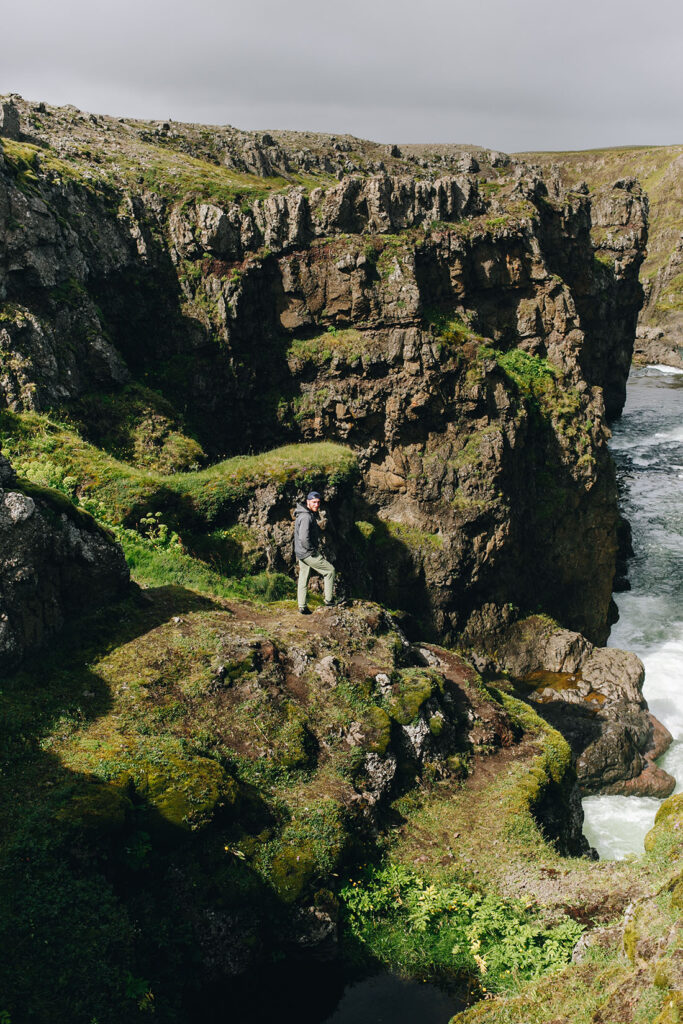
Other Tips for Visiting the Cliffs of Moher
While the visitor center and main viewing platforms offer excellent views, the real magic of the cliffs can often be found further along the coastal paths. Consider walking along the Cliffs of Moher Coastal Walk , which stretches from Doolin to Liscannor . This route provides spectacular views without the crowds. If you love birdwatching, bring binoculars , as the cliffs are home to large colonies of puffins , guillemots , and other seabirds during the nesting season (April to July).
One of the most beautiful times to visit the Cliffs of Moher is sunset, when the light softens, and the cliffs glow with warm golden hues. The area is also much less crowded in the evening, with many of the tour buses having already gotten back on the roads, heading back to Dublin and Galway, offering a more peaceful and personal experience.
Alternative to the Cliffs of Moher, Slea Head Drive in Dingle
If the touristy nature of the Cliffs of Moher isn’t your thing and you’re looking for an excellent alternative , you need to make a point to visit Dingle and take the stunning Slea Head Drive . Dingle was, without a doubt, my favourite place we visited in Ireland. It is well worth at least two days exploring the Dingle Peninsula and its amazing rugged coastal scenery , complete with dramatic cliffs . The Slea Head Drive is a scenic loop that takes you along the westernmost edge of the Dingle Peninsula, offering breathtaking views of the Atlantic Ocean , the Blasket Islands , and the Wild Atlantic Way . The cliffs along this drive are as impressive as any in Ireland, and you’ll encounter numerous scenic viewpoints , including stops at places like Coumeenoole Beach and Dunquin Pier . The drive is not just about the cliffs but also about immersing yourself in the beauty of mountainous landscapes , green fields , and coastal vistas . Dunmore Head is the westernmost point of mainland Ireland. The cliffs here are rugged , and the views over the Blasket Islands and the vast Atlantic Ocean are spectacular. The area is perfect for hiking or a quiet stroll, allowing you to take in the dramatic coastal scenery without the large tourist crowds of the Cliffs of Moher.
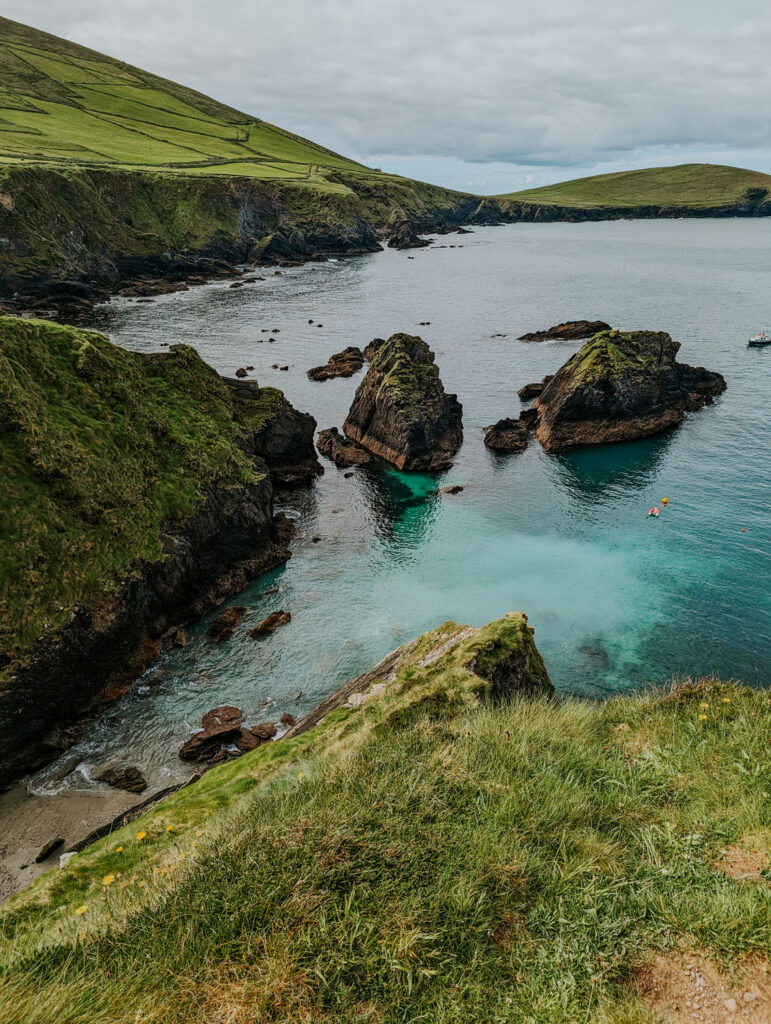
Gaelic is the Second Official Language
Gaelic (Irish) is the second official language of Ireland. Gaelic holds a significant place in the country’s cultural identity and heritage and is still spoken as a first language in some rural areas, particularly in regions known as the Gaeltacht , which includes parts of counties like Donegal , Galway , Kerry , and Mayo . Road signs often prioritize the Irish language, so don’t be surprised if you repeatedly see the word “Go Mal” as you make sharp turns, which means “Go Slow.”
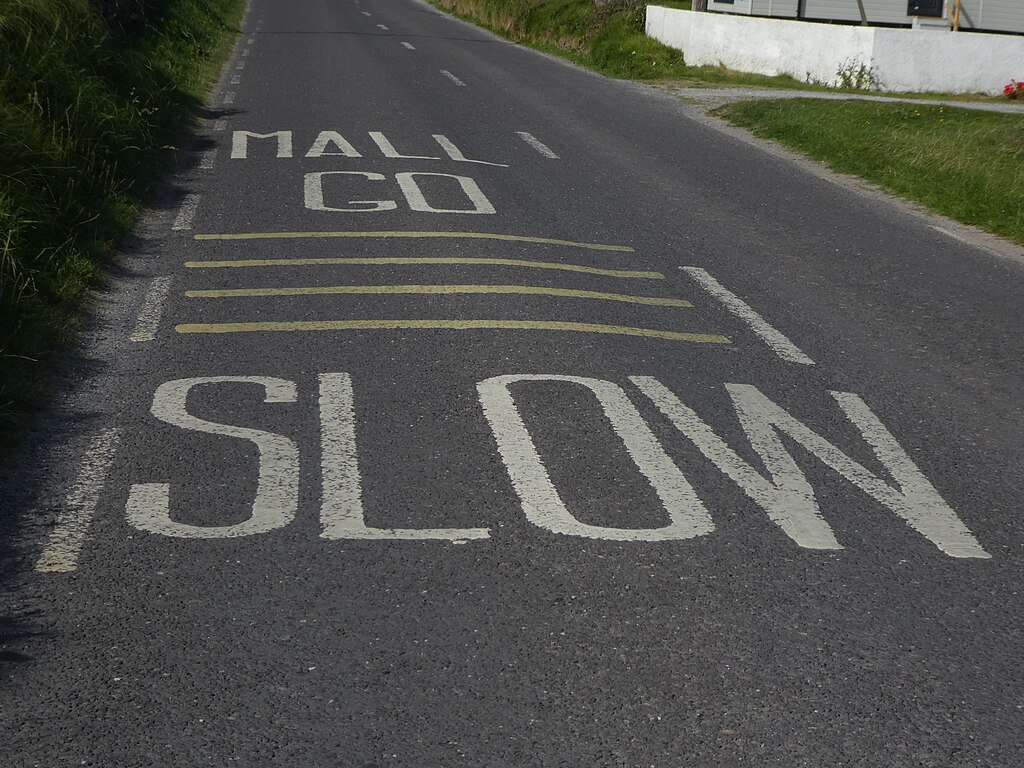
Discover the Stone Circles
Stone circles in Ireland are ancient megalithic monuments , typically consisting of large stones arranged in a circular or oval pattern . Though some may be older, these fascinating structures date back to the Bronze Age (circa 2500–500 BCE ). While their exact purpose remains somewhat mysterious , it is widely believed that they were used for ceremonial , religious , or astronomical purposes . Many of these stone circles are aligned with significant solar events , such as the summer solstice or equinoxes , suggesting that ancient people used them to track celestial movements .
View this post on Instagram A post shared by Thin Places Mystical Tours (@thinplaces_tours)
One of the easiest Stone Circles to visit is the Kenmare Stone Circle in County Kerry, near the famous Ring of Kerry Drive. This smaller stone circle, often called the Shrubberies, offers a peaceful, easily accessible site for visitors. A more off-the-beaten-path stone circle located in one of the most incredible landscapes is the Cashelkeelty stone circle. The walk to the stone circle is not too long from the parking lot, but this peaceful walk through the forest allows you to connect more deeply with the landscape, giving you the best chance to have a special moment when visiting the stones.
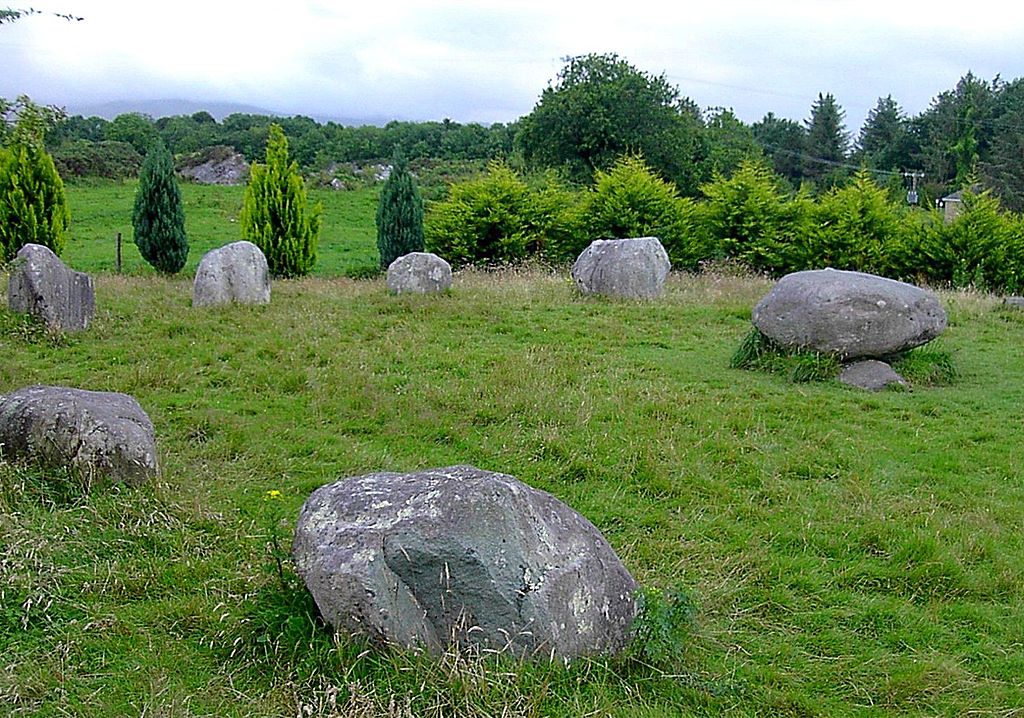
Tips on Visiting the Giant’s Causeway
If you’re planning to visit the Giant’s Causeway in Northern Ireland, one important tip to remember is that you don’t need to go through the Visitor Centre to enjoy the incredible natural wonder. The Visitor Centre, while modern and informative, functions largely as a gift shop and exhibit space and charges an entry fee. However, access to the actual Giant’s Causeway site and the surrounding UNESCO World Heritage Site is free , so you can avoid the fee by bypassing the Centre altogether.
The main walking path to the Giant’s Causeway is beside the Visitor Centre. Instead of entering the Centre, you can simply take the path around it and follow the signs that lead directly to the famous basalt columns. Another free and scenic route is walking down the causeway via the beach. Not only does this offer stunning coastline views, but you’ll also avoid crowds often congregating near the Visitor Centre.
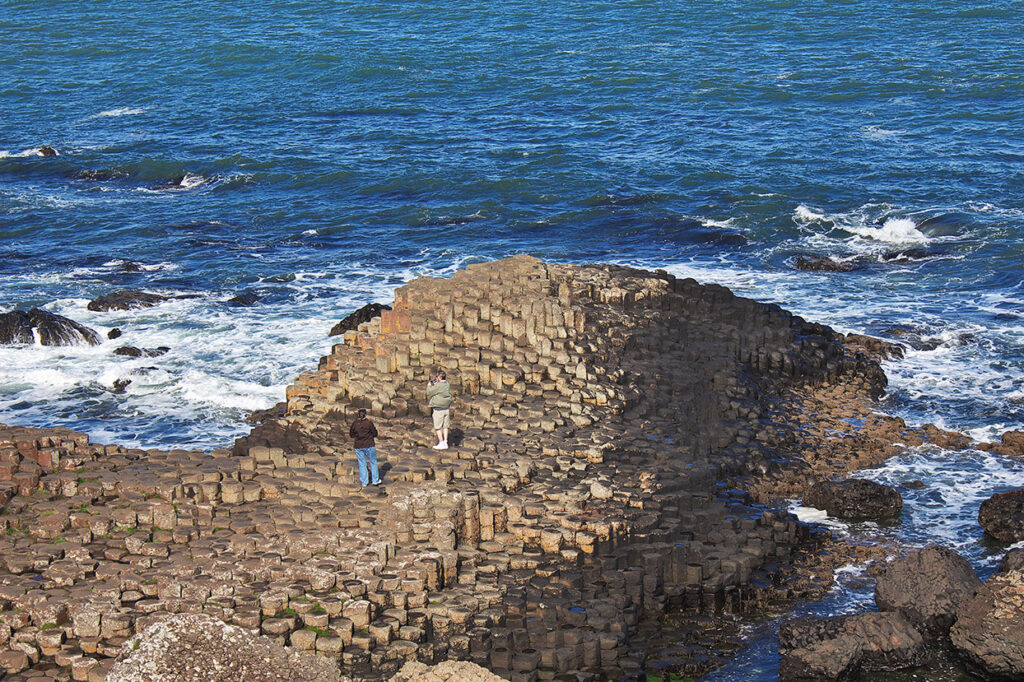
Grab Gas Station Irish Breakfast Roll
One of the biggest surprises we had was exploring the gas stations whenever we stopped to fill the tank. Gas stations , or petrol stations as they’re called here, are more than just places to refuel your car —they can also be a great place to grab a quick, affordable, and tasty meal . They often have freshly prepared meals , including breakfast rolls , hot sandwiches , soups , and pastries . Irish gas stations take pride in providing hearty food to cater to locals and travellers , and the food quality is often much higher than expected.
My favourite on-the-road breakfast became an Irish breakfast roll from the gas station. The breakfast roll is packed with sausages , rashers (bacon) , eggs , black and white pudding , and sometimes hash browns —all served inside a soft roll . It’s a filling , delicious , and affordable option that can set you up for a full day of exploring. And don’t forget to grab a few packs of brown sauce , a classic condiment in Ireland. And all the bathrooms I found along the way in these gas stations were super clean , which made every stop an absolute pleasure.
View this post on Instagram A post shared by Small Talk Bar & Kitchen (@smalltalkwaterloo)
How to Get a Bus to Stop
Although this is more common in Europe , coming from North America , where buses will automatically stop at every bus stop, I had to learn the hard way that, in many cases, you do need to put your hand out to signal that you want to board a bus in Ireland , particularly in urban areas like Dublin or smaller towns where buses won’t stop unless a passenger signals them . Otherwise, the bus may pass by, assuming no one is getting on. When you’re on the bus and want to get off at the next stop, most buses have a “stop” button you can press, which signals to the driver that you’d like to get off at the next available stop. Also, be aware that many buses will not accept cash or give change, so buy your tickets from the station to avoid getting booted off the bus!
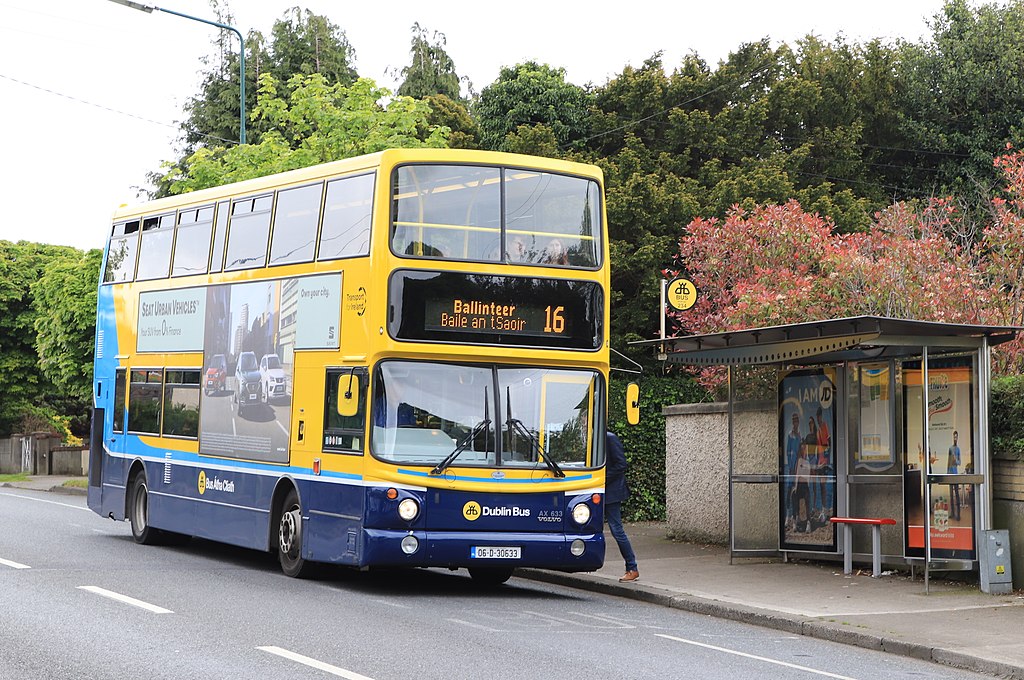
Blarney Castle is more than just the Stone.
Blarney Castle , located near Cork in southern Ireland, is probably one of the most famous sights in Ireland. This famous medieval stronghold dates back to the 15th century and is best known for the Blarney Stone , which is said to give those who kiss it the “ gift of eloquence ” or the ability to speak persuasively. Visitors must climb a steep, narrow staircase to reach it and lean backward over a gap (with assistance) to kiss the stone.

But they don’t tell you that the wait time to kiss the Blarney Stone is often the longest part of the visit, especially during peak tourist season (summer months). Depending on the time of year and day, the wait can be anywhere from 30 minutes to 2+ hours. The queue forms at the tower’s base and moves up a narrow spiral staircase. We got in line early in the morning , and our wait was over an hour. And the winding staircase up to the stone is boring, without much to see or entertain you. So bring a book or podcast, or spend the time catching up on your Instagram posts!
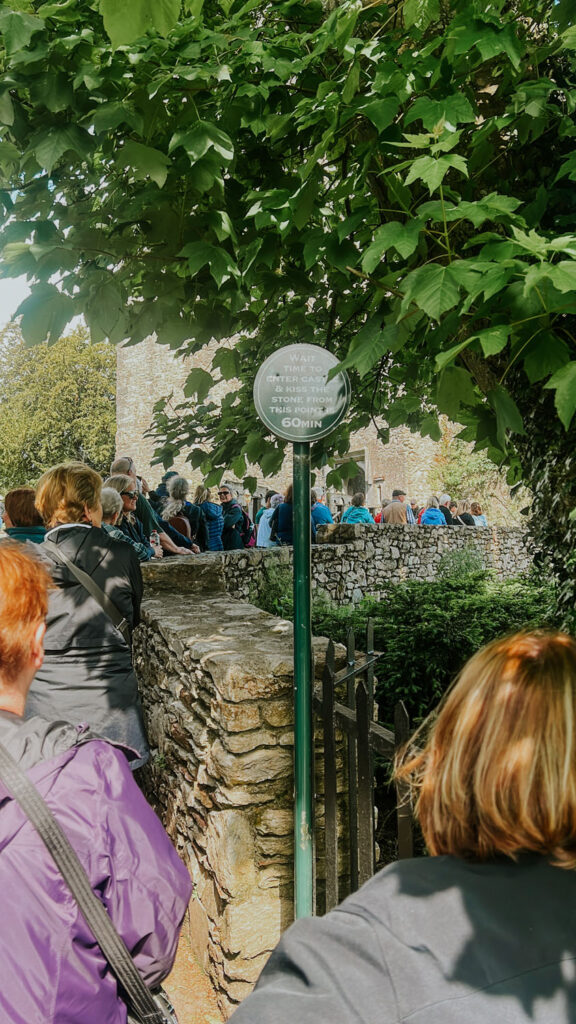
But honestly, if you come to Blarney Castle with limited time , consider not waiting in line and giving it a miss. I know, I know, “blasphemy!” you might say. But I watched so many visitors, mainly on time-sensitive bus tours , who were waiting in line, kissing the stone , and had to get right back on the bus. And they missed out on the best parts of visiting the castle. The castle is set amid beautiful gardens and offers visitors a glimpse into Ireland’s rich history and folklore . The land is believed to have been a sacred site for the Druids long before the medieval structure was erected. The Druids , the learned class of ancient Celtic societies , were known for their spiritual practices , closely tied to nature , the seasons , and sacred places . Several areas around Blarney Castle reflect these ancient connections, including the Rock Close (Druid’s Circle), Wishing Steps , and the Witch’s Kitchen . Missing out on exploring these places allows you to experience the spiritual energy and mystery of Ireland’s ancient past .
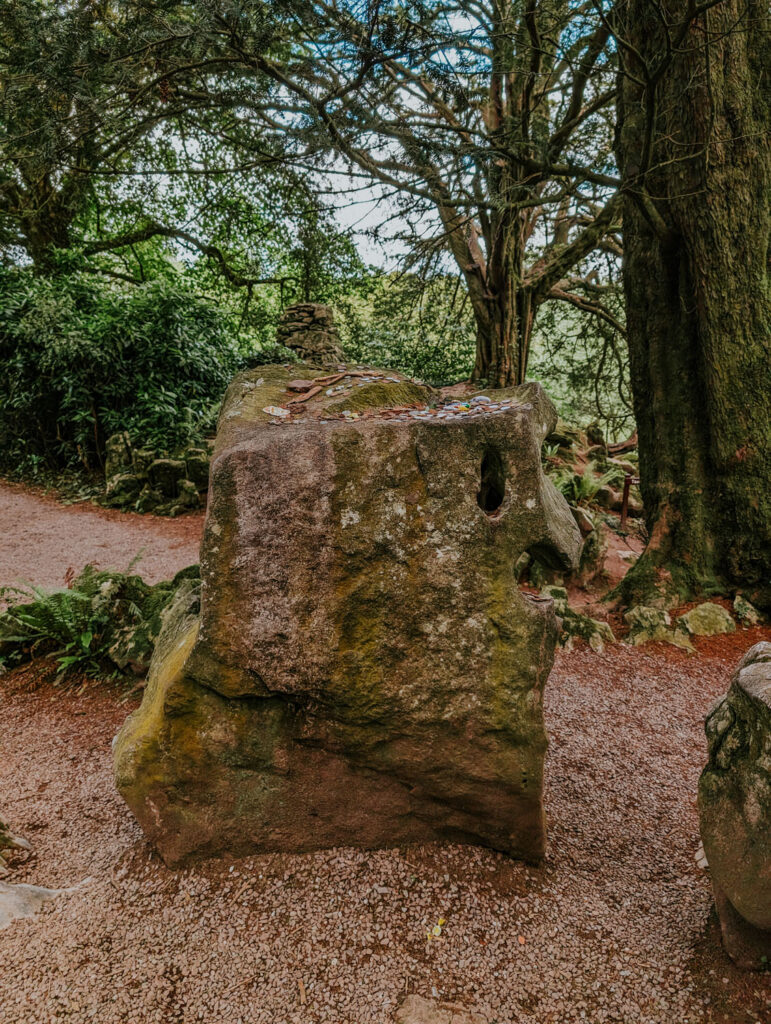
What to Know Before Buying Irish Wool Products
Irish wool is famous for its exceptional quality, warmth, and durability, largely due to the rugged climate in which the sheep are raised. Wool from breeds like the Irish Galway and Donegal sheep is known for its thickness and resilience, making it ideal for crafting traditional garments such as Aran sweaters . These sweaters are functional and steeped in Irish cultural history, featuring unique patterns that represent Irish heritage.

Purchasing wool from trusted vendors or shops specializing in Irish wool is important, as some souvenir shop sweaters might be manufactured elsewhere. Look for labels that say “Made in Ireland” or “100% Irish Wool.” Brands like Avoca , Blarney Woollen Mills , and Aran Sweater Market are popular and reputable for purchasing Irish wool products. And consider purchasing from smaller, local businesses or artisans who craft their wool products by hand.
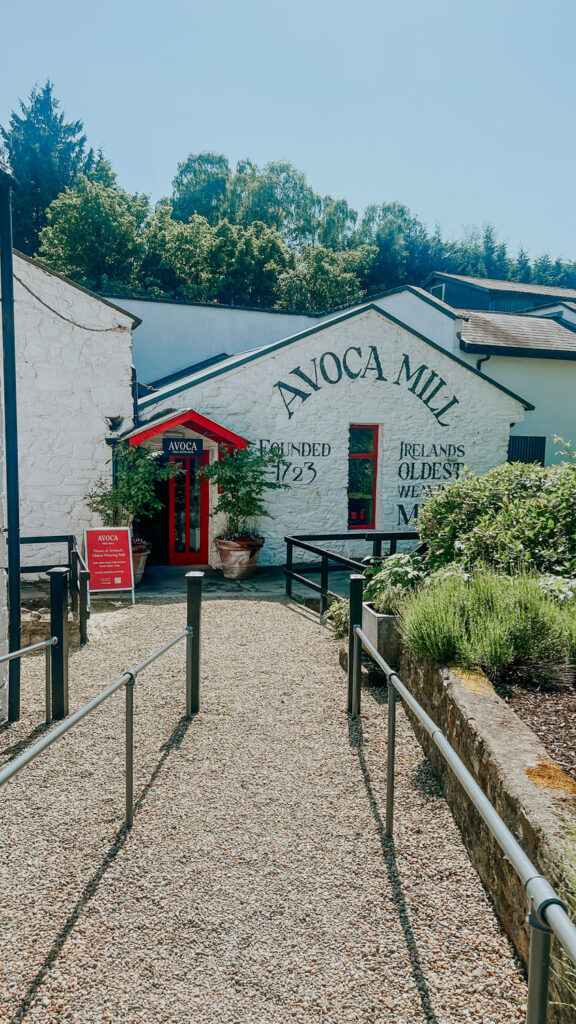
Authentic, handcrafted Irish wool products, especially those made by local artisans, will cost more than mass-produced items. Aran sweaters, for instance, can range from €80 to €300 depending on where and how they’re made. There are two types of Irish wool. The first is Merino Wool, which is softer and less itchy than traditional wool and Aran Wool, which is thicker than traditional Irish wool, made into iconic cable-knit patterns which tend to be warmer and more durable but may feel coarser than other wools.

Don’t Forget Your VAT Refund
When buying Irish wool products or other expensive goods in Ireland, non-EU residents can often claim a tax refund (VAT refund) . Ireland’s VAT rate on goods, including wool products, is 23% , so it’s no small fee that really adds up along the way. Look for stores displaying signs like “ Tax-Free Shopping ” or “ VAT Refund “. These stores are registered to participate in the tax-free shopping refund . Ask the shop if they offer VAT refund forms when purchasing products. Some stores automatically provide these forms, while others may require you to request them. Usually, there is a minimum purchase amount to qualify for VAT refunds (e.g., €30 ), so check with the retailer. And be sure to keep all your receipts . There are different refund providers , and often, you can’t combine these forms, so you might have to keep track of which purchases go with which provider.
Before leaving Ireland or the EU , you must get your VAT refund form stamped at customs at the airport or point of departure. Present your receipts , purchased goods , passport , and completed VAT refund form at the VAT refund desk or self-service kiosks (usually found in major international airports). It might seem like a hassle if you aren’t spending too much money, but if you’re planning on bringing home lots of expensive wool products , you might save yourself money by getting the refund .
Buy Tickets in Advance
As mentioned before, Ireland , especially in high season , can be very busy, and buying tickets in advance for popular attractions is highly recommended. Some sites, such as Newgrange or the Book of Kells exhibit at Trinity College , have limited daily admissions . Purchasing tickets in advance ensures your entry and avoids disappointment, especially for attractions that sell out quickly . We saw many people getting turned away at the Book of Kells , and at Blarney Castle , the line to buy tickets was extremely long. Pre-booking tickets allows you to skip long lines and enjoy the site more than wait. Many attractions offer discounts or special rates for online bookings , so buying tickets in advance can save you money . Additionally, package deals for multiple attractions are often available online, providing more value for your trip .
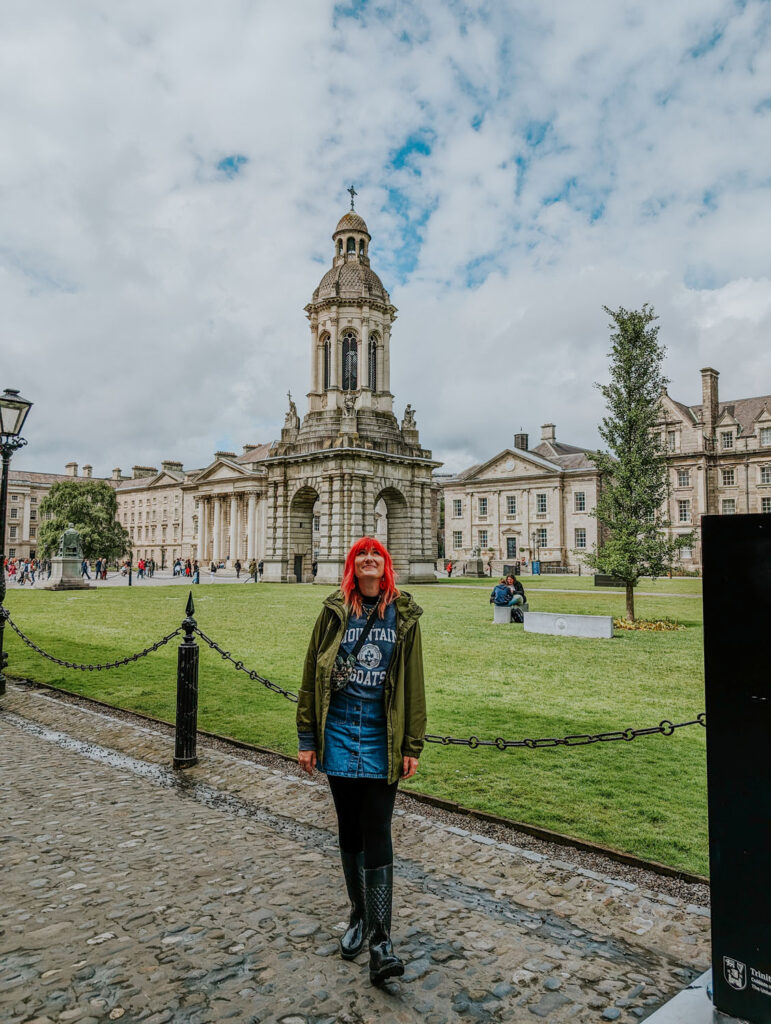
Have Tea over Coffee
I’m a coffee lover, and I start every morning with my trusty warm brew. And while I’m definitely not a coffee snob or aficionado, I did find the coffee in Ireland wasn’t the greatest . I had a few good lattes in cafes, but for the most part, in the B&Bs or even some restaurants, the coffee was never very good. But rather than complain, I opted to start drinking tea, as this is what Ireland is known for, after all!

Typically, Irish tea blends are black teas , often using a mix of Assam and Ceylon teas, giving it a robust, malty taste perfect for having with milk and sugar. Brands like Barry’s Tea and LyBarry’s are household names, with many Irish households brewing tea multiple times a day, whether for breakfast, a midday break, or just to keep warm on a cold day! I always felt so Irish drinking tea on a cold morning, looking out on the foggy green landscape stretching out in front of me!
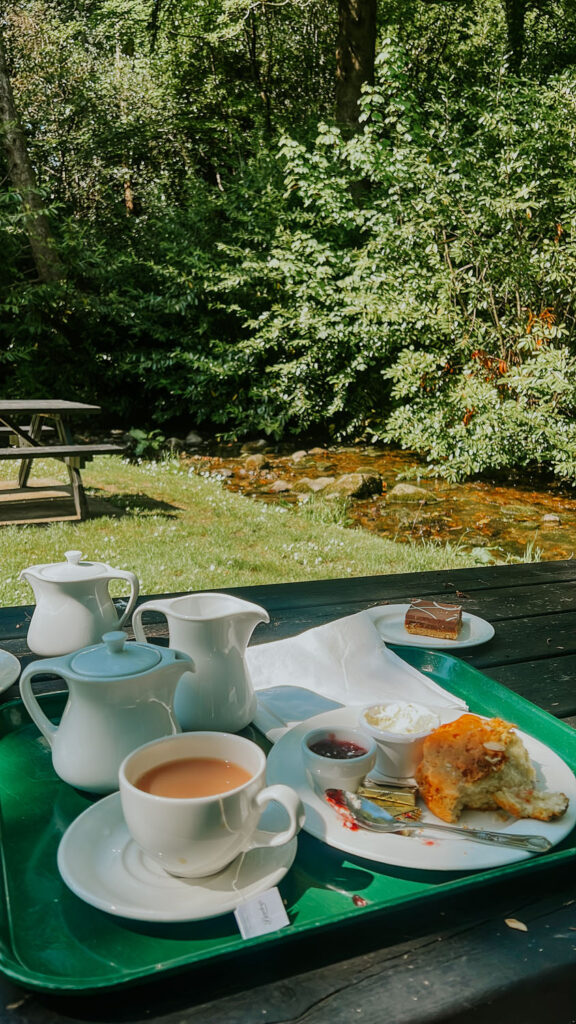
Don’t miss the Irish Beaches!
You might be thinking that the last thing I expected to be associated with Ireland was beaches, but honestly, the beaches in Ireland are one of its greatest hidden gems! Though Ireland is known for its green countryside , its beaches are equally captivating with their wild, unspoiled beauty. From the long stretches of sand at Inch Beach in County Kerry to the sandy dune of Brittas Bay, Irish beaches offer diverse scenery for beachgoers and adventurers alike. Even if it’s too cold to swim, Irish beaches offer views of the dramatic coastlines covered in golden sands and breathtaking views of the Atlantic Ocean.
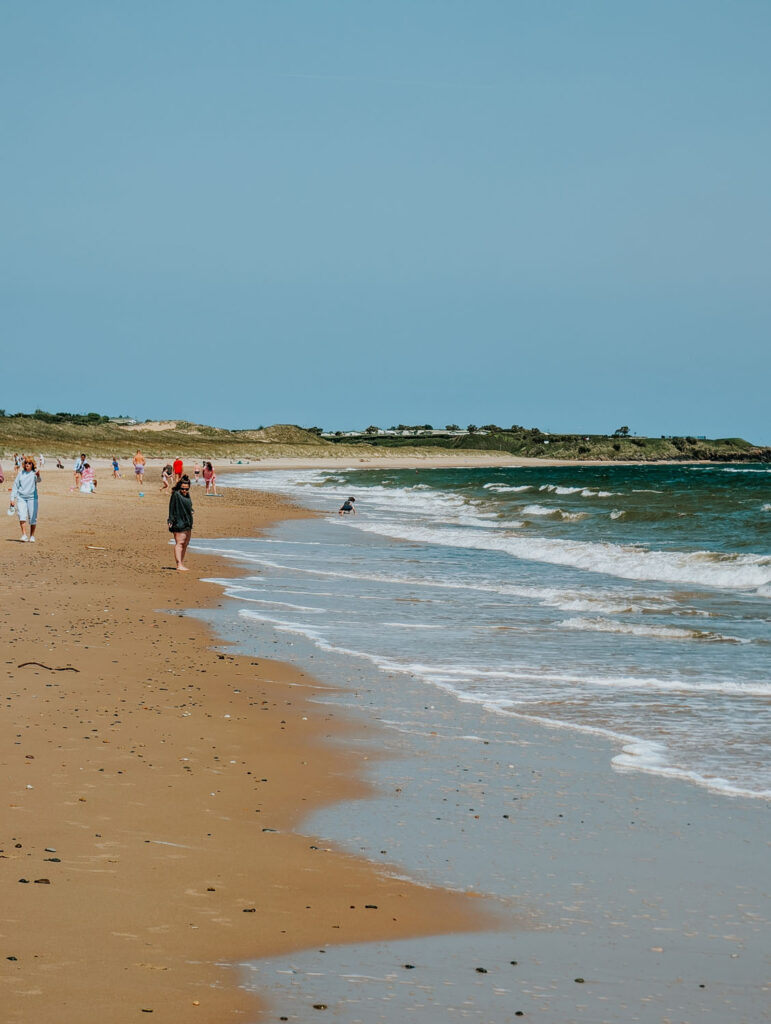
Despite the cooler climate, Irish beaches are popular for activities like surfing , especially along the Wild Atlantic Way , with spots like Bundoran and Lahinch drawing surfers worldwide. Many beaches, such as Ballycastle Beach in Northern Ireland and Curracloe Beach in County Wexford, have even gained recognition for their appearances in films like Game of Thrones and Saving Private Ryan .
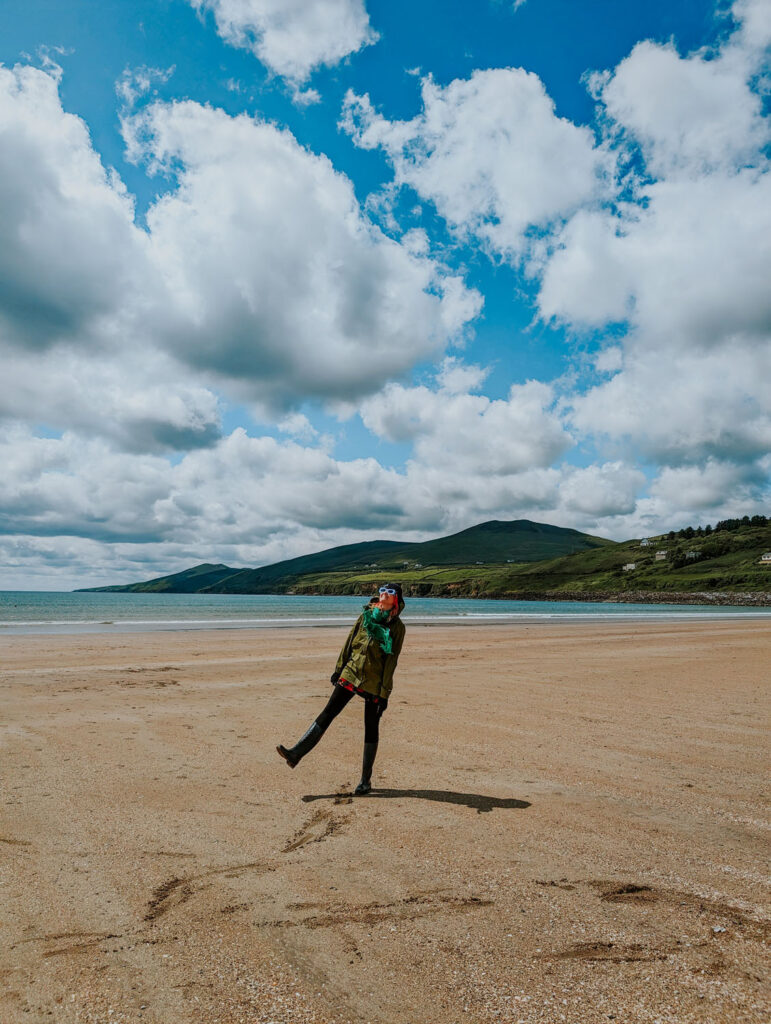
Grab Yourself a Spice Bag
The Irish spice bag is a beloved, relatively modern takeaway dish that has become an iconic part of Irish fast food culture. Originating in Dublin , this fusion dish combines elements of Chinese cuisine with a distinctly Irish twist. A typical spice bag consists of crispy shredded chicken (or sometimes pork), chips (fries) , fried onions , and peppers , all tossed in a spicy, salty seasoning mix. The seasoning usually includes a combination of chilli powder , five-spice , garlic salt , and paprika , giving it a bold and flavorful kick. While it’s most commonly seen at Chinese takeaways across Ireland, the spice bag has developed a cult following, especially for late-night eats or casual dining. The spice bag’s appeal lies in its crunchy texture , spicy flavour , and satisfying ingredients, making it a go-to option for those seeking a quick, tasty, and filling meal. Many places offer variations, with some adding extras like curry sauce or chilli flakes, further solidifying its status as a fast food favourite in Ireland. Even some of the more upscale restaurants have started serving an upscale version of this previously budget dish, which really shows how popular the food has gotten, making it a must-eat on your next trip!

Preparing for your trip to Ireland with these essential tips will help you make the most of this beautiful country. From navigating the unpredictable weather to embracing the local customs, Ireland has much to offer beyond the obvious tourist attractions. Whether you’re soaking in the breathtaking scenery, enjoying a pint in a cozy pub, or exploring the rich history and culture, taking the time to slow down and appreciate the charm of everyday Irish life will make your experience unforgettable. So pack your layers, bring an open mind, and prepare for an adventure filled with warmth, beauty, and craic!
Happy Travels, Adventurers!

« Unforgettable Glengoyne Distillery Whisky Tasting: A Detailed and Honest Review
The best irish driving tips: what you need to know », you may also like.
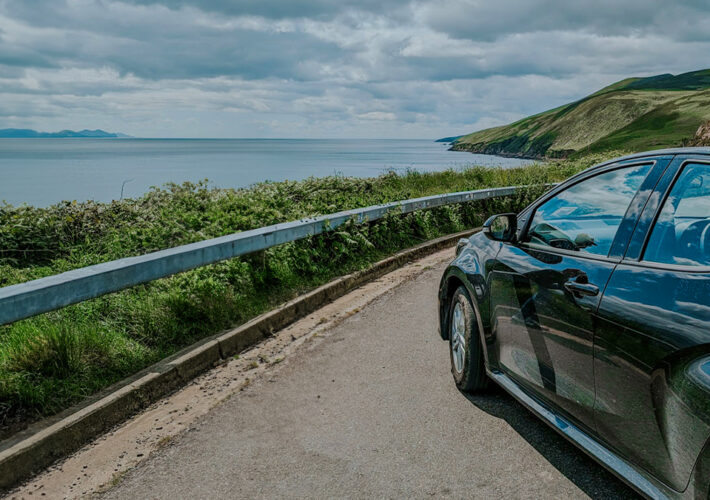
The Best Irish Driving Tips: What You Need to Know
Leave a comment cancel reply.
Your email address will not be published. Required fields are marked *
Copyright @ 2023 The Creative Adventurer | All Rights Reserved | Privacy Policy

- Northern Ireland
- Hurling & Camogie
- GAA Fixtures & Results
- Personal Finance
- Holidays & Travel
- Food & Drink
- Irish Language
- Entertainment
Belfast party bus operating without proper licence or insurance cover, court hears
Penalty points and £325 in fines issued.

Up to 15 women paid to be transported on a pink “party bus” in Belfast without the proper licence or insurance cover in place, a court heard on Tuesday.
The company which operated the vehicle and a driver were both convicted of offences following a Driver and Vehicle Agency (DVA) investigation.
Proceedings were brought against Belfast Party Crew Ltd, its director Darren Crozier, 39, and a third defendant, 50-year-old Glenn Keatings.
The case related to alleged failures to have a Public Service Vehicle licence and insurance for carrying paying passengers.

Northern Ireland MPs vote against winter fuel payments cut

New bypass to cut journey times to Donegal via Derry
A DVA examiner told Belfast Magistrates’ Court she carried out inspections while the bus was parked at Forthriver Road in the city on August 19 last year.
Another man got off the vehicle and informed her he was working for the company.
“He was quite forthcoming, that he was taking 15 girls into Belfast and he was paid to party with those girls,” she said.
One of the passengers showed a message and booking confirmation on her phone about arrangements for hiring the bus, cost per person and collection point.
“The name attached to the messages was Darren Crozier,” the examiner said.
Crozier, of Kylemore Bend in Newtownabbey, was charged with using a vehicle in a dangerous condition, and using a bus without a PSV or operators licences.
He did not attend Tuesday’s contested hearing, with travel and childcare commitments given as reasons for his non-appearance.
The court heard that Keatings, from Forthill Gardens in Newtownabbey, does hold a licence to drive a minibus.
But prosecutors argued it does not cover ‘hire and reward’ circumstances where passengers paid to be transported on the party vehicle.
A second DVA officer also recalled inspecting the vehicle in Belfast on the same day.
“It was a pink party bus covered in various writing, with dark windows and (inside) there was a dance pole with flashing disco lights,” she said.
Keatings, who represented himself, argued that he just picked the passengers up in the Glencairn area to take them to the company’s city centre shop as a “courtesy”.
“If I had known it was a hire and reward I wouldn’t have done it,” he insisted.
Claiming that other parties had not paid a legal bill to defend the case, the driver added: “I’m the idiot here that’s getting thrown under the bus.”
He also disputed claims that there was any pole fitted inside the vehicle.
“The only other bus that has a dance or lap dancing pole is no longer operating,” he said.
But District Judge George Conner convicted him of not having the correct licence or insurance for the bus and imposed penalty points and £325 in fines.
“I’m satisfied it was being used for hire and reward,” Mr Conner said.
Meanwhile, Belfast Party Crew Ltd, based at Royal Avenue in the city centre, was convicted of having no PSV or bus operators licence, and using a vehicle in a dangerous condition.
The cases against the company and Crozier were adjourned to next month for a further sentencing hearing.

IMAGES
VIDEO
COMMENTS
1. If you're visiting main cities/towns a car isn't needed. Most of the main towns and cities in Ireland, like Dublin, Limerick and Galway, are, for the most part, wonderfully walkable. You will, at times, need to use public transport, but a car is by no means necessary. 2.
The most obvious option to get around touring Ireland without a car is to join a group. Taking part in a group tour of Ireland has several advantages, and this is especially true if you're traveling without a car in Ireland outside of the major cities. Although Ireland is a small country, its highways congregate around the cities.
How to travel around Ireland without a car Pros and cons to travelling Ireland without a car Pros of navigating Ireland without car. 1 Avoiding expensive car rental fees. Renting a car in Ireland can drain your wallet, especially during peak travel months like July and August. Manual vehicles dominate the market, with automatics often costing a ...
Morning/Afternoon. Dublin is a fantastic place to begin your Irish exploration and to start your Ireland itinerary without a car because there are many exciting things to see. Take the Aircoach or a local bus from Dublin Airport to O'Connell. The journey takes around 30 minutes and costs €8.00 for a single journey.
1. Take the city bus for a cheap option. Most major cities in Ireland have buses that can take you to destinations within the city. Most bus tickets range from €2 to €3 per adult ticket. Use the bus to get across town or to and from the airport while you are in a major city.
Rambler Day Ticket. This works for Sundays only. The price is £9.50. The Bus Rambler Day Ticket gives you a hop-on, hop-off kind of service that allows you to explore Northern Ireland's most spectacular scenic areas with unlimited travel on Ulsterbus, Goldline, and Metro.
Traveling by Bus. By far, the most sensible, budget-friendly and convenient way to travel Ireland without a rental car is using the bus, in Dublin and nationwide. Cross country services are numerous and a variety of ticket options, though at times confusing, can make bus travel very economical. Connections between the major towns are generally ...
No one in my group was old enough to rent a car yet, so we needed to plan a trip where we were traveling Ireland without a car. However, getting around Ireland without a car was surprisingly easy. We were able to go to five different cities plus the Cliffs of Moher using trains, buses, and a one-day tour. Keep reading to learn about your ...
Discover the ultimate guide to exploring Ireland without a car. Uncover hidden gems, experience local culture, and make unforgettable memories on your Irish adventure. ... In this article, we've got all the insider tips on how you can travel around Ireland without a car. Whether you prefer hopping on public transportation, renting bicycles ...
Getting Around Dublin (Stress-Free 2024 Guide)
Eco-friendly. Exploring Ireland without a car is eco-friendly as it reduces carbon emissions and minimizes the impact on the environment. Using public transportation, cycling, and walking tours contribute to sustainable travel practices, supporting the preservation of Ireland's natural beauty for future generations.. Additionally, opting for non-driving options aligns with responsible ...
Here are the best ways to spend a week in Ireland without a car. Read here the best 7 day Ireland travel itineraries. Stick to the cities. Urban types who enjoy city stays will find comfort in the fact that Ireland's biggest cities are easily accessible via public transport.
Getting around Ireland without a car is completely doable. Plus, it might also be a considerable cost-saver since you won't be incurring the cost of a rental car and the added insurance you are required to take while driving around Ireland. Travel to Cork from Dublin on Irish Rail. Pictured here is Cork's Kent Train Station, Cork.
In the Ireland itinerary without a car, you'll see the highlights of the Emerald Isle. See the Cliffs of Moher, wander through Dublin, and so much more. ... And if you happen to have a rental car, I have a week long Ireland road trip for you. Car Free Travel: Ireland isn't the only place I've traveled car free in places where rental cars ...
Ireland without a Car Itinerary One: The 10-Day Ireland Trip to Dublin, Dundalk, and Donegal. This itinerary starts in perhaps the most famous Irish city, and one you'll definitely want to visit: Dublin. Dublin has its own airport so you will be able to arrive there with ease before exploring what the city has to offer.
For the best way to get around Ireland without a car, you have three main options. You can use public transport to get from place to place by either bus or train, you could fly to regional airports and use local public transport from there, or you could opt for cycling around Ireland.
10 day Ireland itinerary (without a car!) 2 nights in Dublin. 2 nights in Belfast, with a day trip to Giant's Causeway. 3 nights in Galway, with a day trip to Cliffs of Moher. 2 nights in Cork, with a day trip to the Ring of Kerry. A final night in Dublin before you fly home!
Due to exorbitant car-rental costs, more and more visitors are now getting around Ireland by train. Ireland's rail network offers reliable links between urban centers - and it's cost-effective, too. Irish Rail (known as Iarnród Éireann in Gaeilge, the Irish language) has slashed fares for users under 24. And the service offers good ...
Yes, you certainly can! The train is one of the best ways to get around Ireland without a car. Ireland as it has some of the most picturesque railway routes in the world. If a train is your preferred mode of transport because you love nothing better than gazing out over idyllic landscapes and beaches, then Ireland won't disappoint. The ...
Best Day Trips from Dublin Without A Car. 1. Day Trip from Dublin to Dun Laoghaire. ⏰ 30 minutes by DART (Dublin Area Rapid Transit) Dun Laoghaire is a stunning coastal town not too far from Dublin, making it an ideal destination for a short day trip. Reached by DART, an electrified commuter rail railway network, the town offers everything ...
Don't Spend too much time in Dublin. Exploring Ireland to its fullest means getting out of the city! Too many travellers fly in and out of Dublin without leaving the city!One of the biggest draws of Ireland is its stunning natural landscapes, which include rugged coastlines, green rolling hills, dramatic cliffs, and picturesque countryside.Spending too much time in Dublin means you might ...
Day 1: arrive in Dublin, explore Dublin. Day 2: Dublin. Day 3: morning train to Galway, explore Galway. Day 4: Cliffs of Moher, travel to Dingle. Day 5: Dingle. Day 6: Dingle, return to Dublin in afternoon. Day 7: fly out of Dublin in afternoon. As I will be traveling without a car, I am also looking for recommendations on how to see the Cliffs ...
From Dingle you will need to get a bus to Tralee, then to Limerick. Then change and get a bus to Galway. If you are determined to see the West Coast then perhaps look at taking a tour from either Galway or Limerick. Galway is probably best.
a week in Ireland without a car? - Rick Steves Travel Forum
Consider getting a Leap Visitor Card for unlimited travel on these services for 1, 3, or 7 days. As the capital of Ireland, Dublin has many great options for rental cars. From there, your epic Ireland road trip awaits you! Day Trip Idea From Dublin: Howth. ... Exploring Ireland without a car is possible but less convenient. Major cities like ...
Northern Ireland has been the slowest nation in the UK to reduce its emissions.. For most of us, the car is still the default option. On average, we each take 838 journeys a year, travelling ...
September 10, 2024 at 6:56pm BST. Up to 15 women paid to be transported on a pink "party bus" in Belfast without the proper licence or insurance cover in place, a court heard on Tuesday.